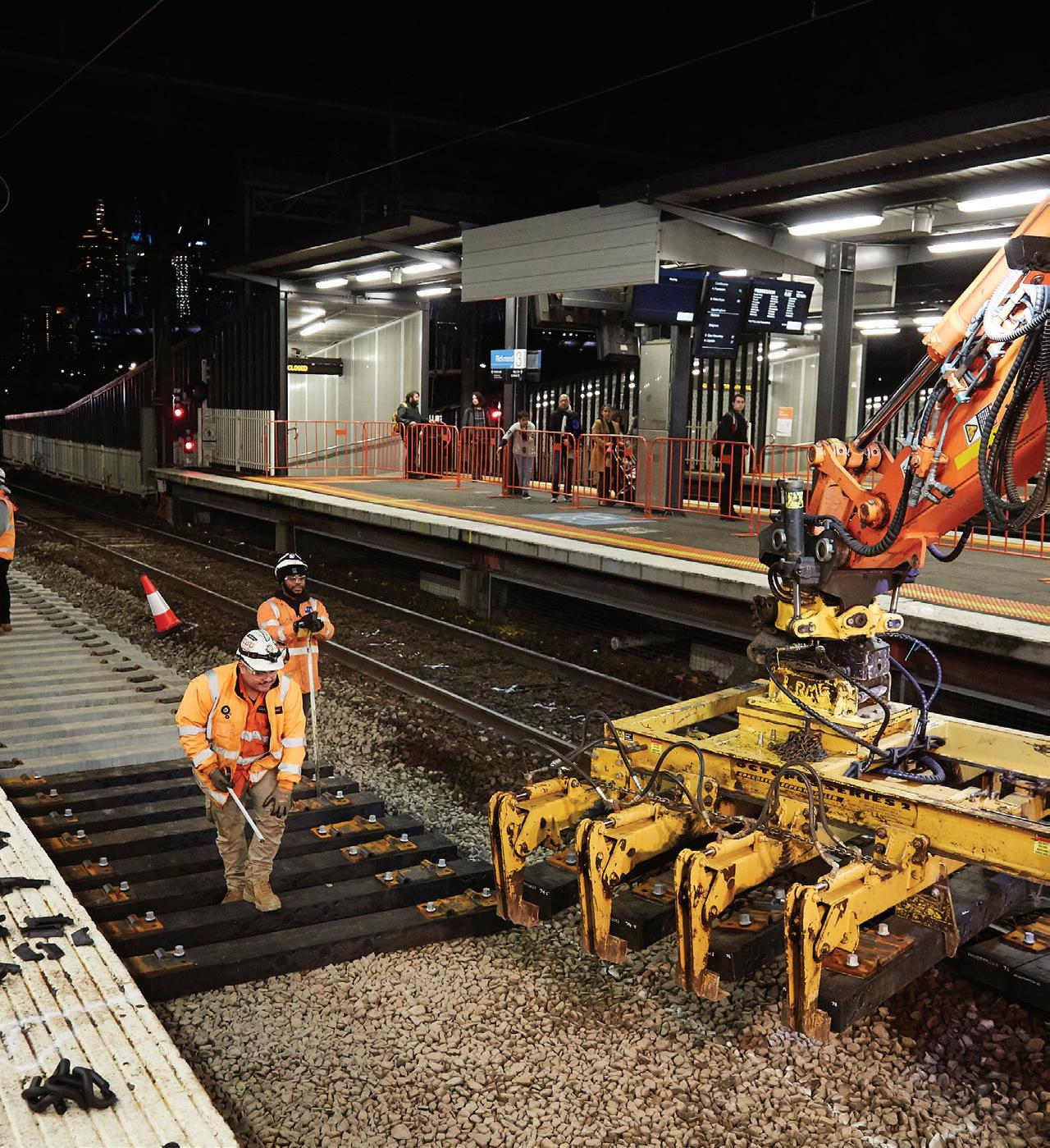
SLEEPERS
The Harbour Bridge’s corrosion laser technology
Recycling waste into RAIL
ZULU Issue 13 November 2019 ROAD - RAIL - AIRPORT - PORT - URBAN - UTILITY
CONSTRUCTING TAXIWAY
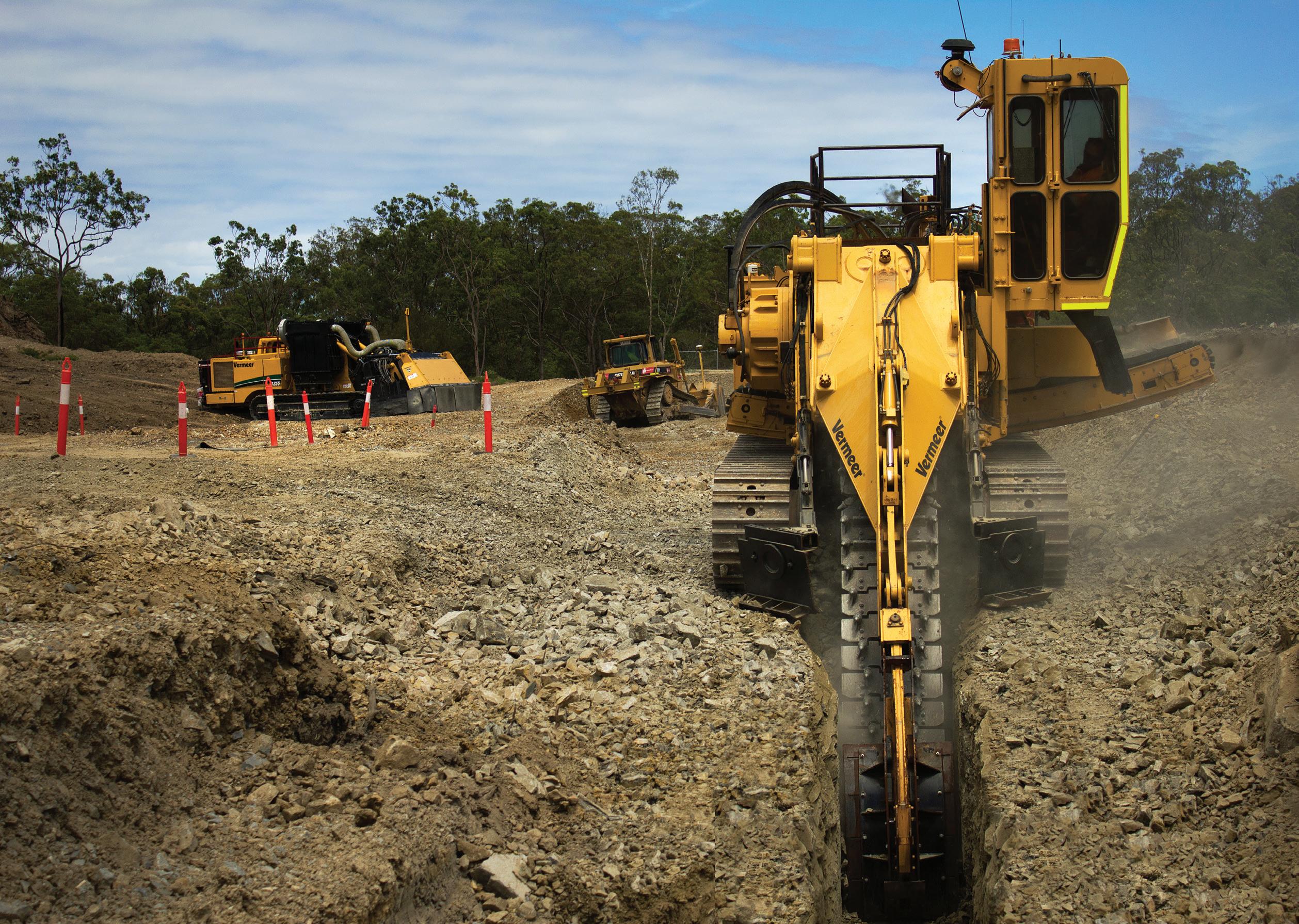
WE’RE PROUD TO BE THE SPECIALIST EQUIPMENT PARTNER OF THE CONTRACTORS THAT ARE LEADING THE WAY FORWARD. NORTH QUEENSLAND 671 Ingham Road Mount St John QLD 4818 QUEENSLAND 147 Archerfield Road Richlands QLD 4077 NSW & ACT 45 Eastern Creek Drive Eastern Creek NSW 2766 VICTORIA & TAS 415 Fitzgerald Road Derrimut VIC 3026 SOUTH AUSTRALIA 9-11 Hakkinen Road Wingfield SA 5013

Vermeer surface miners and track trenchers have been part of methodologies proven on numerous Australian infrastructure projects. Whether it’s lowering the bench in a road tunnel, a box cut for a train station, or trenching a comms channel, we have the equipment and team to support your project. Contact your local Vermeer team to learn more.
Australia
VERMEER.COM.AU | 1300 VERMEER Vermeer and the Vermeer logo are trademarks of Vermeer Manufacturing Company in the United States and /or other countries. © 2019 Vermeer Equipment Holdings Pty Ltd. All Rights Reserved. . / VermeerAustralia
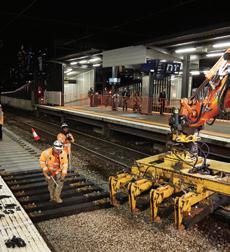

Monkey
ABN: 36 426 734 954
204/23–25 Gipps St Collingwood VIC 3066
P: (03) 9988 4950
F: (03) 8456 6720
monkeymedia.com.au info@monkeymedia.com.au infrastructuremagazine.com.au news@infrastructuremagazine.com.au
Editor Jessica Dickers
Assistant Editor
Kim Ho
Journalist
Business Development Managers
Alastair Bryers
Rima Munafo
Alejandro Molano
Designers
Jacqueline Buckmaster
Publisher
EDITOR’S WELCOME

Welcome to the last issue of Infrastructure for this decade. Yes, there’s only a few short weeks left before the new year, which is usually the time when the sector starts to not only reflect on 2019, but look forward to the next twelve months and beyond.
While the industry continues to grapple with challenges (and opportunities) around digital technologies, dealing with aging assets, and ensuring our skilled workforce has the capabilities needed, overall this has been a positive year. This is thanks, in part, to continued investment in new projects and upgrades across road, rail, airport and ports. Growth that is predicted to continue.
It’s a fine balance to ensure Australians are receiving the best transport and construction services today, while ensuring plans are in place to cater for future growth and change, but I’ve found this industry to always keep an eye on what’s next. As we move into a new decade, I’d love to hear your predictions for 2020 and beyond, and what you think the industry’s focus should be. Feel free to shoot me through an email with your thoughts or connect on LinkedIn.
But the year’s not over yet, we’re actually heading into events season with thought-leaders gathering for AusRail Plus, Airports National Conference and Corrosion and Prevention – all events the Infrastructure team will be attending. There continues to be huge strides forward in these three areas in particular, and this edition looks at a few of the major projects.
In rail we explore the Cross River Rail and Inland Rail, from construction updates to news around skills and training for the rail sector – an issue that’s still of concern but one that is being worked on by several key bodies. For an extended analysis and insight into Australia’s rail sector, make sure you are subscribed to Rail Monthly – Infrastructure’s digital magazine dedicated to all things rail. You can subscribe at infrastructuremagazine. com.au/railmonthly.
The airport sector is also making sure it has the assets needed to cater to population growth and customer expectations, with the new Western Sydney Airport, and significant projects at Melbourne Airport, Brisbane and Gold Coast, just to name a few.
Back at the Infrastructure office, we’re gearing up for the inaugural Disaster Management Conference, running from 21-22 November in Melbourne, which will help critical service providers prepare, survive and thrive in the face of major disaster events, something that sadly a lot of asset owners have had to face over the last few months.
As we close out the year, I wanted to say a big thank you to our team and to you for your support of the magazine and all our events. Every month we’ve been smashing our records for the number of visitors to the website and we are proud to be recognised as the go-to source for industry insights and updates.
See you in the new year.
Jessica Dickers Editor
Kirsty Hutton
2 November 2019 // Issue 13 www.infrastructuremagazine.com.au
Drop me a line at jessica.dickers@monkeymedia.net.au or feel free to call me on 03 9988 4950 to let me know what you think. Recycling waste into RAIL SLEEPERS The Harbour Bridge’s corrosion laser technology CONSTRUCTING TAXIWAY ZULU November 2019 ROAD RAIL AIRPORT PORT URBAN UTILITY INFRASTRUCTURE NOVEMBER 2019 TO BUILD every phase of construction. InEight software. infrastructure Published by
Media Enterprises
Lauren Butler
Design Manager
Danielle Harris
Chris Bland Managing Editor
Laura Harvey Operations Manager
ISSN: 2206-7906 8,648 This publication has been independently audited under the AMAA’s CAB Total Distribution Audit. Audit Period: 1 October 2018 – 31 March 2019
NOISE & VIBRATION
Acoustic absorption panels for wall and floor applications


• Non combustible systems with zero smoke emissions
• Durable & designed for quick, easy install
• Custom designed panels to suit all applications
• Internationally tested & certified for tunnel applications
• Manufactured in accordance to ISO9001
Pyrotek® provides innovative noise control products and tailored acoustic insulation solutions to designed specifications for global rail and infrastructure markets.
To find out more about Reapor and Viterolite or other products visit pyroteknc.com
PROTECT IN TUNNELS
Sydney Metro - Northwest Rail Tunnel

HEADING
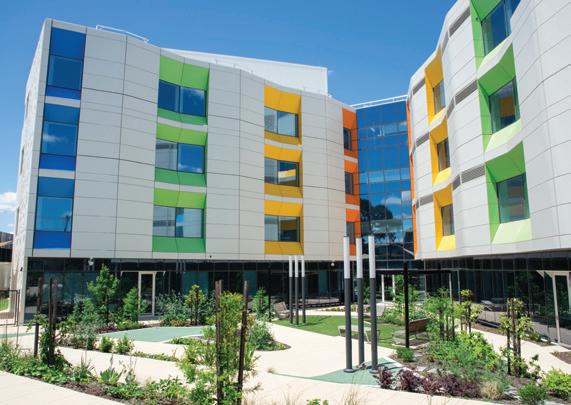
A WORD FROM INFRASTRUCTURE AUSTRALIA
A SPOTLIGHT ON SOCIAL INFRASTRUCTURE
Infrastructure Australia’s 2019 Australian Infrastructure Audit highlights the important role social infrastructure plays in our growing communities. However, as Chief Executive Romilly Madew AO explains, the ease of access, quality and cost of social infrastructure varies across the country.
INDUSTRY INSIGHTS
BETTER DOCUMENT CONTROL HELPS KEEP SYDNEY MOVING
As cities around the world grow, so does the challenge of keeping traffic moving, especially during peak hours.
SEEING DOUBLE: THE RISE OF DIGITAL TWINS
Digital twins – virtual replicas of physical objects and systems – have huge potential across many industries, including infrastructure, to improve efficiencies, cost and safety. The data and digital specialist arm of the CSIRO, Data61, is using sophisticated algorithms to allow manufacturing and other industries to create the 3D representation part of a digital twin in its new Melbourne-based Mixed Reality Lab.
TRANSFORMING CITY STREETS INTO A FORMULA 1 RACETRACK
For the second year running, Singapore contractor United E&P was tasked with preparing the racetrack for the country’s Formula 1 race in September. Unlike many cities that utilise existing race circuits, Singapore transforms some of the city streets into racecar-worthy surfaces in a matter of days.

AUSRAIL
LONG-TERM STRATEGIES FOR AUSTRALIAN RAIL
CROSS RIVER RAIL’S TRANSFORMATIONAL LEGACY
PROTECTING RAIL BEARINGS AGAINST ELECTRICAL CURRENT
RECYCLED PLASTIC RAILWAY SLEEPERS: A SUSTAINABLE ALTERNATIVE TO TIMBER?
INLAND RAIL SKILLS ACADEMY TO CREATE OPPORTUNITIES FOR REGIONAL AUSTRALIA
DELIVERING SPEECH INTELLIGIBILITY WITH DIGITAL PA SYSTEMS
AIRPORTS
GROWTH, SUSTAINABILITY AND RESILIENCE: A NEW ERA FOR AUSTRALIA’S AIRPORTS
WESTERN SYDNEY AIRPORT – A NEW APPROACH TO SYDNEY
DELIVERING GREEN ASSET MANAGEMENT SOLUTIONS
NEW HERBICIDE SPECIFICALLY FOR INFRASTRUCTURE VEGETATION MANAGEMENT
4 November 2019 // Issue 13 www.infrastructuremagazine.com.au
CONTENTS
CONSTRUCTING ZULU 14 18 26 28 32 34 38 42 20 24 44 48 52 54 56 LANDSCAPING AND VEGETATION MANAGEMENT
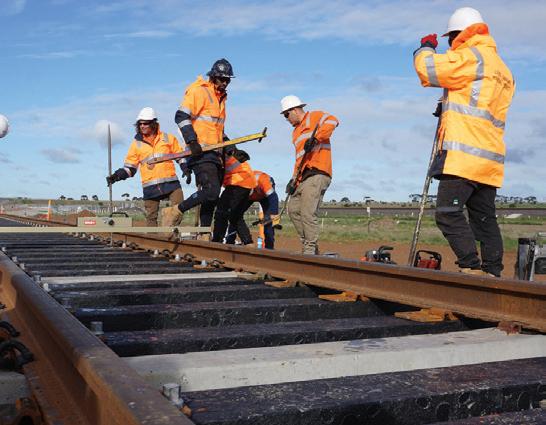

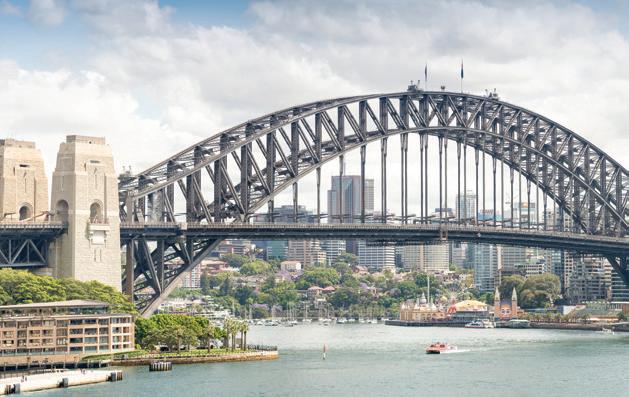
HOW TO BETTER MANAGE YOUR CRITICAL ASSETS
PROTECTING CRITICAL INFRASTRUCTURE AGAINST CYBER RISK
& CLOUD COMMUNICATION
CORROSION
ARE YOU READY FOR THE SUMMER DISASTER SEASON?
INLAND RAIL SEEKING EOI FOR TWO MAJOR CONTRACTS 8 $1.6 BILLION TOOWOOMBA SECOND RANGE CROSSING OPEN
NEW AUSTRALASIAN RAILWAY ASSOCIATION CEO 9 TWO AUSTRALIAN AIRPORTS RECEIVE HIGHEST SCORE WORLDWIDE FOR SUSTAINABILITY
FIVE MAJOR PROJECTS ADDED TO INFRASTRUCTURE AUSTRALIA’S PRIORITY LIST
PORT MASTER PLAN TO UNDERGO CONSULTATION
UNDERRATED CIVIL PROJECT
5 www.infrastructuremagazine.com.au November 2019 // Issue 13 CONTENTS
THE BUILDING
FOR RESILIENT
REGULARS 02 EDITOR’S WELCOME 06 CONTRIBUTORS 80 ADVERTISERS’ INDEX 80 FEATURES SCHEDULE NEWS 68 70
9
10
10
11 AN
COMPONENT 11 SUBURBAN RAIL LOOP ROUTE CONFIRMED 12 WINNERS
INFRASTRUCTURE SUSTAINABILITY AWARDS ANNOUNCED 12 PREFERRED
13 VICTORIA’S $870 MILLION ROAD MAINTENANCE BLITZ
INDUSTRY EVENTS THE
MONITORING NETWORK MAKING LATROBE VALLEY SAFER BUILDING UP TO SYDNEY BUILD EXPO 2020 SYDNEY
BRIDGE’S LASER CLEANING TECHNOLOGY STRAY TRACTION EFFECTS – WHERE’S THE PROBLEM? 62 66 78 57 60 74 76 SECURITY AND CRITICAL
DISASTER MANAGEMENT
BLOCKS
CITIES
8
GERALDTON
OF THE
ROUTE IDENTIFIED FOR COFFS HARBOUR BYPASS
IoT
MISSING PIECE IN THE I oT PUZZLE ENVIRONMENTAL
HARBOUR
INFRASTRUCTURE
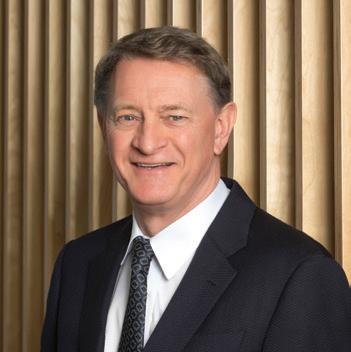
HEADING
Graham Millett
Chief Executive Officer, Western
Sydney Airport
Graham Millett oversees the delivery of the $5.3 billion Western Sydney Airport and has more than 20 years of senior executive experience across aviation and telecommunications infrastructure.
As Group General Manager of Qantas’ Property and Procurement Divisions, Mr Millett managed terminal redevelopments at Sydney, Melbourne and Canberra airports, as well as the multi-billion dollar procurement of 65 Boeing 787 Dreamliners for the Australian national carrier. Mr Millett also served as Head of Facilities and Fleet for NBN Co, responsible for a $1.2 billion property portfolio.
As a trained pilot, Mr Millett understands aviation from every perspective, helping him lead a team to deliver an airport experience that will be as transformational for airlines and freight operators as it will be for passengers.
Mr Millett holds a Bachelor of Economics and Master of Business Administration. He is also currently a Director on the Board of St George Community Housing and has previously been a member of the Advisory Panel of the Board of Airline Representatives Australia and Chairman of the International Air Transport Association’s Australian Airports Consultative Committee.
FProfessor Anna Paradowska
irst para
Industry Engagement Manager, ACNS, ANSTO
Anna Paradowska is a Conjoint Professor with University of Sydney and Industry Engagement Manager of the Industrial Liaison Office at the Australian Centre for Neutron Scattering.
Officimporum, est prae doloreh eniaeruptat ut vitiumquam volupta qui cum reptatibus nes ationse aut et aut mo quos aruptatus int, nonsequid magnis nonsedipsunt explitas andi que sandae veles cuptatiis et as ut omnimetur acerum ese eos sit, cus non restrum que nat maximod mi, quia dolupta tustis dent pra prat as sus.
Her role is to promote the use of the Australian Centre for Neutron Scattering facilities for applied industrial research and to manage technology transfer. Her goal is to build long-term collaborations and partnerships with universities, other research organisations, businesses and industries to support Australian and global industry. Anna is also co-responsible for the KOWARI Strain Scanner at ANSTO.
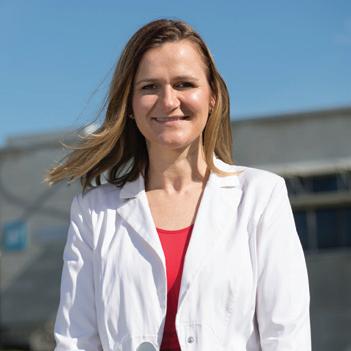

Richard
Wankmuller CEO, Inland Rail
Richard Wankmuller was appointed to the role of CEO of Inland Rail in April 2018 and oversees the delivery of both the development and construction elements of Inland Rail. Richard has more than 35 years’ senior management experience in both the private and public sectors, including significant time in CEO and Managing Director roles, and has held both executive and nonexecutive director positions with some of the world’s largest engineering and construction companies, including Cardno, GHD and Parsons.
Although having lived in Australia for some years, Richard’s time in the USA and Europe has added a global perspective to his approach to the planning, financing, design and delivery of large infrastructure projects and programs. He has helped clients develop and deliver more than $25 billion worth of infrastructure programs across a wide variety of stakeholder interests, in many parts of the world.
Richard understands the vital nature that rail plays in Australia’s national supply chain. As the leader of this once-in-a-generation and Australia’s largest rail freight infrastructure project, he recognises the key role that communities, ARTC’s customers, and a wide range of stakeholders play in shaping the success of Inland Rail.
6 November 2019 // Issue 13 www.infrastructuremagazine.com.au INFRASTRUCTURE
Contributors
November 2019 // Issue 13 www.infrastructuremagazine.com.au
Contributors

Toby Kent
Caroline Wilkie CEO, Australian Airports Association
Caroline Wilkie has been CEO of the Australian Airports Association since 2011. The AAA represents all major regular passenger transport airports in Australia as well as council airports. The membership spans from councils with grass strip runways to Australia’s major gateways. The AAA also represents a further 140 corporate members. The AAA is engaged in research, developing industry publications, education, advocacy and major industry events. Caroline has a Masters of Public Affairs and more than fifteen years’ experience in association management.
Chief Resilience Officer, City of Melbourne, and Chair, Future Business Council
Toby Kent is Australia’s first Chief Resilience Officer and has also recently been appointed to lead the Future Business Council.
Toby Kent has created and implemented resilience and sustainability strategies across a range of sectors. Since the late 1990s, he has worked with governments, communities, industry sectors and many other stakeholders on five continents.
The Resilient Melbourne strategy that Toby led, working with over 1,000 individuals from 230 organisations, represents the first time in Melbourne’s history that a metropolitan-wide strategy has been led from local government, working with the Victorian Government, as well as many private and not-for-profit organisations.
Prior to becoming Melbourne’s Chief Resilience Officer, Toby worked with leading Melbourne businesses, including MMG mining corporation and ANZ bank, where he was Head of Sustainable Development. Toby has a Master’s Degree in Urbanisation (Housing and Social Change) from the London School of Economics.

Frank Zeichner
CEO, Internet of Things Alliance Australia (IoTAA)

Frank Zeichner is a leader in the development of the Australian IoT ecosystem and is the foundation CEO of the IoT Alliance Australia (IoTAA), the peak Australian IoT industry body.
As co-founder of IoTAA, Frank drove the establishment of the Alliance, enlisting and engaging stakeholders across a wide spectrum. Frank has worked in the telecommunications industry, in Australia and overseas, for the last 33 years.
Frank is also Director of the Knowledge Economy Institute (KEi) and Industry Associate Professor at the University of Technology Sydney, where he is responsible for industry collaboration, in particular in the Smart Cities sector.
The IoT Alliance Australia’s goal is to empower industry to grow Australia’s competitive advantage through IoT. Its purpose is to accelerate IoT innovation and adoption by activating and supporting collaboration across industry, government, research and communities; promoting evidence-based policy and regulation; and identifying strategic opportunities for economic growth and social benefit.
7 www.infrastructuremagazine.com.au November 2019 // Issue 13 INFRASTRUCTURE
www.infrastructuremagazine.com.au November 2019 // Issue 13
Inland Rail seeking EOI for two major contracts
The Australian Rail Track Corporation (ARTC) has called for two separate Expressions of Interest (EOI) for construction and sleeper contracts on the Inland Rail project.
The first is a construction contract on the Narrabri to North Star section of Inland Rail, a 171km section of rail track in northern New South Wales. The second process is for the program-wide supply and delivery of rail sleepers, an estimated 1.44 million sleepers.
ARTC Inland Rail Chief Executive, Richard Wankmuller, said as work continues on the critical Inland Rail project, more and more regional communities will benefit economically through job creation and the expansion of local businesses.
“Inland Rail is already securing jobs for regional Australians. The benefits of Inland Rail will be felt far beyond the route as businesses come on board to build this essential link in our national supply chain,” Mr Wankmuller said.
At the height of construction there will be 16,000 direct and indirect jobs from Inland Rail, and the ARTC is focused on ensuring that in addition to major construction industry, local companies, businesses and job seekers take part in the different aspects of Inland Rail where they can.
$1.6 BILLION
The Parkes to Narromine section of Inland Rail is now ten months into full construction and the economic benefits can already be clearly seen in Parkes and surrounding regions.

“Inland Rail construction is injecting significant dollars into local businesses and the regional economy with $41.2 million spent so far,” Mr Wankmuller said.
Around the Central West region of NSW, businesses benefitting from the flow of work from Inland Rail include services for concrete supply, transportation, fencing, earthmoving, drainage, electrical works, security and water bore drilling providers.
These are the sorts of opportunities and economic development that ARTC hopes will come from the Narrabri to North Star project, which will include upgrading around 171km of existing rail track through the reconstruction of existing track, replacement of bridges and culverts, level crossings and crossing loops.
TOOWOOMBA SECOND RANGE CROSSING OPEN
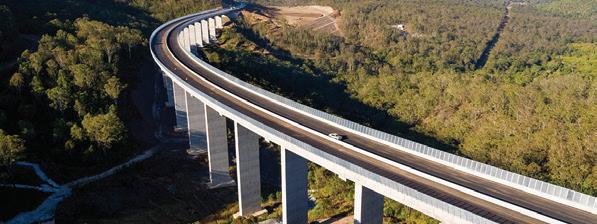
The $1.6 billion Toowoomba Second Range Crossing (TSRC) has successfully been completed and is now open to traffic.
The TSRC is a 41km-long bypass route to the north of Toowoomba, including an 800m-long viaduct, which will make transportation more efficient and take trucks out of central Toowoomba.
Deputy Prime Minister and Minister for Infrastructure, Transport and Regional Development, Michael McCormack, said that the TSRC is a monumental project for the Toowoomba and Lockyer Valley communities.
“It is the centrepiece of our $100 billion nationwide infrastructure investment that is getting Australians to where they need to be sooner and safer – including in our regions.”
Queensland Premier, Annastacia Palaszczuk, said that after creating more than 3,700 local jobs during construction, the crossing would now play a vital role supporting the ongoing growth of the region and state’s industries.
“It means our world-class exports can get to their destination quicker, and motorists across Toowoomba, the Darling Downs and Lockyer Valley can get home safer.”
Queensland Transport and Main Roads Minister, Mark Bailey, said the project had the backing of the heavy vehicle industry and peak motoring groups, relieving pressure on Toowoomba’s roads.
“The opening of the TSRC marks the return of James Street to the Toowoomba community, the beginning of a more efficient future for our truckies and is fantastic news for our regional economy.”
Assistant Minister for Road Safety and Freight Transport and Federal Member for Wright, Scott Buchholz, said that the completion of one of the largest road transport projects in Australia’s history was a milestone for the region and would relieve pressure on local roads, enhance safety and improve productivity.
“This project will be transformational for our region, taking thousands of heavy vehicles off the range crossing, reducing travel times and enhancing the liveability of nearby residents in my community of the Lockyer Valley.”
The $1.6 billion Toowoomba Second Range Crossing was jointly funded, with the Australian Government committing $1.137 billion and the Queensland Government contributing the remainder through Public Private Partnership contract arrangements.
8 November 2019 // Issue 13 www.infrastructuremagazine.com.au NEWS

NEW AUSTRALASIAN RAILWAY ASSOCIATION CEO
Australian Airports Association (AAA) CEO, Caroline Wilkie, will join the Australasian Railway Association (ARA) in mid-February 2020 as its new CEO, replacing Danny Broad who will become ARA’s new Chairman.
Ms Wilkie’s final day at AAA will be on Friday 13 December. The AAA Board will now begin the recruitment process for a new CEO.
Ms Wilkie said she was proud to have represented Australian airports over the last nine years.
“Our airports make such an important contribution to their communities and it has been incredibly rewarding to work with them to support their growth and success,” Ms Wilkie said.
Ms Wilkie will bring extensive policy experience to her new role at ARA, with a strong understanding of the nation-building impact of infrastructure investment and how critical transport networks are to connecting urban and regional communities.
“Rail, as the backbone of our evolving freight and passenger transport networks, adds to the social, economic and competitive fabric of both Australia and New Zealand, while addressing the challenges of increasing congestion in our cities and growing the efficiency of our supply chains,” Ms Wilkie said.
“There is already a strong focus on safety, skills development and the implementation of new technologies within the rail industry, and I’m committed to leading these agendas and developing others on behalf of our members.”
Outgoing ARA CEO, Danny Broad, will remain with the ARA, taking up the position of Chairman. He replaces current Chairman, Bob Herbert AM, who has announced he will step down from the Board at the end of 2019.
Mr Broad said Ms Wilkie has proven experience in leading a member association with a transport and infrastructure focus, and also the ability to foster a strong sense of industry collaboration.
“Under her leadership, Ms Wilkie significantly increased the size and scope of the AAA, expanding its industry engagement and stakeholder management as well as its events and education programs,” Mr Broad said.
“She led the successful Protect Regional Airports campaign, culminating in the Federal Government’s announcement of a $100 million regional airport fund this year, and also oversaw a long-term engagement process with CASA ahead of changes to the Manual of Standards (MOS) Part 139.”
TWO AUSTRALIAN AIRPORTS RECEIVE HIGHEST SCORE WORLDWIDE FOR SUSTAINABILITY
The Australia Pacific Airports Corporation (APAC) has been recognised for its commitment to sustainability, with the highest global score for an airport awarded to the corporation by the 2019 GRESB Infrastructure Assessment.
Melbourne and Launceston Airports, both run by APAC, landed an overall score of 88 out of 100 – the highest score awarded to an airport worldwide, far surpassing the peer average of 67. Each year, GRESB assesses and benchmarks the environmental, social and governance (ESG) performance of real assets worldwide and monitors progress towards global sustainability goals.
GRESB Assessments are guided by what investors and the industry consider
to be material issues in the sustainability performance of real asset investments and are aligned with international reporting frameworks such as Principles for Responsible Investment (PRI) and global sustainability reporting firm GRI.
Australia Pacific Airports Corporation Chief Financial Officer, Grant Devonport, said that APAC’s focus on sustainability and environmental targets contributed to the high score, in addition to improved stakeholder engagement activities.
“Over the past year we invested over two million dollars in energy efficiency programs across Melbourne and Launceston Airports, helping to reduce our carbon footprint and improve operational efficiency.
“We will continue our efforts to be a leader in the infrastructure industry in
ESG, and implement the actions needed to meet our Environment Strategy targets.”

GRESB Director Infrastructure, Rick Walters, congratulated APAC on its win.
“We are delighted to recognize APAC for its global leadership in sustainability. This demonstrates the significant steps they have taken to incorporating sustainability into their operations and communicating their performance to investors,” Mr Walters said.
“APAC has set a high bar for ESG performance in 2019 and an example for its peers to follow.”
NEWS
FIVE MAJOR PROJECTS ADDED TO INFRASTRUCTURE
AUSTRALIA’S PRIORITY LIST
Infrastructure Australia (IA) has added five major road and rail infrastructure projects across Queensland and NSW to its Infrastructure Priority List, after deeming their business cases sound investments.
Among the projects to gain the support of the nation’s independent infrastructure advisor was the NSW Government’s proposal to construct a new four-lane bridge on the Princes Highway over the Shoalhaven River at Nowra.
The Infrastructure Priority List includes four new Priority Projects for Queensland, with a combined value of more than $2 billion:
♦ Gold Coast Light Rail: Stage 3A
♦ Bruce Highway – Cooroy to Curra Section D: Woondum to Curra
♦ Bruce Highway – Deception Bay Road Interchange Upgrade
♦ Bruce Highway – Maroochydore Road Interchange Project
The Infrastructure Priority List provides governments at all levels with a prioritised list of nationally-significant investment opportunities for the near, medium and longer term. Inclusion on the Priority List shows that a proposal has undergone a rigorous business case assessment and has been proven to have significant benefits for the community.
Infrastructure Australia Chief Executive, Romilly Madew, said these projects means IA now has over $6 billion worth of nationally-significant projects for Queensland on the Infrastructure Priority List.
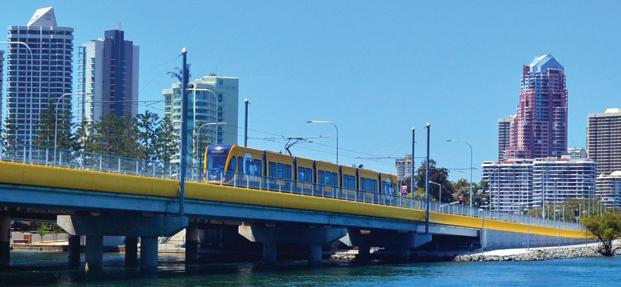
“Gold Coast Light Rail Stage 3A addresses the dual challenges of population growth and high levels of car dependency on the Gold Coast, one of Australia’s major tourism destinations which hosts around 12 million visitors each year,” Ms Madew said.
“Infrastructure Australia’s assessment of the business case for Gold Coast Light Rail Stage 3A found the total benefits of the project to be close to its total costs. We identified two key factors that are critical to delivering value for money: land use changes to promote urban renewal and increase density in surrounding areas, and encouraging more residents to leave the car at home and use the light rail instead.”
Infrastructure Australia is currently developing the 2020 Infrastructure Priority List, which is due for release early next year.
GERALDTON PORT MASTER PLAN TO UNDERGO CONSULTATION
The Western Australian Government has released a draft of its Geraldton Port Master Plan for public consultation.
The Master Plan aims to guide significant trade and economic growth in Geraldton and the Mid-West over the next 30 years.
The Mid West Ports Authority began master planning in January 2018 to map the development and infrastructure requirements of Geraldton Port to accommodate potentially significant trade growth over the coming three decades.
WA Ports Minister, Alannah MacTiernan, said, “Our government is committed to driving Geraldton Port to its full potential, opening
up new trade opportunities and supporting long-term, sustainable jobs in the Mid-West.”
The draft plan was created following extensive community and stakeholder consultation. The plan outlines priority projects for the port over the next five years to accommodate growth, including tourism development opportunities in Fishing Boat Harbour.
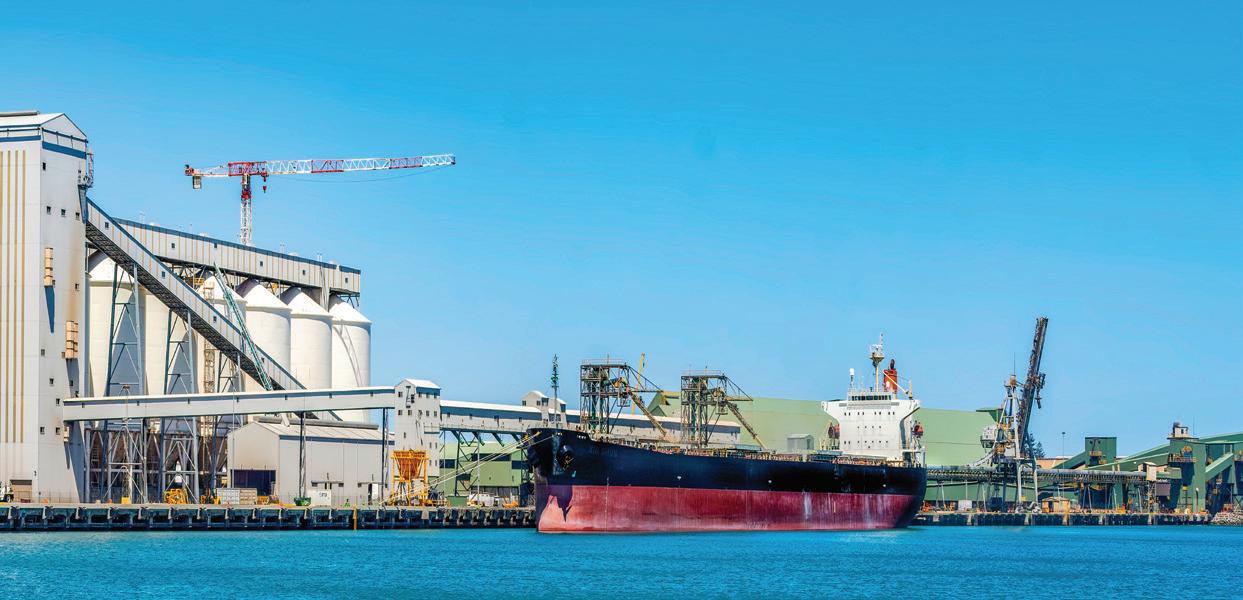
The draft Master Plan focuses on maximising capacity at Geraldton Port through unlocking latent port capacity, improving transport and infrastructure corridors connecting the port to the freight network, and providing sufficient land to support port-users’ needs.
Community members and port stakeholders have an opportunity to view and provide comment on the draft Master Plan. The consultation period for the draft Geraldton Port Master Plan will end 3 December 2019.
NEWS
AN UNDERRATED CIVIL PROJECT COMPONENT

A huge number of projects require anchoring – from towers, sheet piles and cranes, to trees, walls and moorings – to ensure the stability of assets and the safety of workers. However, it’s not enough to be reliable; the range of anchors used also need to be adaptable.
The AncorLoc system offers a range of tried-and-tested anchors to suit all sizes and applications across civil and structural infrastructure, including bridges and roads. Honed through years of technical and practical experience across a range of industries, the anchors deploy a simple, innovative solution to deliver maximum stability with minimum soil disturbance.
Most anchoring products use concrete, grouts and screw type fixtures which require additional costs and time to install. The AncorLoc system is different as it works alone. Anchors are driven into the ground using a drive rod and once it reaches the required depth, the rod or cable then rotates the anchor into undisturbed soil like a toggle bolt, ensuring optimal grip.
The combination of the anchor’s size and the depth that it can go allows it to have a strong holding capacity
in every soil type. Even if the soil has been affected by things like flooding, AncorLoc’s products can be driven to depths below the affected topsoils or poor soil groups.
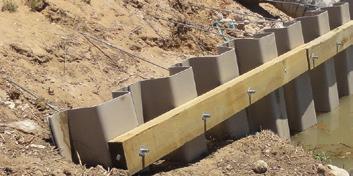
SPECIFIC ANCHORING SOLUTIONS FOR DIFFERENT PROJECTS
The Duckbill – the smallest in the range – is a cabled anchor designed for smaller loads, from trees through to civil and structural applications. Duckbill anchors can be cabled with a variety of tendons, from galvanized aircraft cable for normal usage to stainless steel for superior corrosion resistance, making them highly adaptable.
The Manta Ray and Sting Ray anchors are perfect for larger tonnages such as towers, retaining walls (including sea walls), moorings and assisted footings. They can be used both on land and underwater.
Once they are driven into the ground, AncorLoc anchors are tipped and loadlocked with Foresight’s Anchor Locking Kit. This provides an immediate proof test of each anchor.
The simplicity of AncorLoc’s applications allow for quick installation, saving labor costs and reducing the amount of concrete and steel needed on a project. In addition to infrastructure projects, these anchors have provided solutions for utilities, port authorities, portable buildings, shade structures and landscape design.
For more information on which anchoring solution is right for your project, visit ancorloc.com.au.
SUBURBAN RAIL LOOP ROUTE CONFIRMED
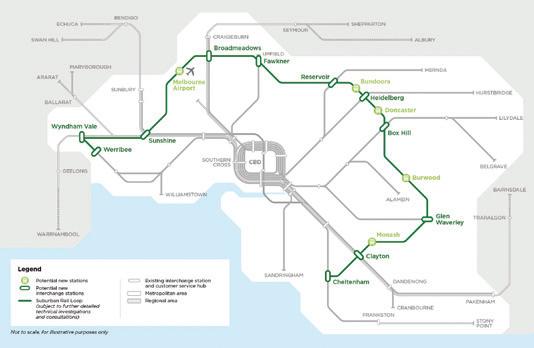
The Victorian Government has confirmed the preferred alignment and station precinct locations for the Suburban Rail Loop – a 90km rail ring around Melbourne’s middle suburbs.
The project will connect every metropolitan train line from Cheltenham to Werribee, create a rail link to the airport and build three transport super hubs at Clayton, Broadmeadows and Sunshine to connect regional passengers to the Suburban Rail Loop.
The government also confirmed a dedicated new authority to deliver it.
The design and delivery of the project will be led by the Suburban Rail Loop Authority. The new Authority started work in
early September and is headed by incoming Chief Executive, Nick Foa, who has extensive experience in infrastructure, planning and government administration.
Mr Foa and his team will consult with local government, universities and other key institutions and stakeholders on options for where stations will be located in the precincts.
This consultation, along with the geotechnical work already underway, will inform the development of the Business Case. A Registration of Interest process for local and global firms has also begun to establish the best team to build the project from 2022.
Victorian Premier, Daniel Andrews, said, “This dedicated new authority will ensure the biggest public transport project in our state’s history becomes a reality.
“The Suburban Rail Loop will better connect Victorians to jobs, education and each other. We promised to get on with it, and that’s exactly what we’re doing.”
Victorian Minister for Transport Infrastructure, Jacinta Allan, said, “Right now we’re delivering the West Gate Tunnel, removing level crossings, upgrading suburban roads, getting on with the Metro Tunnel.
“The Suburban Rail Loop is the next step in the future of our transport network.”
Chief Executive of Suburban Rail Loop Authority, Nick Foa, said, “I’m excited to work on this once in a generation project, which will create stronger connections between suburban Melbourne, create more open spaces and provide new opportunities for business in the suburbs.”
11 www.infrastructuremagazine.com.au November 2019 // Issue 13 NEWS // PARTNER SOLUTIONS
WINNERS OF THE INFRASTRUCTURE SUSTAINABILITY AWARDS ANNOUNCED

The winners of the Infrastructure Sustainability Council of Australia’s (ISCA) annual sustainability awards have been crowned, with major road and rail projects in Victoria and WA among the winners.
The Annual Infrastructure Sustainability Awards recognise and celebrate leaders actively driving progress in the infrastructure sector. There were seven awards presented in addition to certificates presented to teams and individuals delivering better cultural, social, environmental and economic benefits through infrastructure.
ISCA CEO, Ainsley Simpson, said the caliber of this year’s award nominations was impressive.
“The winners all shared one thing in common – a plan to make bold moves,” she said.
“They then effectively set their plan in motion. That’s all it takes to show others what is possible, and importantly, absolutely necessary.”
THE WINNERS ARE:
Individual Leadership In Infrastructure Sustainability
Winner: Rebecca Hendy (McConnell Dowell)
Finalists:
Stuart Hodgson (Sydney Metro)
Dr Tim Clarke (Transport for NSW)
Emerging Young Leadership In Infrastructure Sustainability
Winner: Jaclyn Fathers (Lendlease)
Finalists:
Emma Dade (Jacobs)
Cindy Liles (John Holland)
IS Innovation and Impact Award
Winner: Level Crossing Removal Project
(Caulfield to Dandenong)
Finalists:
Western Program Alliance (Kororoit Creek Road, Aviation Road and Wydnham Vale)
Sydney Metro Northwest
Organisational Leadership in Infrastructure Sustainability (Private Sector)
Winner: CPB Contractors
Finalists: Acciona
CYP Design & Construction
Organisational Leadership in Infrastructure Sustainability (Public Sector)
Winner: Transport for NSW
Finalists: Sydney Metro
Department of Transport and Main Roads (QLD)
Outstanding Achievement in Infrastructure Sustainability (Design)
Winner: Sydney Metro City & Southwest
Tunnel and Station Excavation Works
Outstanding Achievement in Infrastructure Sustainability (As Built)
Winner: Northlink WA Southern Section
PREFERRED ROUTE IDENTIFIED FOR COFFS HARBOUR BYPASS
The NSW Roads and Maritime Services has identified a preferred route for the 14km four-lane Coffs Harbour Bypass.
The Coffs Harbour Bypass seeks to:
♦ Bypass Coffs Harbour between Englands Road and Korora Hill and upgrade the existing Pacific Highway between Korora Hill and the dual carriageway highway at Sapphire
♦ Provide grade-separated interchanges at Englands Road, Coramba Road and Korora Hill
♦ Cross the ridges at Roberts Hill, Shephards Lane and Gatelys Road with three tunnels
♦ Provide structures to pass over local roads, creeks and the North Coast Railway
♦ Provide tie-ins and modifications to the local road network, pedestrian and cycling facilities and fauna crossing structures
♦ Implement noise attenuation measures
♦ Undertake ancillary work to facilitate the construction and operation of the proposal
The Department of Planning, Industry and Environment sought community feedback on the Environmental Impact Statement (EIS) for the project.
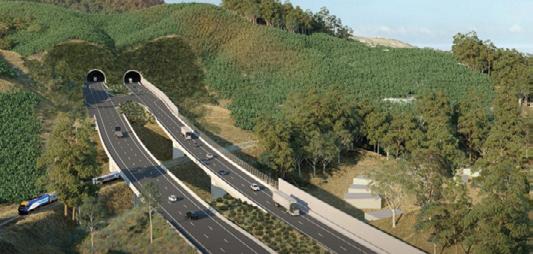
The Department’s Executive Director, Infrastructure Assessments, David Gainsford, said community input is a vital part of the planning process and encouraged everyone to have their say.
“Our role is to assess this infrastructure proposal in consultation with local people, government agencies and stakeholders.”
The department will consider all community submissions received, along with feedback from other government agencies and council, as part of its independent assessment process.
Roads and Maritime Services will be asked to provide a response to issues raised in submissions on the proposal.
12 November 2019 // Issue 13 www.infrastructuremagazine.com.au NEWS
VICTORIA’S $870 MILLION ROAD MAINTENANCE BLITZ
Victoria will receive massive maintenance works to its road network with the State Government announcing more than $870 million in funding to improve hundreds of freeways, arterial and country roads.
Victorian Premier, Daniel Andrews, and State Minister for Roads, Jaala Pulford, launched the massive road maintenance blitz, which includes $653.5 million to rebuild and resurface roads across the state over the next two years, on top of the Government’s annual investment in road maintenance – which will be $216 million this financial year.
The investment will upgrade more than 1,800km of road, repair 150,000 potholes and trim more than 30,000km of roadside vegetation across Victoria in the next year alone.
Asphalt resurfacing will give drivers safer and more reliable journeys on key arterial roads including the Monash Freeway, Princes Freeway, Maroondah Highway and CranbourneFrankston Road.
Roads needing extensive work will also be targeted, including the Melba Highway at Dixons Creek, MorningtonTyabb Road at Moorooduc and Healesville-Koo Wee Rup Road in Pakenham.
Another 1,500km of regional roads will be repaired, rebuilt and resurfaced, including key roads such as the Princes Highway in Gippsland, the Hume Highway near Winton, the Glenelg Highway near Skipton, the Echuca-Kyabram Road near Echuca and the Robinvale-Sea Lake Road in Manangatang.
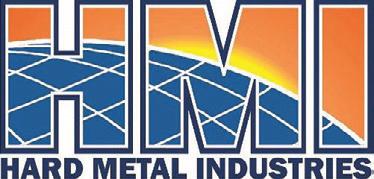
Regional councils are also delivering 133 projects on municipal roads thanks to round two of the Fixing Country Roads program – including rebuilding sections of local roads, sealing gravel roads and strengthening bridges.
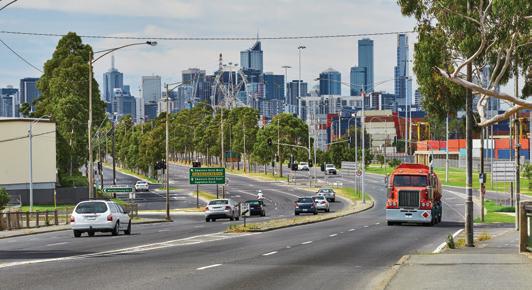
The maintenance program will also repair and replace damaged signs, safety barriers and fences, which play an important role in road safety.
On any given night during the blitz, around 100 workers will be fixing roads across Melbourne, while 1,100 construction jobs are set to be created in the regions as part of this work.
Important maintenance works on the West Gate Bridge will also take place over the summer festive period with crews working day and night to waterproof and asphalt the steel sections of the bridge, in a boost to reliability for the 205,000 motorists who use it every day.
133 Bluestone Circuit, Seventeen Mile Rocks, QLD, 4073
Tel: +61 7 3714 5700
Fax: +61 7 3715 8813
Email: info@hmi.com.au
Web: www.hmi.com.au
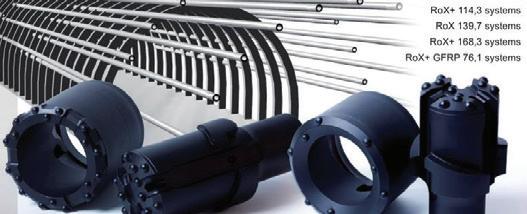

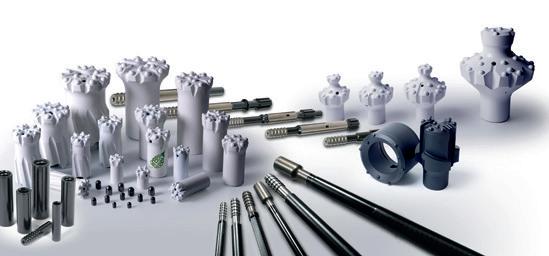
13 www.infrastructuremagazine.com.au November 2019 // Issue 13 NEWS • CANOPY TUBES • BOLTING & TUNNELLING • CUTTER HEAD
PO Box 1467, Kenmore, QLD, 4069

ON SOCIAL INFRASTRUCTURE
by Romilly Madew AO, CEO, Infrastructure Australia
Infrastructure Australia’s 2019 Australian Infrastructure Audit highlights the important role social infrastructure plays in our growing communities. However, as Chief Executive Romilly Madew AO explains, the ease of access, quality and cost of social infrastructure varies across the country.

14 A WORD FROM INFRASTRUCTURE AUSTRALIA
Australia has high-performing social infrastructure sectors by international standards, as reflected in our ranking as the country with the third highest quality of life and standard of living in 2018.
On a national scale, social infrastructure sectors contributed 12.5 per cent of Australia’s GDP in 2018. These sectors employ just over three million people, or around a quarter of Australia’s workforce.
Compared to economic infrastructure, individual social infrastructure assets may be smaller in scale – a local public swimming pool, park or single social housing dwelling –however, together these assets form networks that deliver nationally-significant benefits to the community, the economy and our environment.
Critical for social inclusion and cohesion, social infrastructure provides not only the essential services required for communities to function, but also the services that make places liveable and help improve the quality of life for people living there.

Alongside economic infrastructure, it provides direct benefits to individuals, as well as broader social and economic benefits to local communities and Australian society as a whole.
However, Australia’s growing and aging population, increasing urbanisation, advancements in technology, and changing work patterns will impact the social infrastructure sector over the next 15 years and beyond.
These trends will increase demand for social infrastructure, particularly in our cities, and change the expectations people have for the variety, quality and accessibility of social infrastructure services and assets.
COMMUNITY CONFIDENCE IN SOCIAL INFRASTRUCTURE IS WANING
Infrastructure Australia’s 2019 Australian Infrastructure Audit examines social infrastructure for the first time.
This reflects our view that the liveability of our communities is about more than just access to transport, energy, water
15 A WORD FROM INFRASTRUCTURE AUSTRALIA

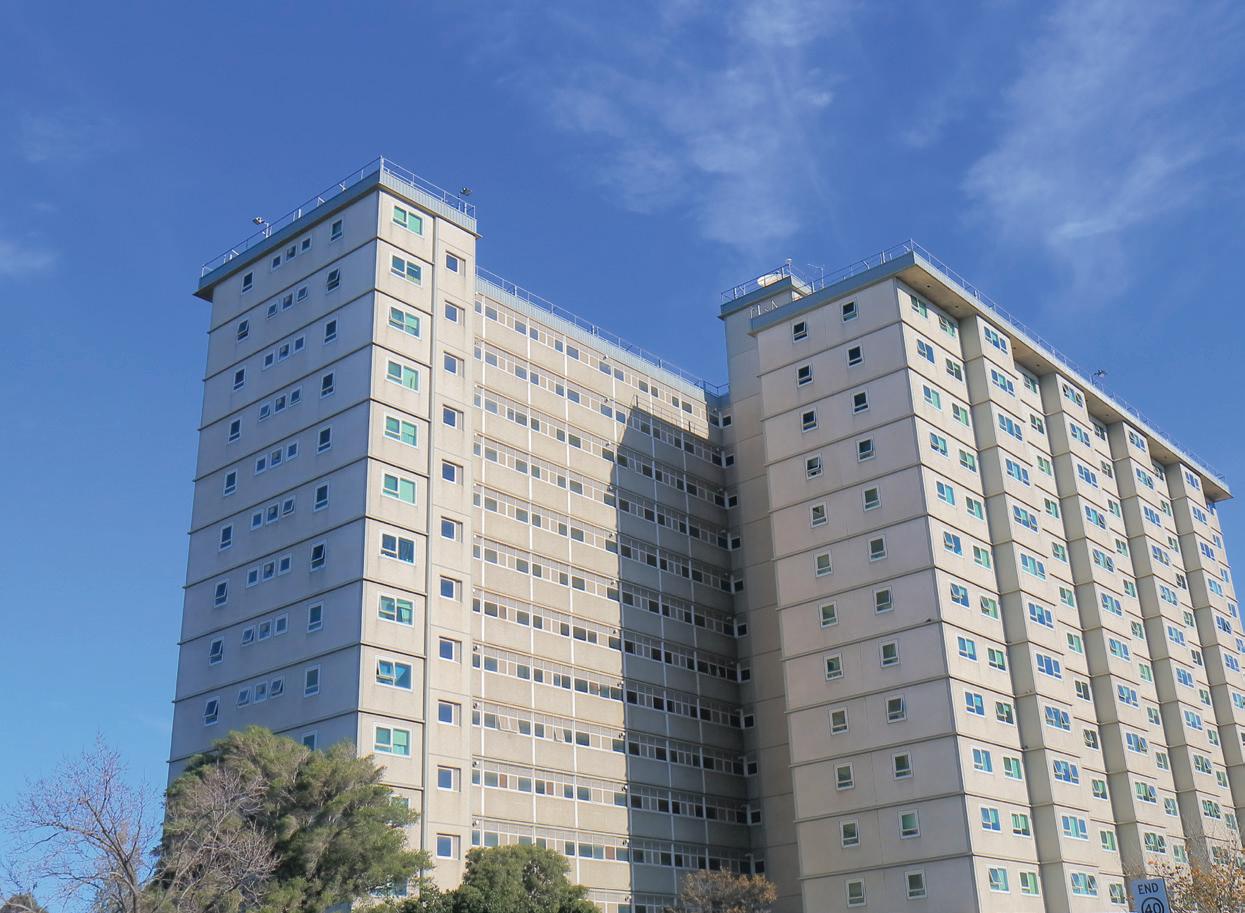
cultural spaces and green space.
However, the Audit finds that community confidence is waning in the face of a widening gap in outcomes between different Australian geographies.
Communities in our fast-growing cities are witnessing rapid population growth, often without commensurate increases in social infrastructure and services needed to maintain liveability.
Competition for space in growing and densifying cities can mean that commercial or residential buildings are being delivered without sufficient access to social infrastructure, such as green space.

At the same time, declining populations in regional, rural and remote areas has resulted in funding shortfalls for vital assets, from hospitals to schools and parks.
Sporting facilities, community centres and libraries often play central and multiple roles in these communities. This helps to build social cohesion and identity, and can help foster community resilience in times of stress, such as natural disasters.
Investment in hospitals and universities is particularly important, as these assets also act as economic anchors for regional, rural and remote areas, providing a source of stable employment and supporting local economies.
It is clear from the Audit though, that access to and quality of social infrastructure varies for different types of infrastructure, across different places and groups of people.
For example, over a third of housing in remote areas is overcrowded.
Emergency service response times can be four times longer for regional and remote areas, compared to urban areas.
People living in remote areas accessed Medicare-subsidised mental health services at a rate of three times less than people living in major cities.
The quality of arts and cultural infrastructure is rated higher in urban areas than in rural and remote areas, while ten per cent of people in outer urban areas expect access to green space to worsen over the next five years.
In areas where it costs more to deliver services per capita (such as rural or remote areas), or where space is constrained (in fast-growing cities), it may be difficult to access all types of social infrastructure.
16 November 2019 // Issue 13 www.infrastructuremagazine.com.au A WORD FROM INFRASTRUCTURE AUSTRALIA

Delivering essential services such as primary health care and school infrastructure has typically been prioritised over other services, such as arts and culture or green infrastructure.
In our cities, the high cost of land prohibits the development of new green spaces. Australians often expect their green spaces to be free to use, which limits the possibility of a return on investment.
In smaller towns, lower population densities have reduced demand, making it difficult for local governments to secure funding to develop and maintain green, blue or recreation infrastructure.
There is already an awareness in the community that these infrastructure assets are scarce, with our community research showing only 25 per cent of Australians believe the quality of their green spaces will improve over the next five years.
BREAKING DOWN SILOED PLANNING, FUNDING AND GOVERNANCE STRUCTURES
While the 2019 Audit finds common challenges and opportunities across the social infrastructure sectors, there are also interdependences between them.
For example, access to green and blue infrastructure can improve mental and physical health outcomes, reducing pressure on the health system.
Health education and prevention programs in schools can improve community health outcomes from childhood, while poor health, education and housing outcomes can increase demand on justice infrastructure.
A lack of integration across portfolios can lead to disjointed social policy and infrastructure investment, and poor outcomes
for communities who may receive high-quality access to certain services but not others.
However, some sectors are leveraging these relationships to improve benefits for communities.
There are a growing number of health and education precincts across Australia, where hospitals and other medical facilities co-locate with universities and other research facilities to share resources and boost outcomes for both sectors.
There is also growing recognition that social services do not end at delivering a single asset.
For example, realising the social and economic benefits of a hospital requires the physical buildings to integrate with transport infrastructure, so that people can access it.
This requires health and transport sectors to collaborate – meaning we need to continue to breakdown sector-based planning, funding and governance structures which limit the incentives for different infrastructure sectors to work together to drive community benefits.
Similarly, shared and joint-use assets provide a chance to make better use of our infrastructure assets. In particular, there is a unique opportunity for school infrastructure to provide essential community facilities and spaces outside of school hours.
Australia’s governments are increasingly recognising the need for better integration across social infrastructure sectors. This will be even more critical in the context of a growing and aging population, increasing urbanisation, advancements in technology, and the changing nature of work which will impact this sector over the next 15 years and beyond.
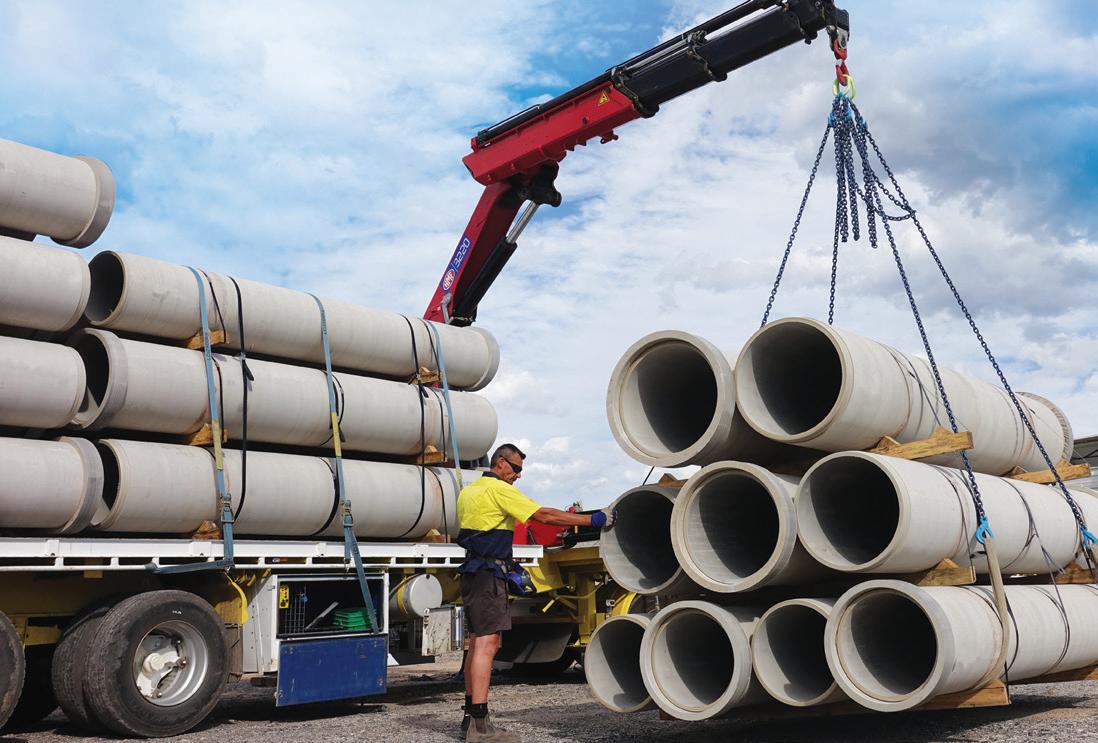
17 www.infrastructuremagazine.com.au November 2019 // Issue 13 A WORD FROM INFRASTRUCTURE AUSTRALIA

BETTER DOCUMENT CONTROL HELPS KEEP SYDNEY MOVING
As cities around the world grow, so does the challenge of keeping traffic moving, especially during peak hours.
Take, for example, Sydney, which has seen its population surge to over five million. On a typical weekday in Australia’s largest city, over one million people travel to work in a passenger vehicle. As existing roads are reaching capacity, new ones must be built, and legacy ones modified or expanded.
The construction and engineering firms that undertake these massive infrastructure projects face daily challenges both in the field and the office — challenges such as managing thousands of documents spread across multiple stakeholders and locations.
In order to tackle these pain points, owners and contractors are increasingly looking to digital collaborative document management solutions.
A SINGLE, TRUSTED SOURCE
With large-scale infrastructure projects, it’s critical for teams to be able to capture, control, access and track project information in a streamlined environment. A digital solution enables them to do so through a single, controlled source of project truth.
The right document management software offers browserbased and mobile tools so teams can access a central document repository from wherever work takes them. Project teams working on Sydney’s motorway found they can track the complete history of every project document with collaborative document management software.
Ease of use is another key factor impacting project execution. Through a digital document management solution, workers can easily navigate an intuitive search interface that spans all project information, such as workflows, photos, emails and related attachments.
And to manage all that project data, teams need the flexibility to organise them into familiar folder structures, either through a simple drag-and-drop action or automatically,
based on their associated discipline, status, type or other attributes.
STREAMLINING THE PROCESS
Building or expanding a motorway involves project segments or lots, some of which are constructed simultaneously. Today’s best document management software includes a lots module that helps manage the thousands of segments typical in a project of this size and scope.
A lots module is especially useful during project closeout, as it enables project teams to manage their quality processes in a simpler way. This functionality also establishes a rigorous audit trail and fosters transparency, allowing all participants to view all the project information assigned to the project’s lots.
A motorway project of the kind currently underway in Sydney requires maximised efficiency. With a collaborative document management tool, project teams can avoid having to print out thousands of drawings and then send them out to the various project sites. Countless hours aren’t wasted transporting documents from office to jobsite — they are instead distributed with the click of a mouse and accessed just as easily, and on demand.
Increasingly, major construction and engineering firms are reaping the benefits of digital document management and control solutions. Stakeholders are getting everyone on the same page because they’re accessing documents in a single source of project truth. They’re making faster decisions based on all project data, while minimising data re-entry and the risk of litigation.
Owners and contractors involved in Sydney’s infrastructure expansion are using collaborative document management tools and seeing how the better sharing of information leads to increased efficiency through all phases of construction.
Visit ineight.com/sydney to learn more about the advantages of a digital document management solution.
18 November 2019 // Issue 13 www.infrastructuremagazine.com.au INDUSTRY INSIGHTS // PARTNER SOLUTIONS

A NEW WAY TO BUILD Finally, take control of your projects at every phase of construction. Find out how with InEight software. InEight.com/infrastructure
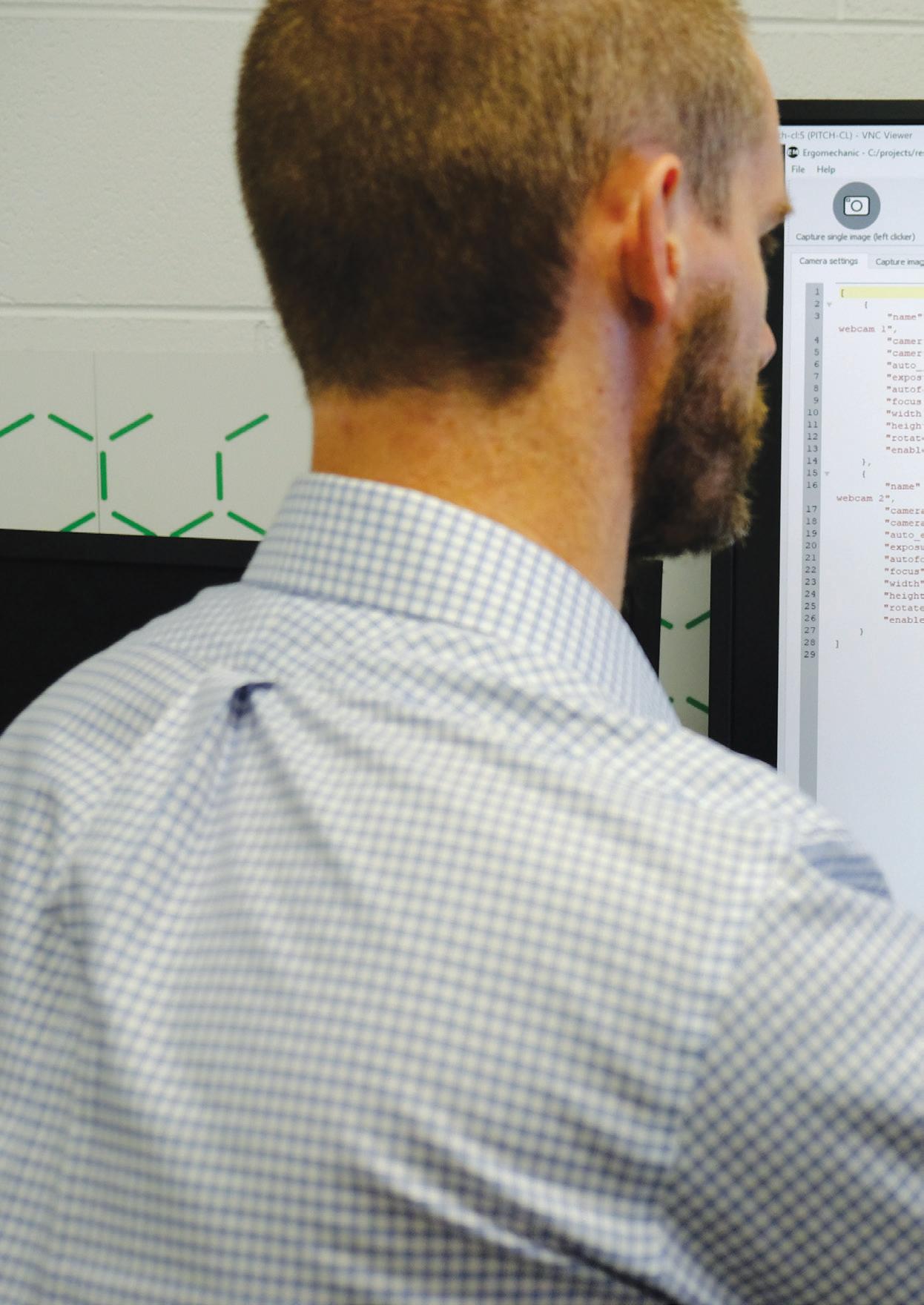
SEEING DOUBLE: SEEING DOUBLE:
THE RISE OF DIGITAL TWINS
By Lauren Butler, Journalist, Infrastructure magazine
20 INDUSTRY INSIGHTS

Digital twins – virtual replicas of physical objects and systems – have huge potential across many industries, including infrastructure, to improve efficiencies, cost and safety. The data and digital specialist arm of the CSIRO, Data61, is using sophisticated algorithms to allow manufacturing and other industries to create the 3D representation part of a digital twin in its new Melbourne-based Mixed Reality Lab.
21 INDUSTRY INSIGHTS
According to the International Data Corporation (IDC), 30 per cent of the top 2,000 global companies will use data from digital twins of Internet of Things (IoT) connected assets to improve productivity by up to 25 per cent.
CSIRO’s Data61 Senior Software Engineer, Matt Bolger, said that the new Mixed Reality Lab is made possible by a set-up of industrial and consumer optical cameras and sensing equipment, which capture detailed information about a physical object and the space surrounding it. The new technology blurs the lines of what is physical, digital and biological to improve decision-making and planning.
A FOCUS ON THE TECHNICAL
The new Mixed Reality Lab is the result of Data61’s research expertise in machine learning, computer vision, computational modelling and IoT, as well as CSIRO’s patented Stereo Depth Fusion technology, which uses depth estimation to significantly speed up reconstruction and therefore the time needed to create a digital twin.
According to Mr Bolger, the work happening at the Mixed Reality Lab primarily focuses on measurement and visual inspection problems. Its camera systems, projections and algorithms can be tailored to various use cases, making it highly valuable across several major industries, including potential benefits for the infrastructure sector.
The team in the Mixed Reality Lab are primarily in software development and engineering. Data61’s software platform Workspace in particular specialises in modular software development. Mr Bolger said they’re looking at different visionbased systems for doing 3D reconstruction of objects.
“That could be something being manufactured in a factory. It could also be some large object outside, so we’re looking at the different techniques that could be used where we can use different types of depth-sensing cameras, or traditional 3D cameras,” Mr Bolger said.
“We can then build arrays of these systems up, where we can be scanning large objects. So we’re taking a lot of different photos of objects from different angles, analysing that, and we can start creating a 3D reconstruction of the object.”
The lab is an amalgamation of multiple areas of technology, taking machine learning to the next level. Data61 looks into the applications of deep learning, as well as machine learning and artificial intelligence (AI).
As well as objects, the technology can be applied to humans to analyse movement, using deep learning and biomechanical modelling to make predictions and improvements to various environments, including work spaces.
The Lab can take relatively low resolution video feeds from far away and use machine learning to identify where people are. This allows them to track their skeletons, which act as biomechanical models.
“In terms of factory scenarios or
work scenarios, this allows us to use deep learning to start identifying foreign objects in a scene. This provides ways for the computer to understand what’s happening in a work environment. That’s feeding into simulation systems or some sort of situational learning system,” Mr Bolger said.
“That machine learning then starts to feed into analytics. Anything where you can start building up your training set and start building these big data sets, that can start being fed into potentially using machine learning and deep learning as a technology for predicting future things, or helping you identify things much more quickly without user interactions, or tagging and identifying things.”
APPLICATIONS IN THE INFRASTRUCTURE INDUSTRY
Using this technology, technicians can potentially create digital twins to provide infrastructure industry professionals with information to make more informed decisions about how infrastructure is built, used and maintained.
One key area of information that could be provided by this technology is in relation to defects.
“We can analyse defects and then present an overlay of those defects back to the users, viewed through augmented reality. That’s really just scratching the surface on scenarios and how they could be applicable,” Mr Bolger said.
Digital twins are expected to significantly reduce costs in manufacturing, making a valuable contribution to the economy. With a thriving manufacturing sector central to the government’s plans to grow the economy and create new jobs, this application is critical to growth in both manufacturing and infrastructure.
At the moment, Data61 is also undertaking work in areas from bushfire management and flood modelling, right through to traffic flow.
“There are lots of pieces of technology coming in that are probably applicable to that infrastructure area. There’s this concept of monitoring everything, analysing it in real time and then making predictive decisions,” Mr Bolger said.
“Our team’s focus is in the lab at the moment, but I think a lot of these technologies are very applicable.”

Within the lab, the team is specifically looking at mixed reality and how it can be analysed and turned into real-time feedback. This could have a huge impact on inspection information, highlighting defects, or more general situational awareness.
“This includes things like tracking robotics and automatic vehicles, as well as humans moving around the space. Maybe identifying hazards where action needs to be taken.
There’s a lot of side pieces to the puzzle that we’re also looking at in addition to the core scanning inspection problem in the lab,” Mr Bolger said.
IT ALL COMES DOWN TO SCALABILITY
Mr Bolger said that Data61 has been in recent conversations with players in the construction industry to
22 November 2019 // Issue 13 www.infrastructuremagazine.com.au INDUSTRY INSIGHTS Software
CSIRO’s Data61
Engineer at
translate what it’s currently doing to be leveraged in the infrastructure sector. With some of the manufacturing scenarios Data61 is currently working on being large scale, it is feasible that the technology could be applied to large infrastructure projects to deliver exciting outcomes.
“Some of the technologies can be used to create a representation of an object; take very accurate measurements of some large building or something. Then periodically we would do the same thing, and compare these differences over time. So that’s one way we see it,” Mr Bolger said.

“We can then reuse the other components in the overall pipeline as though you’re processing the data. You can build a sort of scalable computing network systems as well.”
COLLABORATION WITH INDUSTRY
Since the lab’s opening, the Data61 team has had a number of local companies and universities reach out to collaborate, and one of the goals is to have this technology successfully implemented across industries.
“I think particularly around the health and safety monitoring, there’s probably a lot of similarities to factory scenarios as well. With the concept of situational awareness, you can imagine a system that through cameras, or some deidentified sensing system, can monitor people in a work area, or maybe it’s visitors to a certain area.
“Pulling statistics from that and grabbing these data sets means that it then can be used to set analytics and start doing predictive work and those sort of things. I see a lot of those technologies applying to the infrastructure space as well.”
Amongst its other benefits, the modular aspects of the software and technology have multiple uses. Much of this comes down to its scalability.
“The background of our team is that we’re a software development and engineering team with a specialty in modular software development. We can facilitate collaborations between different research groups in a software context and build these systems so you can leverage something you create for project A and use it somewhere else in project B.
“This work we’ve done in the lab over the last few years is sort of like a hardware extension of that as well. So we’re facilitating the modular development of the software and making things that can be reused and scaled, but then sort of bringing in the hardware components of that as well,” Mr Bolger said.
These hardware components include several types of camera systems, each of which come from a different vendor, or which might use a different type of technology. For this reason, the types of data they produce are different.
“We’re developing systems that bring that into a common platform where you can swap out cameras or a different type of sensor for something else, or bring in your data from some other form and we can bring that into a common platform,” Mr Bolger said.
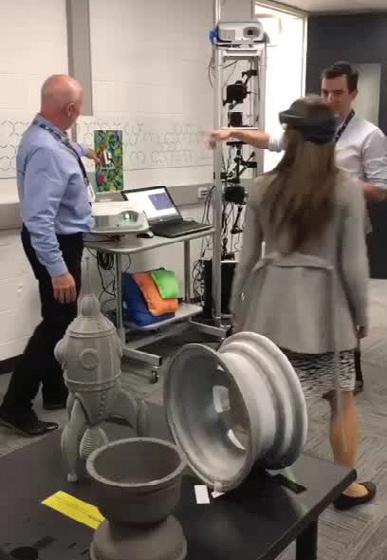
“There’s success on many levels. Part of the lab is providing a facility where we can bring in local industry here and start looking at how these sort of technologies apply to their challenges. Or what other sorts of complementary research and development is happening out there that could be part of this as well,” Mr Bolger said. These collaborations, as well as the facilitation of several areas of research, will help Data61 to deliver exciting commercial projects and continue the research projects that are underway. With the technology rapidly developing, it’s only a matter of time until we see this implemented on major infrastructure projects.

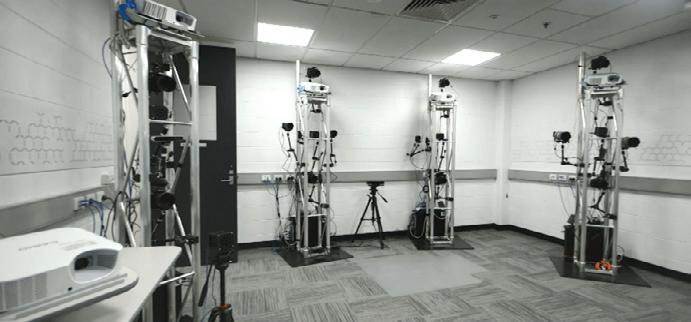
23 www.infrastructuremagazine.com.au November 2019 // Issue 13 INDUSTRY INSIGHTS
TRANSFORMING CITY STREETS INTO A FORMULA 1 RACETRACK
For the second year running, Singapore contractor United E&P was tasked with preparing the racetrack for the country’s Formula 1 race in September. Unlike many cities that utilise existing race circuits, Singapore transforms some of the city streets into race car-worthy surfaces in a matter of days.
To meet the tight deadlines and deliver a track that will pass muster with the racing car elite, United E&P partnered with Topcon Positioning Systems’ largest distributor in the Oceania region, Position Partners.
Using a full suite of design software, mapping and profiling technology, survey instruments and paving machine control systems, United E&P began by scanning and modelling the planned track surfaces before optimising a design and paving the tarmac.
“Having worked closely with United E&P at Singapore’s Changi airport expansion project in recent years, we have developed a trusted business partnership to utilise technology to its full potential on these cornerstone projects for the country,” Mathew Connelly, Position Partners Manager for South East Asia, said.
The racetrack has a specification governed by global motor sport safety association FIA (Federation Internationale de l’Automobile).
“The tolerances on this job are very tight,” Graham Castle, Construction Manager at United E&P, said. “We have a riding index we have to meet, a +/- three millimetre tolerance on our levels and also three millimetre tolerance under a four metre straight edge for the paved surface.”
“Previously on jobs like these you’d take 50 millimetres out and put 50 millimetres back in, wasting material and not

United E&P used Topcon’s resurfacing solution to map the existing surface of the circuit. Laser scanning technology was used to model the track, enabling an optimised design to be loaded onto the machines.
MAGNET software was used to create a CAD model for the racetrack, which was then loaded onto paving machines using machine control technology and survey rovers to accurately build to design.
“Using Topcon’s RD-M3 software we can variable depth milling for our machines so we’re milling to the design,” Mr Castle said.
United E&P utilised a range of Topcon paving machine control solutions – these steer the paver to deliver the smoothest results, automatically correcting the machine for optimal compaction.
Topcon offers a unique machine control system for fine tolerance work including grading and paving applications. Millimetre GPS uses a combination of a high-performance laser transmitter and GNSS positioning technology to create a large working zone that delivers up to 300 per cent greater accuracy than a standard GPS solution alone.
However, in a city with many high-rise buildings, getting a clear view of the sky for GPS technology is not always possible. “Topcon’s Millimetre GPS solution is by far the quickest and most flexible platform when it comes to paving as it can control multiple machines, is fast to set up at the start of a shift and delivers incredible accuracy,” Mr Castle said.
“But as we can’t get a reliable GPS fix in all areas of the track, we also switch to total station technology to give positioning information to the machines, so we can maintain a consistent level of accuracy across the project. Only Topcon has the ability to utilise GPS, lasers and total stations and switch between them easily, which makes a huge difference when it comes to projects like these that need precision, at speed.”
Survey rovers are used throughout the paving process to check as-built information. “We’re really using every bit of technology we have at our disposal for this job to give a great result in a limited amount of time,” Mr Connelly said.
24 November 2019 // Issue 13 www.infrastructuremagazine.com.au INDUSTRY INSIGHTS// PARTNER SOLUTIONS

Growing infrastructure demands around the world are creating tremendous challenges and opportunities.
Topcon works to stay a step ahead, by creating solutions that incorporate technology advancements into the way you work today and tomorrow, transforming the way infrastructure is built.
Our integration of high-accuracy positioning, high-speed imaging, cloud-based information management and down-to-earth simplicity creates higher productivity, enhanced quality and improved sustainability. With Topcon, you can stay ahead of your competition and meet the challenges of Infrastructure growth.
Watch Topcon Positoning Systems President and CEO Ray O’Connor’s Bloomberg “NEXT INFRASTRUCTURE” interview: www.topconpositioning.com/Infrastructure.
Let’s discuss your next project: 1300 867 266 | www.positionpartners.com.au
The Intersection of Infrastructure and Technology
LONG-TERM STRATEGIES FOR AUSTRALIAN RAIL
by Danny Broad, CEO, Australasian Railway Association (ARA)
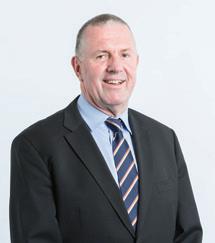
It’s been a few months since the release of Infrastructure Australia’s 2019 Audit –one of the key future-looking documents for the sector. Before he steps down from his role at the end of the year, ARA CEO Danny Broad, discusses some of the key findings of the Audit and what it means for Australia’s rail industry, including a look at asset management capacity, urban freight routes and road reform.
The Infrastructure Australia 2019 Audit has some important and significant findings that the Australian Government needs to listen to and act upon. At a high level the Audit finds that Australia still stands in a position of strength, however, looking to the future we are set to have a period of unprecedented uncertainty.
Changes in climate, a reshaping world economy, increasing political polarisation, and rapid technological change are all leading to greater uncertainty.

There have been some positives since the last Audit in 2015 with infrastructure investment, especially transport, which has been on an upward trend. The ARA has estimated that over $150 billion has been committed to rail infrastructure and new rolling stock projects alone over a 15 year period.
At the same time, governments have increasingly been integrating transport and land use planning as well as preserving key transport corridors.
26
AUSRAIL
One key issue that has emerged and poses a significant challenge is the population pressures in our large cities. This has led to road congestion, overcrowding on public transport and greater demands on social infrastructure.
One of the more considered and challenging findings from the Audit was that the record investment being made in infrastructure by state, territory and the Commonwealth Government is not a once-in-a generation aberration but is in fact the ‘new normal.’
Governments will be required to continue to build more infrastructure needed to keep pace with Australia’s growing population and more complex and varied needs.
The Audit finds urban congestion will continue to grow with the population unless investment continues to increase. A key issue then becomes the ability and commitment of governments to sustain these levels of funding over the medium term.
NEW STRATEGIES REQUIRED
Many of the key themes identified in the Audit are already on the ARA public policy agenda. This Audit reinforces the need for Commonwealth and state governments to rise to the challenge and put in place strategies to address these challenges over the long term.
Modelling undertaken for the Audit finds the cost of public transport congestion will grow from $175 million in 2016 to $837 million in 2031 and the cost of road congestion will grow from $18.9 billion in 2016 to $38.8 billion in 2031.
The Audit also found that there is a need to increase investment in passenger rail networks. Access to and quality of passenger transport networks is unequal and more difficult to access for people who are financially stressed, people with a disability, people who are older, and those who live in regional and remote communities or the outer suburbs of major cities.
Australia’s freight task is also growing rapidly. Congestion on key urban freight routes, inconsistent regulation and bottlenecks continue to hinder freight efficiency. As cities grow and demands for living space increases, governments must find new ways to successfully integrate freight needs into their urban planning.
The adoption of a national freight and supply chain strategy is an opportunity to develop a multi-modal strategy to the movement of freight.
CREATING IDEAL ASSET MANAGEMENT PLANS
One of Infrastructure Australia’s most significant observations in the Audit was in relation to asset management. The report found that the capability of Australian governments to plan, manage and undertake works to maintain and renew the assets in our transport network has not improved in recent years.
Interestingly, IA said that there is no single metric to determine the appropriate level of maintenance, renewal or rehabilitation for a transport asset, and that ideally, expenditure should be sufficient to maintain a predetermined service level and should be part of a detailed asset management plan.
This is an often-overlooked aspect of infrastructure provision in Australia, but without a doubt, it is one of the most important. In light of a passenger and freight task that continues to increase exponentially year on year, ensuring we have long term and appropriately funded asset management regimes across all levels of government and across all transport modes is fundamental to increasing capacity, improving reliability and achieving improved safety outcomes.
ARA agrees with Infrastructure Australia’s assertion that governments must place a greater focus on improving transparency, consistency and accountability with regard to asset management and maintenance. We look forward to the Infrastructure Australia Plan providing more direction to governments on achieving this important objective.
ROAD REFORM THE SINGLE MOST IMPORTANT INITIATIVE
Not unsurprisingly, Infrastructure Australia also added its voice to the chorus of bodies calling for road pricing reform. The Audit highlighted the fact that there is no clear link between expenditure on roads and usage, which means road expenditure is inequitable, inefficient, unsustainable and lacks transparency.
It pointed out that without reform, revenue from fuel excise will decline, drivers will not be charged fairly and people will be incentivised to drive, contributing to congestion.
It is not just Infrastructure Australia advocating this. There is ample evidence from a range of bodies demonstrating the economic benefits of heavy vehicle road reform. These have included the Productivity Commission, the National Commission of Audit and the National Competition Policy Review. Reports from these bodies underline why heavy vehicle pricing reform is the single most important initiative that Government should be considering to ensure the longterm efficiency and sustainability of our transport networks.
Road pricing is all about turning the provision of heavy vehicle road infrastructure into an economic service where feasible. It means implementing a market-based model that ties funding to user requirements and the willingness of users to pay. It involves replacing the existing heavy vehicle charging regime, which comprises of fuel excise and registration charges, with direct user charging. Direct user charges for heavy vehicle access to road infrastructure would allow clear price signals to be introduced for these users.
Reform should aim to establish proper linkages; linking the needs of heavy vehicle users with the level of service they receive and linking user charges and investment of those charges back into road services.

27
AUSRAIL
CROSS RIVER RAIL’S TRANSFORMATIONAL LEGACY
By 2036, the population of South East Queensland (SEQ) is predicted to hit five million people. That’s an increase of 1.5 million in less than 20 years. This makes SEQ one of Australia’s fastest growing regions. But it also presents some challenges for the transport system.
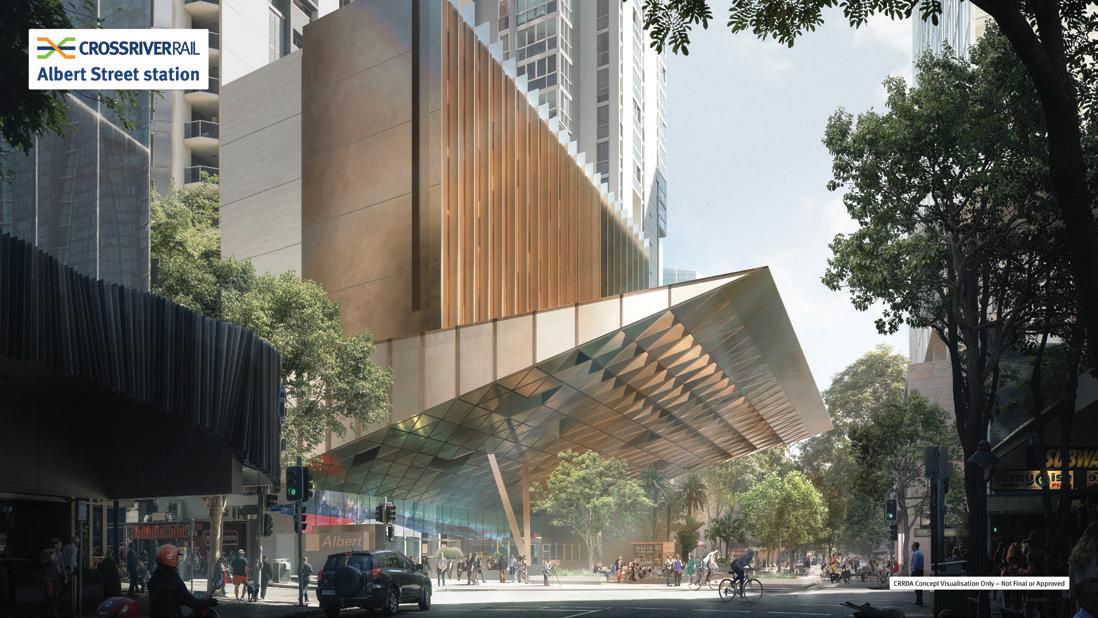
That’s where transformational initiatives like the Queensland Government’s Cross River Rail Project can play a part in providing extra capacity to help ease the pressure on the system.
More than 80 per cent of the ‘new’ 1.5 million people – or about 1.2 million – will live outside of the central Brisbane Local Government Area (LGA). In other words, they will live about 45–60 minutes from the CBD, where homes are more affordable, and the lifestyle suits their wants and needs.
But, almost half – 45 per cent – of the new jobs will still be created inside the Brisbane LGA. And this means more people than ever before will need to travel to, from and through Brisbane every day.
The population and jobs growth is a great story for the River City but it also means SEQ has to invest now in the infrastructure it will need to keep the region moving.
GRAND PLAN TO REMOVE BOTTLENECK
The SEQ public transport network was largely conceived in the 1940s and since then it’s really only the new Moreton Bay Rail Line that’s been added to the network as a major new trunk line. In 1978, when the Merivale Bridge was opened, connecting the south and north sides of the Brisbane River for the first time for train movements, rail patronage boomed, growing by an average of 6.7 per cent in ten years.
28 November 2019 // Issue 13 www.infrastructuremagazine.com.au
AUSRAIL
The new Albert Street station, in the heart of Brisbane’s CBD, will be the busiest Cross River Rail station and handle 67,000 passengers each workday by 2036.
But now the system is nearing capacity with that single river crossing and the fact that all lines run through the same four stations near the city, combine to create a bottleneck at the core of the network. This means it’s very difficult to run more trains or improve network services. With a burgeoning population, that spells trouble.
The Cross River Rail Project includes the construction of 5.9km of twin tunnels under the Brisbane River and the CBD; the installation of 10.2km of new rail lines and integration to the existing rail network; new stations, and a new rail signalling system.
Because the new tunnel will pass under the Brisbane River, it effectively gives a clogged CBD rail network a form of bypass surgery. Unlocking this blockage at the heart of the network allows more trains to run more often, and integration with new roads and bus services will help to create a turn-up-and-go public transport system set to benefit the whole region.
The project also includes the construction of four new, highcapacity underground stations including one in Albert Street, in the very heart of the CBD. A further eight stations above ground in Brisbane will be upgraded and three brand new stations will be built at the Gold Coast, the fastest growing sector of the rail network. The improved public transport services and facilities not only helps the state capital evolve as a world-class city, but improves connectivity across the region.
CONTRACTORS AWARDED AND DELIVERY MILESTONES
Cross River Rail is much more than just a rail project. The planning and development of the precincts surrounding the new underground stations will trigger urban renewal in the inner-city. It will boost the economy and generate thousands of jobs. Around 450 apprentices will learn their trade and launch their careers working on this landmark project for Queensland.
It’s full steam ahead for the project as it continues to achieve all of its major milestones. Following a rigorous procurement process, major contractors were announced in April with the CIMIC Group led PULSE consortium set to deliver the construction of the tunnels and stations, while the Unity Alliance will work closely with the Cross River Rail Delivery Authority and Queensland Rail to deliver the Rail, Integration and Systems package. Hitachi will provide the final package of work, the European Train Control System, which removes the need for trackside signals and provides greater efficiency and safety on the rail network.
In getting to this point, the project has been through an extensive early works program. The Cross River Rail construction site at Woolloongabba, just across the road from the world-famous Gabba Stadium, has been completely cleared in preparation for its new station and will act as the home base for tunnel boring machines. Meanwhile, a new coach terminal has just opened at the Roma Street station on

29 www.infrastructuremagazine.com.au November 2019 // Issue 13
AUSRAIL
With domestic and long-haul coach and train services operating from the same hub, the revitalised Roma Street precinct will become the largest transport interchange in Queensland.

the fringe of the CBD, making way for the demolition of its former home, the Brisbane Transit Centre. Demolition work on the Brisbane Transit Centre – also referred to as the “ugliest building in Brisbane” – is set to begin at the end of the year.
COMPLETE DIGITAL TWIN FORMS INNOVATION APPROACH
Graeme Newton, Chief Executive Officer for the Cross River Rail Delivery Authority, said the project would be a huge game-changer for SEQ.
“We are setting a new standard for major infrastructure delivery, through ground-breaking and industry-changing levels of innovation in design, construction and project management,” Mr Newton said.

One of the innovative approaches that is being used behind the scenes is a powerful tool the team calls the Project Digital Network Approach or ‘Project DNA’. The complete digital twin of the project captures an exhaustive range of information and displays it in 3D – from BIM designs and GIS data through to full photorealistic renderings of future construction, including tunnels, stations and their wider precincts. It is used by a variety of teams within the Delivery Authority to plan and execute the project, from engineers and planners through to program controllers and even stakeholder engagement teams.
Project DNA also has the potential to move beyond 3D and help users to visualise and track the project against time,
cost, operations, and maintenance. In other words, it is a 7D tracking and delivery tool that will be one of the first of its kind in the world.
With innovation underpinning Cross River Rail, Mr Newton knows Cross River Rail is on the right track to achieve big goals.
“We know this project is a once-in-a-generation opportunity to leave behind a transformational legacy for Queensland. Public transport travel as we currently know it will change forever and shape the region through new city precincts. Ultimately it will improve the quality of life for residents and visitors alike,” Mr Newton said.
30 November 2019 // Issue 13 www.infrastructuremagazine.com.au
Albert Street Station
AUSRAIL
Roma Street Station entry































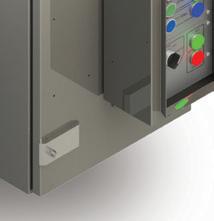

PROTECTING RAIL BEARINGS AGAINST ELECTRICAL CURRENT
Electrical currents can damage the raceways of bearings, reducing service life and leading to unwanted downtime and maintenance costs in both heavy and light rail applications. An insulation coating is therefore essential to avoid problems caused by electrical current such as fluting, flashover and grease deterioration.
Global bearing and digitalisation leader, Schaeffler, offers a cost-effective and efficient solution for preventing damage due to the passage of current with its Insutect A Insulation Coatings.
Schaeffler Mechanical Services Manager, Enzo Cavalli, said that bearings with an Insutect ceramic coating on the outer ring offer a cost-effective solution for helping to prevent damage commonly encountered over Australian rail networks. This coating can be implemented on light rail and passenger through to heavy rail used extensively throughout the mining and logistics industry.
Schaeffler Mechanical Services (including Bearing Engineering Services (BES), a division of Schaeffler Australia), serves customers throughout Australia’s heavy and light rail sectors, including mining, energy, bulk handling, logistics and sugar freight networks, as well as heavy and light passenger networks, all of which share a strong focus on quality, safety and traceability of technology and services.
POTENTIAL CONSEQUENCES OF ELECTRICAL CURRENT
The introduction of Schaeffler’s latest ‘J20G’ Insutect A Ceramic Insulation Coating means that Schaeffler has a solution suitable for breakdown voltages of up to 5000V DC.
Grease deterioration occurs when the grease breaks down as a result of stray electrical currents passing through the race and roller contact.
“The coating not only protects the bearing against damage, but it can significantly reduce maintenance costs and extend the service life of hardworking and reliable rail bearings,” Mr Cavalli said.
Schaeffler’s Insutect A coating system – available up to approximately 700µm in thickness – is applied using a plasma spray method and then sealed, to prevent dust, dirt and other debris from compromising the integrity of the Insutect A coating.

Depending on the variant and layer thickness, Schaeffler’s Insutect A coating solution is suitable from as low as 500V DC and outside diameters of 70mm. The coating is suitable for both wet and dry conditions for most drive related bearings.
Schaeffler offers coating variants to suit a range of different bearing applications such as rail, wind turbines or industrial three-phase electric motors.
A COMMITMENT TO QUALITY WITH ISO CERTIFICATION
Schaeffler Mechanical Services is certified to the globally recognised ISO 9001:2015 (certificate number FS 604911). The updated certification was achieved after a comprehensive independent BSI Group (bsi) standards audit initiated by Schaeffler Mechanical Services to ensure it offers customers the best and most recent ISO certification available.
Schaeffler’s Insutect A Insulation Coating is designed to enhance electrical current resistance and reduce maintenance costs over the bearing’s service life.
“We believe we are a leader in our industry in achieving this certification, which offers substantial benefits to customers in terms of our products and services’ quality standards, traceability and safety,” Mr Cavalli said.
“Electrical current protection prevents problems such as fluting, flashover and grease deterioration,” Mr Cavalli said.
Fluting occurs when a current is passed through the motor bearing instead of a grounded source. It causes washboard-like damage to the raceway of the bearing.
When motor shaft voltages exceed the insulating capability of the bearing grease, flashover currents (sparking) to the outer bearing will occur, causing pitting and grooving to bearing races. Flashover damage will cause a dull surface on the raceway and show up under a microscope as molten beads and craters.
“Attainment of this certification provides customers with independently-assessed confirmation that our operations and systems align with the most up-to-date global standards relating to quality, efficiency and performance of the standards we undertake to deliver.”
The Schaeffler Group – which employs 90,500 people globally – is equipping its Australian operations to provide key inputs to the expansion it sees occurring in Australasian rail infrastructure. Its advanced bearing designs and associated technologies are integral to this process.
32 November 2019 // Issue 13 www.infrastructuremagazine.com.au
AUSRAIL // PARTNER SOLUTIONS

Schaeffler
puts Industry 4.0 into practice
Infrastructure industry benefits from digital technologies.
Schaeffler is shaping the field of digital transformation with a clear vision and specific solutions to increase the efficiency of machines and equipment. With our Service Platform, Schaeffler offers a single source for the latest technology, hardware, software and IT infrastructure, including Cloud-based solutions.
From standard components to advanced digital services – Schaeffler’s technologies encompass all stages of digital added value.
See how it can benefit you. Talk to our digital team.
(02) 8977 1010
sales.au@schaeffler.com www.schaeffler.com.au
RECYCLED PLASTIC RAILWAY SLEEPERS: A SUSTAINABLE ALTERNATIVE TO TIMBER?
By Kim Ho, Assistant Editor, Infrastructure magazine
With China banning the importation of recyclable materials in 2017, the issue of what Australia should do with its waste has grown more and more urgent. A new initiative, backed by research funded by Sustainability Victoria, proposes one innovative solution: creating railway sleepers out of recycled plastics.


34 November 2019 // Issue 13 www.infrastructuremagazine.com.au AUSRAIL Duratrack Richmond Station. All image credits: Sustainability Victoria
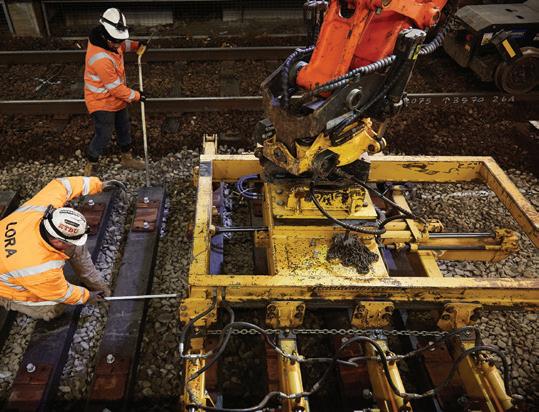

Look down at the tracks at Richmond Station in Melbourne – from behind the yellow line of course –and you won’t see concrete railway sleepers. Rather, those dark grey replacements are made of recycled plastic – a composite of polystyrene and end of primary life agricultural plastics from regional Victoria.
The sleepers are currently part of an 18-month trial by Metro Trains, during which they will be monitored against a variety of criteria. Should they pass the test, approval will likely be issued for deployment across Victoria’s Metropolitan Rail Network. Once approved, the sleepers will provide a suitable alternative for timber sleepers and low-profile concrete sleepers in mainline track.
Manufactured in Mildura in north-west Victoria by Integrated Recycling, the Duratrack® sleepers use local agricultural waste such as cotton bale wrap, vine covers and pipe from the mining industry, which was previously unable to be recycled and sent to landfill.
Recycled plastic makes up approximately 85 per cent of the content of each sleeper. This includes both rigid and flexible plastics alongside polystyrene, combined with virgin materials carrying specific functions to enable the performance required.
One kilometre of Duratrack sleepers (about 1,500 units) will use approximately 64 tonnes of recycled plastic. They are also fully recyclable at the end of their life – a major step towards creating a circular economy for Australian railway infrastructure.
Crucially, the properties the Duratrack® composite sleepers make them competitive with traditional sleepers on the market in performance, durability, and return on investment.
With a lifespan of up to fifty years, they last three times longer than timber sleepers and operate at par with concrete sleepers. They also require less maintenance than timber sleepers because they have low water absorption and are fire tolerant and resistant to termites, UV, fungal decay, rot and split.
These properties mean the sleepers’ environmental benefits are threefold: they reduce the need for timber resources; reduce concrete production (the second-largest carbon emitter in the world); and meaningfully recycle plastic waste.
DEVELOPING THE GUIDELINES FOR RIGOROUS TESTING
The big hurdle persisting throughout the development of the sleepers was the lack of standards for recycled plastic railway sleepers in Australia, which meant rail operators had no benchmark against which to assess the performance of this new material. Add to this the cost and time expenditure of testing, formulating and approving a new product – not to mention the inherent risks involved – and the undertaking was ambitious.
The Monash Institute of Railway Technology (Monash IRT) was brought on board to create the guidelines by which to measure the sleepers’ success.
The core component of the guidelines is to provide the required mechanical tests to critically evaluate whether the sleepers could functionally replace timber sleepers. A series of laboratory-based tests were proposed and designed to provide a comprehensive assessment of the sleeper and rail fastening system as a whole. Tests included:
♦ An Electrical Test to assess the capability of the sleeper system to provide adequate electrical insulation for use in circuited tracks in both dry and wet conditions.
♦ A Fastener Pull-Out Test to ensure that the fastening system used to secure either the rail or baseplate to the sleeper had adequate strength to maintain an appropriate clamping force once installed.
♦ A Bending Moment Capacity Test to ensure that there was sufficient strength in the manufactured sleeper so it would not break or deform excessively under load during service.
♦ A Fastener Repeated Load Test to ensure that the fastening system in combination with the sleeper material was capable of resisting the repetitive vertical and lateral loads during service. This test was particularly important where sleepers were to be used in tight radius curves, as it provided confidence in the fastening system to limit lateral rail movement.
♦ A Rail Seat Durability Test to measure whether the manufactured sleeper was capable of withstanding cyclic bending moments during service.
♦ A Sleeper Lateral Stability Test was designed to compare the alternative sleepers against timber sleepers in terms of lateral resistance.
The testing confirmed that the plastic-composite sleepers’ load bearing capabilities and durability made them a safe, cost-effective and sustainable alternative to timber sleepers.
Ravi Ravitharan, Director of Monash IRT, said the sleepers are currently only made in trial quantities, but this will change once approvals are granted.
“With successful outcomes from the current feasibility trials, the costs of composite sleepers are expected to come down with dedicated production lines to cater requirements of large quantities,” Mr Ravitharan said.
35 www.infrastructuremagazine.com.au November 2019 // Issue 13 AUSRAIL
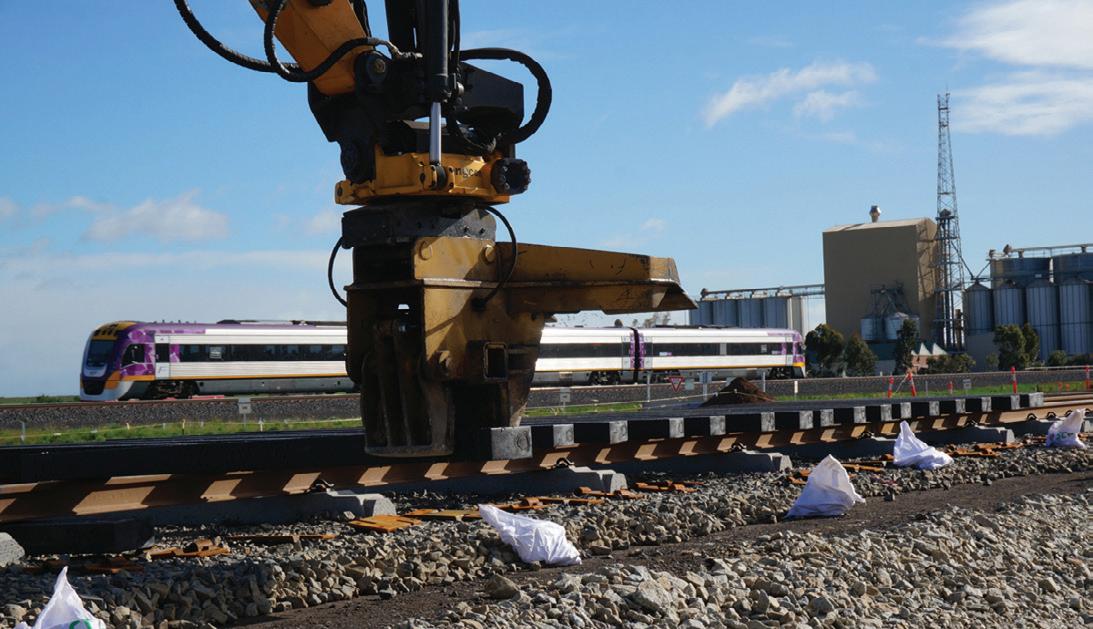
VITAL SUPPORT FOSTERS GROWTH
The development of the sleepers was made possible by an investment from Sustainability Victoria totalling $300,000 under its Research, Development and Demonstration (RD&D) grants program.
In line with the Victorian Government’s commitment to investing in research and development that will identify new end-market opportunities for recovered materials in local manufacturing, construction and other industries, one of Sustainability Victoria’s roles is to support the development of those end-markets for recycled products in Victoria.
The $4.5 million RD&D program supports projects that can increase the quantity of recycled products being sold in Victoria. Sustainability Victoria is currently funding numerous other projects that focus on recycling plastic into other types of infrastructure, such as footpaths, permeable pavements, municipal concrete structures, asphalt and roads.
Sustainability Victoria Interim CEO, Carl Muller, said the funding was about enabling Victoria’s growing circular economy.
“We need proven recycled content products and markets for those products to make recycling viable. This will build confidence and market demand,” Mr Muller said.
“With recent shifts in international markets, such as in China, there is an opportunity to develop strong local markets so the recovery of resources can be maximised.
“The environmental benefits of using recycled content products and materials are clear, including reducing the need for resources, reducing production of high energy products such as concrete and curbing greenhouse gas emissions from production.”
With technical and financial support, the Duratrack sleeper has achieved a series of green lights. In July 2017, it became the first Australian-made plastic railway sleeper to meet Monash IRT’s specifications for use. In April 2018 it also received provisional type approval from Queensland Rail (QR)
and began a twelve month in-track trial on two freight lines in the Darling Downs and the Lockyer Valley.
Metro Trains provisionally approved the trial of Duratrack® sleepers in October 2018 and 200 sleepers were installed in Richmond mid-2019. V/Line also provisionally approved the sleepers for in-track trials at the new Wyndham Vale stabling yard. Their performance will be closely monitored by track inspection and compared with reference sleepers installed nearby.
The teams at Integrated Recycling, Sustainability Victoria and Monash IRT hope the tests will verify sleeper design and strength requirements, as well as additional benefits such as track compliance and noise abatement.
A VAST CRITERIA TO MEET
The outcome of these trials will dictate whether the plastics sleepers are suitable for their respective operating environments. Different environments place specific demands on the sleepers: different axle load and speed requires sufficient mechanical strength; different curve radii requires strong lateral holding capability for fasteners and so on. Different temperature cycles require sufficient lateral stability and gauge to account for thermal expansion and contraction. Certain locations will require termite resistance.
But it was not enough for Duratrack® to meet these criteria alone. Other factors made the journey towards trials that much bumpier. There is a natural scepticism amongst rail engineers operating in a safety-conscious environment when asked to approve a new product. Whilst welcoming innovation, it is important to make sure the product will perform as expected.
Stephen Webster, General Manager of Integrated Recycling, said, “Sustainability needs innovation and collaboration to bring that innovation to commercial reality. The Duratrack® project required Monash IRT, Sustainability Victoria and the rail operators on this five-year journey.”
36 November 2019 // Issue 13 www.infrastructuremagazine.com.au AUSRAIL
Duratrack® sleepers have also begun trials on V/Line tracks. All image credits: Sustainability Victoria
Each rail operator undertakes its own approval process, which was timeconsuming before the in-track trials could commence. And since each state has a different rail gauge, one size sleeper does not fit all.
Despite the sleepers themselves crossing state boundaries, the plastic waste sourced comes exclusively from the Mildura region for the time being, as it makes economic sense to reduce transport costs and emissions associated with that process.
While there is work to do in the recovered resources and recycling space, momentum is building for government and industry to adopt more environmentallyconscious infrastructure.
“Victoria is investing in a strong and sustainable circular economy that is environment, jobs and economy focused, where recovering resources and using recycled content products is the norm,” Sustainability Victoria’s Carl Muller said.
The recycled plastic railway sleeper trial represents a step forward in sustainable approaches to railway infrastructure construction and maintenance and sets a strong precedent for how we may use innovation to turn challenges into opportunities.



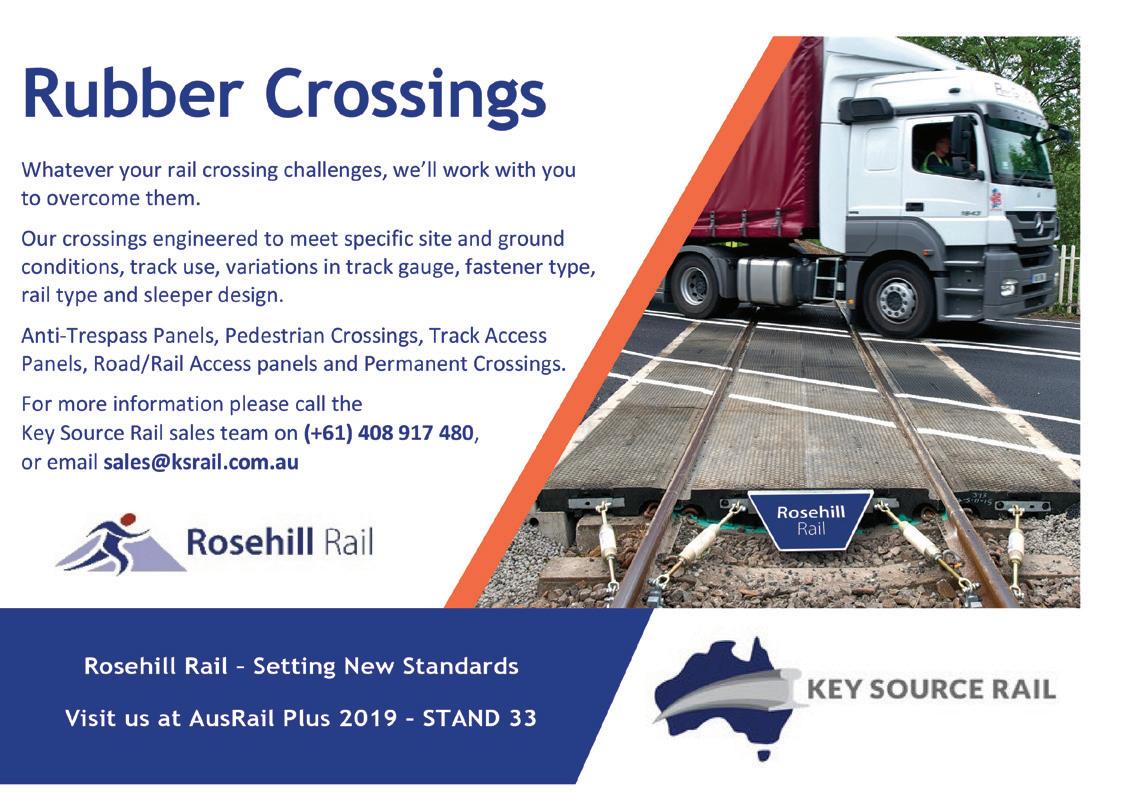
37 www.infrastructuremagazine.com.au November 2019 // Issue 13 AUSRAIL

TO CREATE OPPORTUNITIES FOR REGIONAL INLAND RAIL
38 November 2019 // Issue 13 www.infrastructuremagazine.com.au AUSRAIL
The Australian Rail Track Corporation (ARTC) has launched an Inland Rail Skills Academy aimed at creating opportunities for communities along the alignment throughout Victoria, New South Wales and Queensland.
The ground-breaking initiative aims to create education, training, skills development and employment opportunities, as well as building prosperity and sustainability, for residents in communities along the Inland Rail alignment.
Inland Rail Chief Executive Officer, Richard Wankmuller, said Inland Rail is set to not only change the way Australia moves freight between all mainland states, but act as a catalyst for positive change in many regional communities.
“Inland Rail will mean a new economic direction for some of these communities,” Mr Wankmuller said.
“A major focus will be on building skills so that people and businesses are ready to take part in this once-in-a-generation project and the Inland Rail Skills Academy is a catalyst to help them achieve that.
The areas of focus for the Inland Rail Skills Academy are:
Skills training and business capacity building
ARTC signed a Memorandum of Understanding (MoU) with the Australasian Railway Association at the 2019 Inland Rail Conference in Toowoomba, committing to combine their expertise to address skilled labour shortages in rail construction, maintenance and operations of freight rail as well as build the capacity of freight supply chains.

“We need to have people ready to undertake the work, businesses ready to bid for the work and regional communities along the alignment to capitalise on the opportunities this will bring their future workforces.
“The Inland Rail Skills Academy is about facilitating opportunities for those willing to take that step.”
The Academy consists of a series of partnerships with expert organisations such as training providers, government program delivery agencies and the private sector.
These partnerships will facilitate access by individuals to services which provide technical training and wrap-around support, accreditation for existing skills or introducing new training pathways as needed, as well as increasing access to existing upskilling programs for suppliers of goods and services.
Another key component of the Academy will be its ability to provide relevant and timely information and address gaps to ensure regional businesses are well informed and able to compete for supply chain opportunities.
The ARA is the peak body for the rail sector, with over 150 member companies, covering rail freight and passenger operations, track owners and managers, contractors (those that build track infrastructure), train manufacturers and suppliers, consultants and other companies that work in rail.
A key objective of the MOU will be to ensure any training pathways into occupations are the right ones for industry employers through apprenticeships and traineeships in rail related disciplines in regions along the alignment.
A second objective will be to build the capacity of small to medium enterprises in regional communities to participate in the Inland Rail supply chain.
Education, particularly in STEM subjects and related careers
Twenty undergraduate scholarships will be made available through the University of Southern Queensland, Charles Sturt University and La Trobe University to support local students to study in industries contributing to their region’s prosperity and social cohesion.
A total of seven scholarships will be awarded through two application rounds – 2019 and 2020 (three to four scholarships awarded each round). Successful applicants are required to start study within the next calendar year.
39 www.infrastructuremagazine.com.au November 2019 // Issue 13 AUSRAIL
ARA CEO Danny Broad, University of Southern Queensland Vice-Chancellor Prof Geraldine Mackenzie, USQ Chancellor John Dornbusch, Inland Rail CEO Richard Wankmuller and Inland Rail Director of Engagement, Environment and Property, Rebecca Pickering.
♦ financial support, students will be provided with mentoring, soft-skill development, career readiness, wellbeing/ cultural support and other assistance aimed at supporting them to successfully complete their degree.
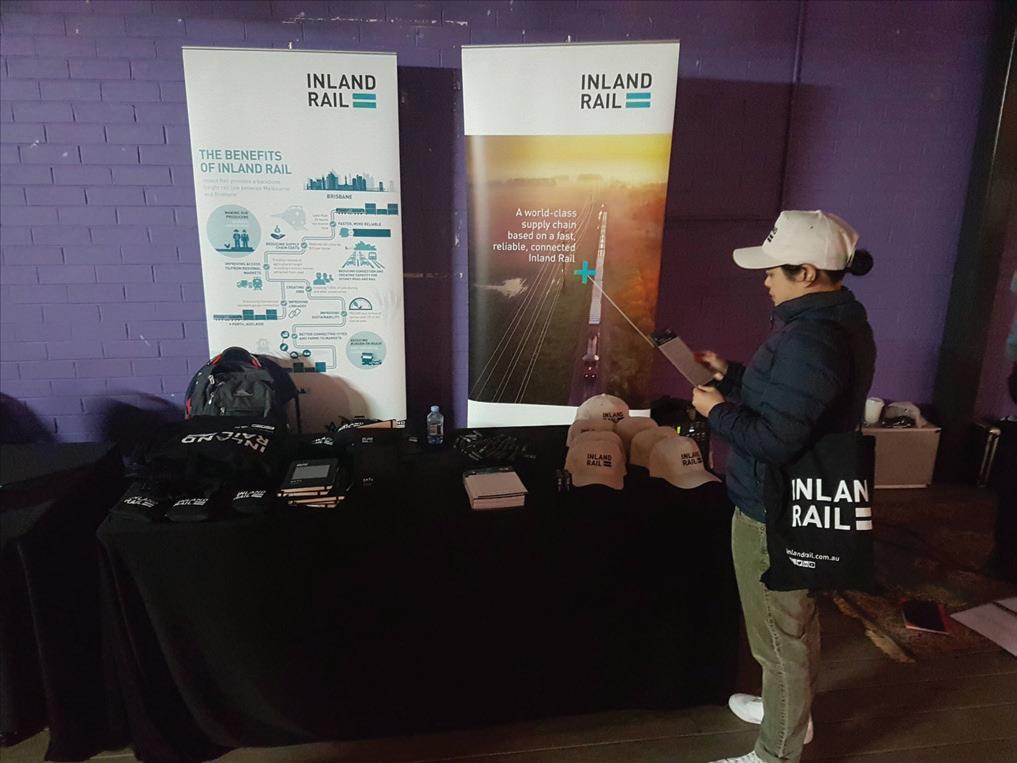
available to students undertaking full-time undergraduate degree qualifications. Students can be school leavers through to mature age.
The scholarship program captures a broad range of study disciplines related to regional sustainability, regional careers and Science, Technology, Engineering and Mathematics (STEM).
Regional students living in local government areas along the Inland Rail alignment, Indigenous people and those experiencing financial/personal hardship are strongly encouraged to apply for assistance.
Applications are now open and closing dates for each university varies.
♦ Applications for La Trobe University close 30 October 2019 for 2020 scholarships: https://www.latrobe.edu.au/ scholarships/inland-rail-scholarship
♦ Applications for the University of Southern Queensland close 17 November 2019 for 2020 scholarships: https:// www.usq.edu.au/scholarships/inland-rail-scholarship.
♦ Applications for Charles Sturt University close 5 February 2020 for 2020 scholarships: https://study.csu.edu.au/ get-support/scholarships/find-scholarship/foundation/ any-year/the-inland-rail-scholarship
The Inland Rail Skills Academy will also promote
through primary and secondary schools, allowing students to participate in a series of handson workshops which aim to inspire learning in STEM and interest in careers commencing
Increasing staff
The Academy will also help to develop Rail Employee Capability, focusing on enabling ARTC employees to upgrade their skills and qualifications to deliver
Inland Rail Project Engineer, Penny Nugent, is working on the Gowrie to Helidon section of the Inland Rail and joined ARTC for the experience of working on a once-in-ageneration project.
“I have been a civil engineer for nearly six years and joined ARTC 15 months ago,” Ms Nugent said.
“The main reason I joined the Inland Rail project was to gain further experience in the design and planning of rail infrastructure, in particular tunnelling experience.
“This project will expose me to a whole new level of complex challenges, and I am looking forward to working on the tunnel that is going to be built through the Great Dividing Range… this is an amazing project to be a part of.
“The skills I will gain during the next few years will prepare me to work on other major infrastructure projects in Australia or worldwide. There are a number of major projects in the pipeline around Australia at present, so it is an exciting time to be involved in the infrastructure industry.”
Ms Nugent said working for Inland Rail will open up a range of career opportunities for her to work in infrastructure and the transport industry.
“At community engagement sessions, I get a whole range of questions about the opportunities this project will deliver, and I am confident in voicing the benefits it will bring to the region, including training and skills development opportunities.”
♦
40 November 2019 // Issue 13 www.infrastructuremagazine.com.au AUSRAIL
A Charles Sturt University student looks at the options on display for the Inland Rail Skills Academy at a recent open day on campus.
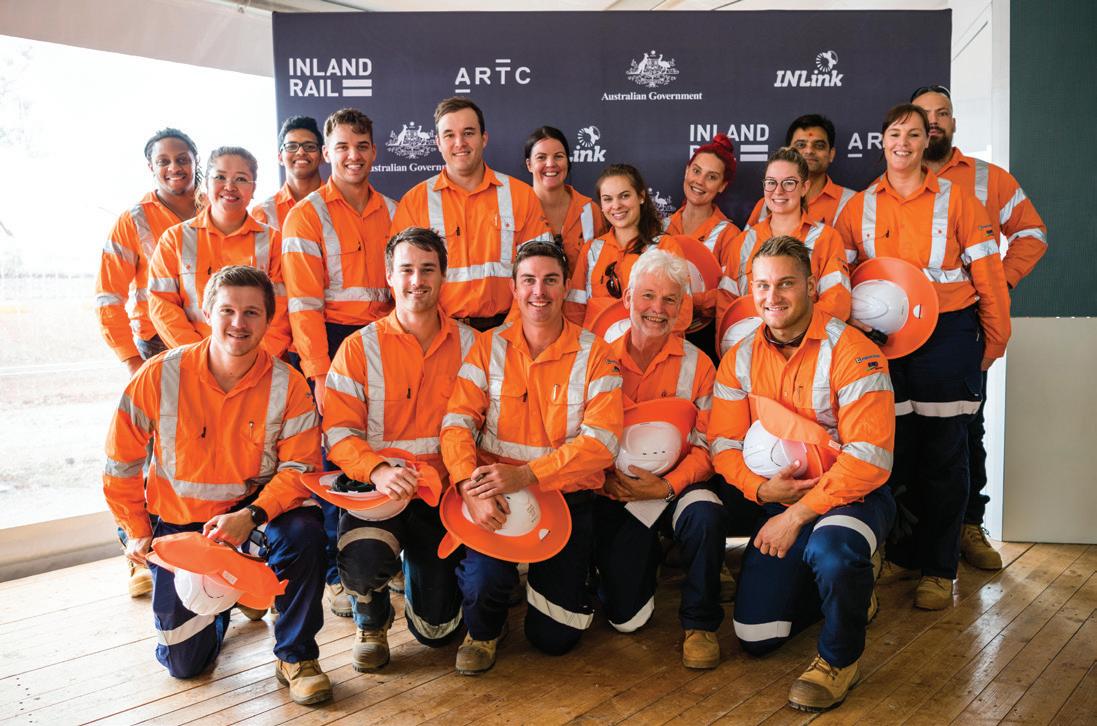
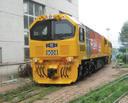





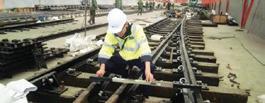
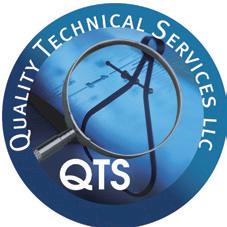
•
•
•
•
•
41 www.infrastructuremagazine.com.au November 2019 // Issue 13 Quality Verification of Railway Locomotives, Wagons, Steel Rails & Track Turn-Outs
Pre-award audits of manufacturers, subcontractors and suppliers
•
Experienced, certified and qualified inspectors
Verification of manufacturing and testing in accordance with AS standards
Surveillance inspections throughout the entire manufacturing process
•
Individual inspection and test of completed equipment
Pre-delivery and ship loading inspections
ISO 9001-2015 QMS certified company Quality Technical Services LLC Shanghai Operations Office Contact: Frederik Ford Mobile: +86-13501790361 www.qtsinspect.com AUSRAIL For more information on the Inland Rail Skills Academy, please visit inlandrail.artc.com.au.
Part of the INLink construction team training for construction on the Parkes to Narromine section.
SPEECH INTELLIGIBILITY WITH DIGITAL PA SYSTEMS
Public address systems specialist tm stagetec systems will be exhibiting at AusRAIL Plus 2019. Ahead of the event, the company outlined for Infrastructure its highly intuitive and highly customisable digital PA range.
Passenger rail operators rely on clear, consistent public address (PA) systems to convey information to passengers. Commuters accessing most of the stations on the Sydney Trains network can already hear tm stagetec systems’ digital PA system in action.
The product is designed to operate on any scale, and to be highly intuitive for users to operate. From a straightforward system with just one speaker, to configurations involving many speakers, tm stagetec systems says its digital PA is designed to be effortlessly customisable, and completely networkable.
High-quality, reliable matrix and paging systems make digital PA suitable for larger areas. The systems feature audio prioritisation, DSP, ambient noise control, and the ability to incorporate paging stations.
An operator’s digital PA system can be monitored and managed from a single webpage, providing customised control from a central point – particularly useful for larger scale venues like large train stations.
Already useful for transport operators, the system’s automatic digital voice announcement capabilities are enhanced with a web-based GUI designed to be easy to operate, with multiple languages and text-to-speech capabilities.
And a mobile PA platform lets staff make announcements from mobile phones and computers without any additional hardware.
The mobile PA announcements can be for single and grouped zones. Users also have the ability to listen to zones from a mobile phone as well as GPS locate a position and automatically connect to the zone, which is perfect for train stations.
The system is further supported with audio archiving capabilities which store high quality audio recordings for later use, as well as hearing assistance capabilities, and help point integration.
See all the latest from tm stagetec systems and the digital PA range at AusRail Plus in Sydney, 3-5 December at the ICC. Visit them at stand 46 or visit www.tm-systems.com.au/digitalpa.

42 November 2019 // Issue 13 www.infrastructuremagazine.com.au AUSRAIL // PARTNER SOLUTIONS
DELIVERING
www.infrabuild.com InfraBuild Trading Pty Limited ABN 50 007 519 646 We believe in building a future full of possibilities. InfraBuild. Building Possibilities. a company of Formerly www.infrabuild.com
InfraBuild enables Australian infrastructure
InfraBuild is Australia’s largest integrated manufacturer and supplier of steel long products and solutions to the infrastructure, commercial and residential construction, engineering, mining and manufacturing, and agricultural and rural markets, and a leading metals recycling business.
After a century at the forefront of Australian construction, InfraBuild (formerly LIBERTY OneSteel) is taking its next exciting step as Australia’s leading integrated steel manufacturing, processing, distribution and recycling business.
The new brand name reinforces InfraBuild’s commitment to and investment in the innovation, manufacturing and supply of solutions and products to the rapidly developing construction of nationbuilding infrastructure in Australia, along with commercial and residential construction, and the fabrication, manufacturing, mining and rural sectors.
A trusted partner in construction
InfraBuild is a company of LIBERTY, a member of the GFG Alliance, an international group of businesses founded and owned by the British Gupta family. GFG combines some of the world’s leading industrial, natural and financial resources, working together towards the delivery of a common industrial strategy.
InfraBuild products and solutions have an essential role to play in the construction of infrastructure projects, steel-framed buildings and buildings framed in concrete across Australia.
We are on a mission to inspire and drive nation-building infrastructure and the construction of Australia’s tomorrow using local resources, sustainable solutions, new technology and big thinking.
INFRABUILD IN AUSTRALIA
InfraBuild Construction Solutions
Australia’s premier full-service reinforcing supplier, with a national network of 35 branches supplying quality custom prefabricated reinforcing solutions and an extensive range of reinforcing products and accessories to tier 1 builders and mega infrastructure projects.
InfraBuild Steel Centre
Australia's foremost supplier of metals and building products. Our experts consult customers at every stage to manage their requirements, utilising our fully programmable processing equipment to meet their accuracy, tolerance and repeatability needs.
InfraBuild Recycling
Specialises in the safe handling, collection and processing of more than 1.4 million tonnes of ferrous and non-ferrous scrap metal every year.
InfraBuild Wire
Australia's largest manufacturer of wire products and accessories, plus provider of fencing solutions, for the construction, manufacturing and rural sectors.
InfraBuild Steel
Operates two electric arc furnaces with production capacity of approximately 1.5 Mtpa and four rod and bar rolling mills. From manufacturing sites in Victoria and New South Wales it supplies a range of products to steel distributors nationally, including InfraBuild's distribution businesses.
2 © InfraBuild Trading Pty Limited 2019
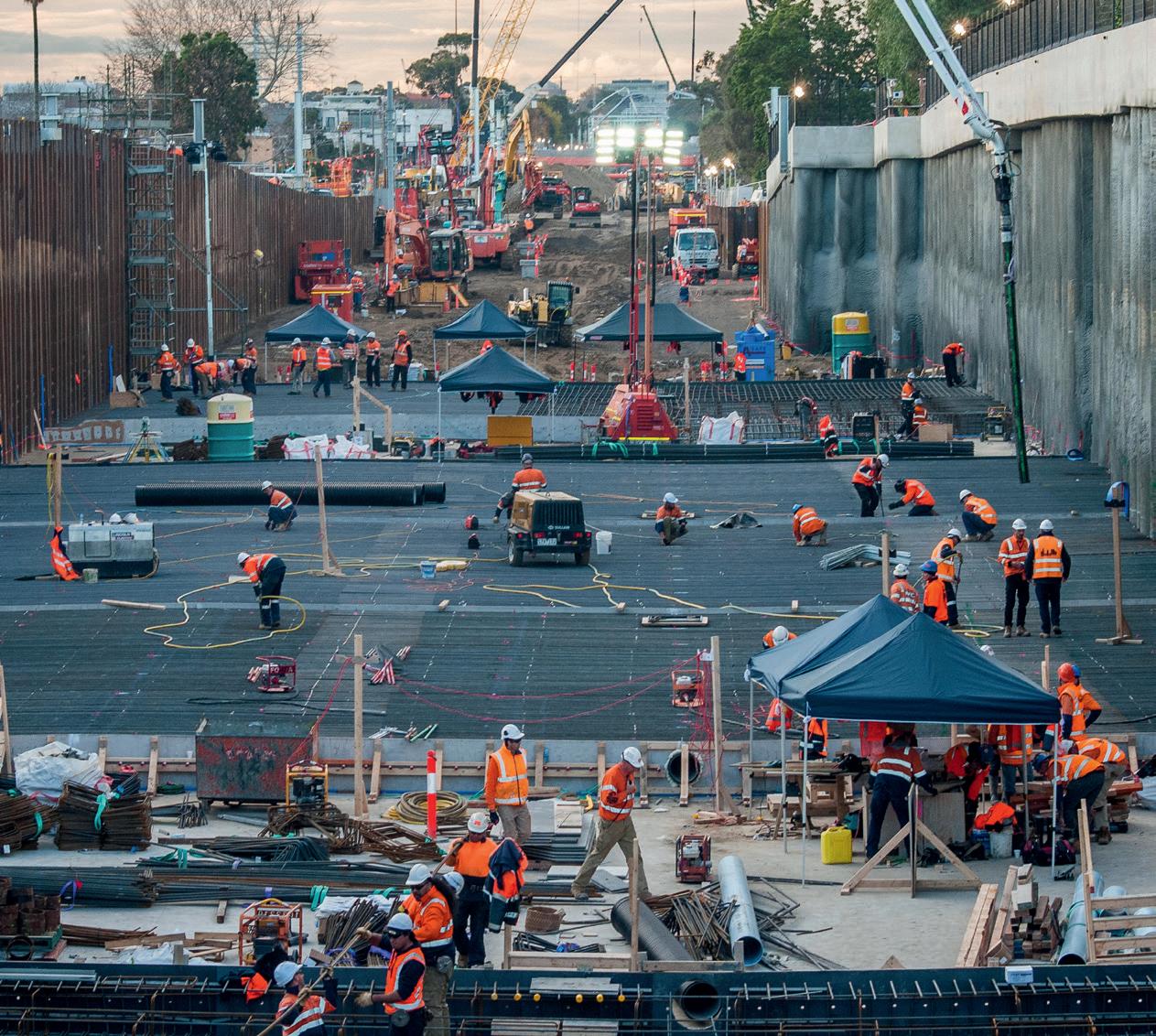
SUSTAINABILITY
InfraBuild is committed to conducting its business to global environmental, social and commercial standards. It is also committed to the role played by steel in the circular economy, including the promotion of the recovery, reuse and recycling of steel and other products.
This includes optimising the eco-efficiency of products through the product lifecycle. Furthermore, it means increasing resource and energy efficiencies, and maximising use of recycled steel and sustainably generated energy from GFG Alliance’s SIMEC Energy Australia in the production and distribution of our products.
Manufacturing
InfraBuild Steel (formerly LIBERTY OneSteel)
InfraBuild Wire (formerly LIBERTY OneSteel)
Steel Processing and Distribution
InfraBuild Construction Solutions (formerly LIBERTY OneSteel Reinforcing)
InfraBuild Steel Centre (formerly LIBERTY OneSteel Metalcentre)
Recycling
InfraBuild Recycling (formerly LIBERTY OneSteel Recycling)
InfraBuild can help projects earn IS rating tool points from the Infrastructure Sustainability Council of Australia (ISCA) when they use InfraBuild products supplied with an Environmental Product Declaration (EPD).
www.infrabuild.com 3
InfraBuild in Action: Case Studies
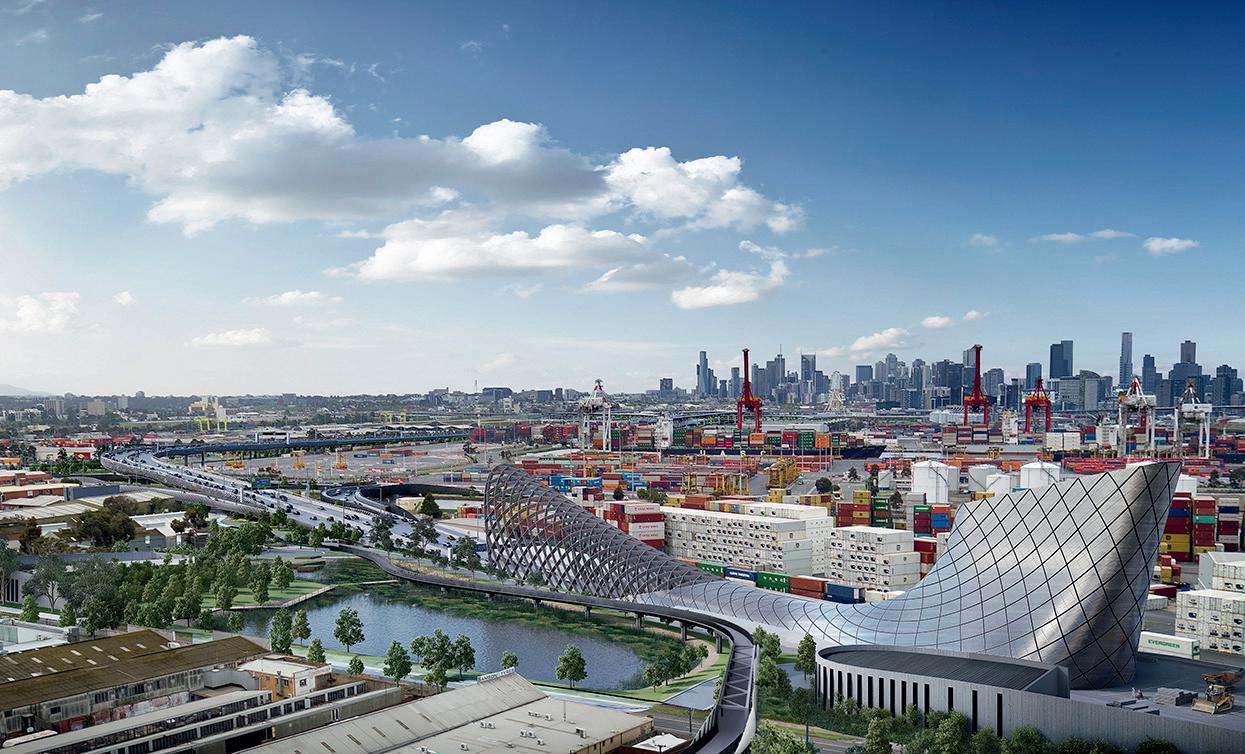
• The order for approximately 100,000 tonnes of reinforcing is one of the largest single orders for Australian reinforcing steel in the country
• Complex logistics solutions, including pre-manufacture and storage of reinforcing steel, are keeping the project on track
• 6000 new jobs have been created, 150 at InfraBuild Construction Solutions' facilities in Melbourne
West Gate Tunnel
Victoria, 2019
InfraBuild has been awarded the contract to supply almost 100,000 tonnes of reinforcing steel for the West Gate Tunnel Project between Docklands and Laverton in Melbourne. The order is one of the largest single orders for Australian reinforcing steel ever placed in the country.
The steel will be used to reinforce the lining of the Project’s twin tunnels, bridge segments, noise walls and retaining walls.
InfraBuild has scaled up operations at its Melbourne Construction Solutions facilities to meet the demands of the Project over the next four years. An additional 150 staff have been employed and specialist equipment commissioned to create customised prefabricated engineered steel mesh.
InfraBuild Construction Solutions has already enabled the completion of a critical milestone in the early stages of the
West Gate Tunnel Project by supplying 4500 tonnes of reinforcing steel for the Project's Tunnel Zone.
The steel supplied for the Project’s Northern Portal was used to construct a base slab with approximately 20,000 cubic metres of reinforced concrete. The site is where the project’s two tunnel boring machines (TBMs) are being assembled to begin excavating the Project’s twin tunnels.
This first stage of the Project required a complex logistical solution with as many as 65 fully loaded semi-trailers on site at one stage. InfraBuild Construction Solutions played an essential role in keeping work flowing by engaging early on with the project team. The decision to premanufacture the reinforcing steel and keep it in storage helped keep the Project on track by ensuring steel fixers on site had a continuous flow of work.
4 © InfraBuild Trading Pty Limited 2019
Artist's impression of the Northern Tunnel Portal. Image courtesy the West Gate Tunnel Project.
Metro Tunnel
Victoria, 2019
InfraBuild Construction Solutions is supplying up to 150 tonnes of prefabricated cages to the Melbourne Metro Tunnel Project every day, with the total supply package in the order of 22,500 tonnes.
The Metro Tunnel Project includes the construction of two 9km tunnels under the city and five new underground stations to allow more trains to run to and from the suburbs. Up to 250 steel reinforcement cages will be installed in each of the five new stations. Sixteen thousand tonnes of piling cages will be supplied to the Parkville, State Library and Town Hall stations, and 6500 tonnes of diaphragm wall (D-Wall) cages will be supplied to the North Melbourne and Anzac stations.
The D-Wall cages are constructed from Australianmanufactured InfraBuild reinforcing steel in InfraBuild Construction Solutions' Melbourne processing facility.
Innovative Glass Fibre Reinforced Polymer (GFRP) cages are inserted within the cages as an advantageous replacement for conventional steel rebars that allow the Tunnel Boring Machine (TBM) to break through the diaphragm walls and secant piles without inflicting damage to either, rapidly connecting the rail tunnels to the stations.
InfraBuild Construction Solutions has scaled up its capacity to fabricate and house the completed GFRP cages across its sites. In addition, InfraBuild Construction Solutions has organised for progressive, just-in-time delivery of cages to the Metro Tunnel construction sites to minimise on-site storage and maintain the project's pace.

• InfraBuild Construction Solutions is supplying up to 150 tonnes of prefabricated cages per day
• 22,500 tonnes of reinforcing steel will be supplied to the project in total
• InfraBuild Construction Solutions has increased its capacity to meet the needs of the project
www.infrabuild.com 5
Metro Tunnel eastern tunnel entrance. Image courtesy Metro Tunnel.
InfraBuild in Action: Case Studies

WestConnex
New South Wales, 2018
InfraBuild's integrated supply chain has been extensively involved in Sydney's massive WestConnex project, which is being built with connections for the M4–M5 Link, the future F6 Extension and Sydney Gateway. Twin 9km tunnels will stretch from the St Peters Interchange to Kingsgrove roughly parallel to the existing M5 East and double the motorway corridor from two to four lanes in each direction.
InfraBuild Steel Centre's state-of-the-art 7-axis FICEP robotic coping machine facilitated the supply of several thousand tonnes of universal and welded columns to the St Peters Interchange.
The robotic coping machine enabled InfraBuild Steel Centre to bevel the ends of steel beams on site, as well as weld stiffener plates onto the end of each column. Avoiding the need to shunt thousands of tonnes of steel to a fabricator meant the beams could be transported
• 1600 piles will support road pavement and road infrastructure at the WestConnex St Peters Interchange
• Twin 9km tunnels will stretch from Sydney's St Peters to Kingsgrove
• High-quality steel bar has been used to manufacture 150,000 bolts for reinforcing the project's twin tunnels
direct to site ready to install after processing at InfraBuild Steel Centre’s Wetherill Park branch. One thousand six hundred piles, each of them 36 metres long, will support the road pavement and bridge infrastructure at the site.
As a local, integrated supplier, InfraBuild was able to offer an additional benefit by adapting its rolling and supply schedules to suit piling contractor Wagstaff’s timeline requirements. InfraBuild has also supplied the high-quality steel bar used in the manufacture of over 150,000 bolts, which will be used to reinforce the project's massive 9km twin tunnels.
Structural steel was also supplied by InfraBuild Steel Centre to the award-winning Concord Road to M4 West On-Ramp. The scale and complexity of the project required precision engineering of welded beams to tight tolerances, and bulk processing to meet the fastturnaround delivery requirements of the project.
Sydney's WestConnex project.
6 © InfraBuild Trading Pty Limited 2019
Optus Stadium
Western Australia, 2018
InfraBuild Steel Centre collaborated closely with fabricator Civmec to supply 16,000 tonnes of structural steel to construct the five-level Perth Optus Stadium superstructure. Another 13,500 tonnes of reinforcing steel was supplied by InfraBuild Construction Solutions. The structural steel supplied for the stadium frame included welded steel beams, steel plate and large-diameter circular hollow sections (CHS). Additional assorted steel materials were supplied to Civmec in the form of hot rolled structural (HRS) sections, merchant bar and tubulars.
InfraBuild Steel Centre was also engaged by Civmec to supply 900 tonnes of seamless pipe for the construction of the stadium's Matagarup footbridge. InfraBuild Steel Centre staff were embedded in the Civmec office and worked closely with the project managers to meet the complex demands of the build.


Barangaroo
New South Wales, 2018
Lendlease’s Barangaroo South project was named the 2018 Australian Development of the Year at the Property Council of Australia’s Innovation and Excellence Awards. In total, the project won five awards, including the InfraBuild-sponsored Best Mixed Use Development Award.
InfraBuild played a major role during the 4.5-year supply period of Lendlease’s Barangaroo project and has continued to do so in subsequent phases of the development. InfraBuild Construction Solutions supplied more than 77 million different steel products including 45,000 tonnes of reinforcing steel in total. All product was delivered with ACRS certification. Processes were implemented to ensure a 20 per cent reduction in embodied carbon was achieved for reinforcing steel, which contributed to the project’s 6 Star Green Star rating.
www.infrabuild.com 7
www.infrabuild.com We are on a mission to inspire and drive nation-building infrastructure and the construction of Australia’s tomorrow using local resources, sustainable solutions, new technology and big thinking. InfraBuild. Building Possibilities. a company of Our name has changed
Delivering Growth; Creating Opportunity; Embracing Technology

THE LARGEST RAIL EVENT IN THE
SOUTHERN HEMISPHERE RETURNS TO SYDNEY
WHAT TO EXPECT, BESIDES THREE DAYS OF HIGHLY BENEFICIAL ENGAGEMENT WITH YOUR PEERS, SUPPLIERS AND SERVICE PROVIDERS:
• 1000+ senior rail sector, government and academic leaders participating in the conference
• Plenary and technical streams across three informative days
• 400+ exhibiting organisations from a diverse range of suppliers and service providers
• 13 catered functions for attendees over three days of premium networking including: Welcome Reception, Networking Drinks, 2 major Gala Dinners and Luncheons
• And more ARE YOU AN ARA MEMBER?
ARA Members receive a 20% discount on conference attendance, sponsorships and exhibitions (conditions apply)
YOUNG RAIL PROFESSIONALS – AUSRAIL SHINES A SPOTLIGHT ON TOMORROW’S LEADERS
• Young Rail Professionals Pitching Competition
• Next Generation Conference Scholarships, sponsored by Bombardier.
• NEW FOR 2019 – Mentor 50% discount rate now available for those 35 years and under (conditions apply)
• Visit www.ausrail.com for full information.
OUR SPONSORING PARTNERS INCLUDE:


To promote your organisation, secure a networking package, exhibit or advertise, please email: Deborah.Bocock@informa.com.au
www.ausrail.com
LANYARD SPONSOR APP SPONSOR INNOVATION HUB SPONSOR NEXT GENERATION CONFERENCE SCHOLARSHIP SPONSOR SUPPORTING SPONSORS EXHIBITION NETWORKING DRINKS SPONSOR PREMIUM PLATINUM AND GALA DINNER SPONSOR PREMIUM GOLD AND RTAA YELLOW TIE DINNER SPONSOR GOLD SPONSOR SILVER SPONSOR

Major airport upgrades are underway across Australia, especially a boom in Queensland. As the sector gets to work on this construction, it’s also preparing for future challenges and opportunities.
This time last year, the AAA renewed its call for sustainable regional airport funding after what had already been a long and hard-fought campaign.
It was a plea that resonated across Queensland, where residents knew only too well the importance of connectivity in the regions.
This year, the AAA National Conference returns to the Sunshine State as the application process for the first round of grants is underway.
The $100 million fund, to be delivered over four years, will be a huge boost for regional Australia, allowing airports to finally secure the funding they need for essential maintenance and upgrades.
That work will help keep their airports safe and compliant for years to come.
It is just one milestone moment of 2019 to be marked at the conference this year. But it is perhaps more fitting than ever that this year’s event takes place in Queensland.
PROJECTS DRIVING TOURISM AND TRADE
The state is on the verge of realising the benefits of years of planning and investment to unlock new possibilities for its people and businesses. The opening of Brisbane Airport’s new runway is now less than a year away, and when that first aircraft touches down, it won’t just be a transformative moment for the airport, but for the state itself.
New service announcements have already started to flow as Brisbane prepares for greater connectivity to the US and Asia. More will no doubt come once the runway is operational.
We often talk about how airports can be the economic engines of their communities, driving tourism and trade that simply wouldn’t be possible without them. In 2020, Brisbane’s engine is revving up.
If that was the only significant airport project underway in the state, it would be a huge boon in itself, but further north, Sunshine Coast Airport is planning to unveil its new runway in the very same year.
To the south, Gold Coast Airport will double the size of its existing terminal by 2021, giving the tourism hotspot an airport befitting its recent growth and plans for the future.
Even in Far North Queensland, changes are in train, with Cairns Airport’s terminal redevelopment taking shape as we speak and bringing greater connectivity to the region’s tourism offering with it.
44 November 2019 // Issue 13 www.infrastructuremagazine.com.au AIRPORTS
GROWTH, SUSTAINABILITY AND

FOR AUSTRALIA’S AIRPORTS
by
45 www.infrastructuremagazine.com.au November 2019 // Issue 13 AIRPORTS
Caroline Wilkie, CEO, Australian Airports Association (AAA)
RESILIENCE:
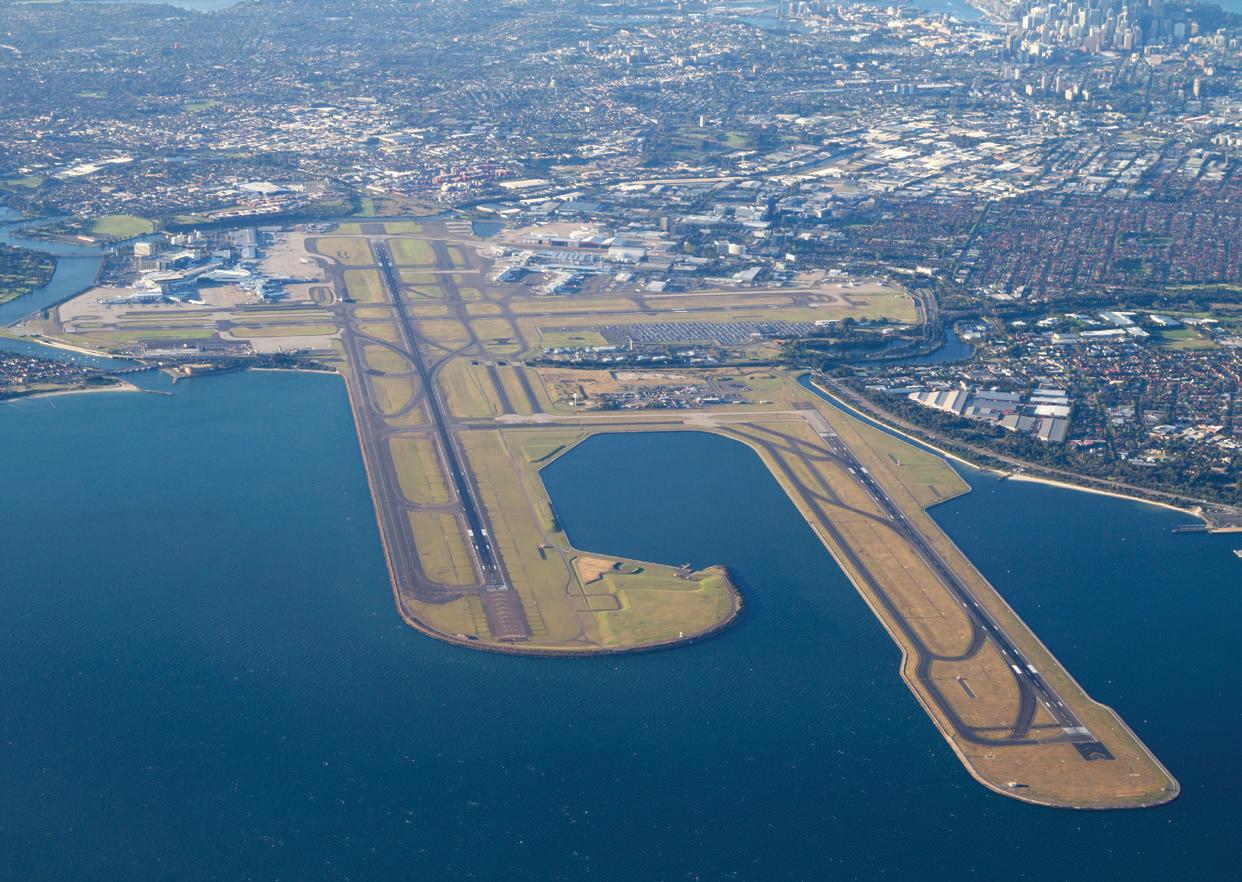
Individually, these projects will create exciting opportunities for their cities and regions. Combined, they’ll deliver Queensland a connected and worldleading tourism network to be proud of.
What is most exciting for the industry as a whole is that this trend of investment in nation building and community-shaping projects is not just confined to Queensland.
Planning for new runways continues in Melbourne and Perth, with those projects set to help redefine our national aviation network in the coming decade. Adelaide Airport’s terminal expansion
is already underway and Hobart Airport has plans for growth of its own. Both projects are set to make the most of their iconic tourism destinations.
Sydney Airport is reshaping its brand for the traveller of today – and tomorrow – as it continues to invest more than $1 million a day in airport improvements.
And in our north, Darwin International Airport has delivered new facilities that make the airport an unmistakable destination in itself, bringing the Territory’s arts, culture and community to the heart of its terminal.
It is an exciting time for the industry.
AN EVER CHANGING OPERATING ENVIRONMENT REQUIRES INDUSTRY COLLABORATION
As we plan for the growth and opportunity these investments will bring, there are new and emerging risks we must also prepare for.
Changing government security requirements will see new screening arrangements at many Australian airports, as the industry works with government to respond to an evolving threat environment.
Industry collaboration on this issue is crucial. Airports are pressing on with

46 November 2019 // Issue 13 www.infrastructuremagazine.com.au
AIRPORTS
the task of working with government to meet changing requirements and ensuring the safety and security of the travelling public always comes first.
But there are other emerging challenges that the industry must address.
Almost a year ago, Gatwick Airport ceased operations after an alleged drone sighting in the local airspace raised safety fears. The disruption was not merely an inconvenience to travellers, but came at significant cost to the aviation industry.
It was a stark reminder that airports’ operating environment is ever-changing, and new technologies are creating both opportunities and challenges.
Gatwick Airport Head of Security, Damien Trower, will discuss the incident at this year’s National Conference, providing advice to his Australian counterparts on what the rise of drones means for us here in Australia.
It is a timely opportunity to hear from Damien as we continue to work with government to develop new strategies for managing remotely-piloted aircraft systems that may infringe on the airspace surrounding our airports.
It is through information sharing and collaboration with our global peers

that better solutions and consistent approaches to new and emerging issues will be achieved.
INVESTING FOR THE FUTURE MUST BE SMART, SUSTAINABLE AND CONNECTED
With our major airports planning $20.6 billion in investment over the next decade, new infrastructure that uses technology to smooth traffic flows and anticipate passenger needs will be a prevalent feature of the airports of the future.
This will have wider impacts too, as smarter infrastructure relieves congestion around airport precincts, minimises noise and ensures airports are better integrated than ever before with their communities.
This year’s conference will include a dedicated sustainability stream for the first time, recognising the increasing focus on ensuring infrastructure doesn’t just build capacity and efficiency, but also adds long-term value to the community.
We will hear from airport leaders about how they are building climate resilience into their long-term infrastructure planning. We’ll also hear from those that are forging more meaningful connections with their communities, understanding airports must reflect a

strong sense of their home city or town to reach their fullest potential.
These are increasingly important measures to ensure airports are natural extensions of their communities, embodying the culture and spirit of the people they work alongside.
DIVERSE TEAMS BENEFIT US ALL
This year also sees the AAA host the inaugural Women in Airports Forum. The event follows last year’s creation of the Women in Airports Network and Young Airport Professionals group to support the development of greater diversity in the airport industry.
With demand for air travel continuing to rise, we will need a diverse and sustainable workforce to make sure Australia can capture the opportunities to grow and thrive.
The Women in Airports Forum will allow us to discuss tangible actions to support greater participation of women across all aspects of airport operations as we prepare for even more growth. This is a crucial and growing focus as we build a stronger focus on diversity for the industry.
The AAA National Conference will be held from 19-22 November on the Gold Coast.
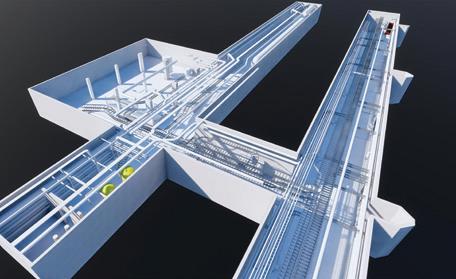
tool for laser scanning extensive, complex environments. With TIMMS*, indoor maps and models covering thousands of square metres of space can be mapped in minutes and entire buildings mapped in a day
The TIMMS provides both LiDAR and spherical video of a facility and produces fast and accurate geo-located maps, enabling Taylors to translate environments into visual 2D & 3D layouts
Our experience in scanning using TIMMS is revolutionising the way we understand, operate and improve our built environments This has proven successful in mapping data around:
• Airports
• Hospitals
• Schools & Universities
• Shopping Centres
•
• Tunnels, Carparks & Basements
• Warehouses & Industrial Facilities
Office Buildings & High rises
• Event Spaces & Exhibition Centres
We can create 3D reality models in a variety of formats to provide a solution to suit the end user ’s requirements
* TIMMS: Trimble Indoor Mobile Mapping System
www.taylorsds.com.au Contact us today:
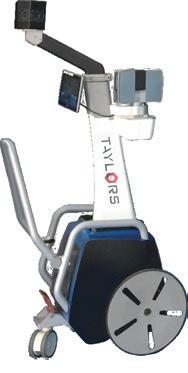
47 www.infrastructuremagazine.com.au November 2019 // Issue 13 AIRPORTS
Taylors TIMMS, the perfect
WESTERN SYDNEY AIRPORT -
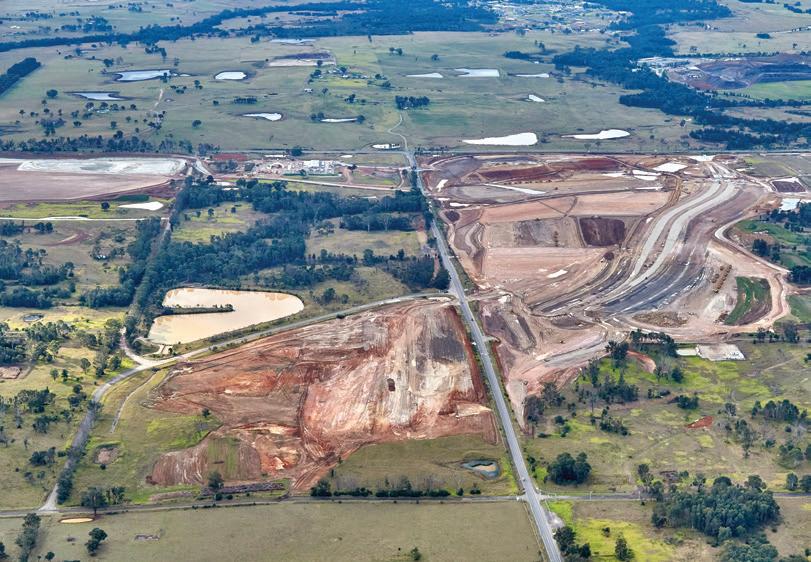
It’s been one year since construction began on the Western Sydney International (Nancy-Bird Walton) Airport. After first being flagged in the 1940s, the bulldozers have finally moved in and work to build Sydney’s new Airport has hit the ground running.
“Ioften say that building this Airport is neither a sprint nor a marathon – it’s both,” Graham Millett, Chief Executive Officer of Western Sydney Airport, said.
“We’ve been set a unique and mammoth task – to build a greenfield airport that will eventually become the biggest gateway to Australia, all while working with industry, the community and all levels of government to ensure the project is a catalyst for the transformation of Western Sydney.
“This really is a once-in-a-lifetime opportunity and we’re determined to get it right.”
After decades of uncertainty, during which time the idea of building a new airport for Sydney became part of the city’s mythology, in 2014 the Australian Government announced that Badgerys Creek would be the site of Sydney’s new airport.
In 2017, it established Western Sydney Airport, the Australian Government-owned company that is building and will eventually operate Western Sydney International.
Prime Minister, Scott Morrison, gave the long-awaited signal to fire up the bulldozers on 24 September 2018.
“We’ve been running at full speed ever since,” Mr Millett said.
“Within a year we’ve moved more than 1.5 million cubic metres of earth, the Airport has been officially named after one of Australia’s great aviation pioneers, we’ve awarded the contract for major earthworks and started the search for the designers and builders of the Airport terminal.
“We’ve also just cut the ribbon on the Western Sydney International Experience Centre, which is one of our most important milestones to date because it’s the first structure completed on the Airport site.
“The Experience Centre is a space where our community can learn about more than just the Airport itself, but the fact the Western Sydney region is at the cusp of a huge, exciting transformation – and why now is the right time.
“The insatiable interest in this Airport never ceases to amaze us – within the first few days of the Centre opening, we had hundreds of visitors through the doors.”
THE CONSTRUCTION TASK AHEAD
Western Sydney International is one of the biggest earthmoving projects in Australia’s history.
Around 25 million cubic metres of earth will need to be moved on what is a large and hilly site – around 1780 hectares (double the area of Kingsford-Smith Airport) with the difference between the highest and lowest points equal to a 12-storey building.
The shifted earth will largely remain on site, with the amount needed to fill the valleys roughly equal to what will be taken off the hills, meaning fewer trucks on the road.
Early earthworks, which involves moving 1.8 million cubic metres of earth on six per cent of the site, is being carried out by a joint venture between Lend Lease and CPB Contractors.
The joint venture has also been awarded the contract to carry out major earthworks following a competitive procurement process, with work to begin in early 2020.
While the construction of the Airport terminal will not begin until 2022, a global design competition is underway, with the architectural contract set to be awarded by the end of 2019, when the first concept designs for the Airport’s terminal precinct will be released.
“We’ve shortlisted five parties that will create their vision for the Airport’s terminal precinct, which includes a plaza, a public transport interchange and the integrated international and domestic passenger terminal,” Mr Millett said.
“We’ve required each architectural team to outline how they intend to involve university students with a link to Western Sydney in the Airport design process because we want to ensure that this is a genuine learning opportunity for our local students.
“There are many factors that will have to come together in the design to ensure our customers have a seamless experience in an enjoyable environment.
“From the moment they arrive, we want passengers to have a stress-free journey – we want an airport that passengers love using and that offers airlines an efficient and reliable product.
48 November 2019 // Issue 13 www.infrastructuremagazine.com.au AIRPORTS
AIRPORTS
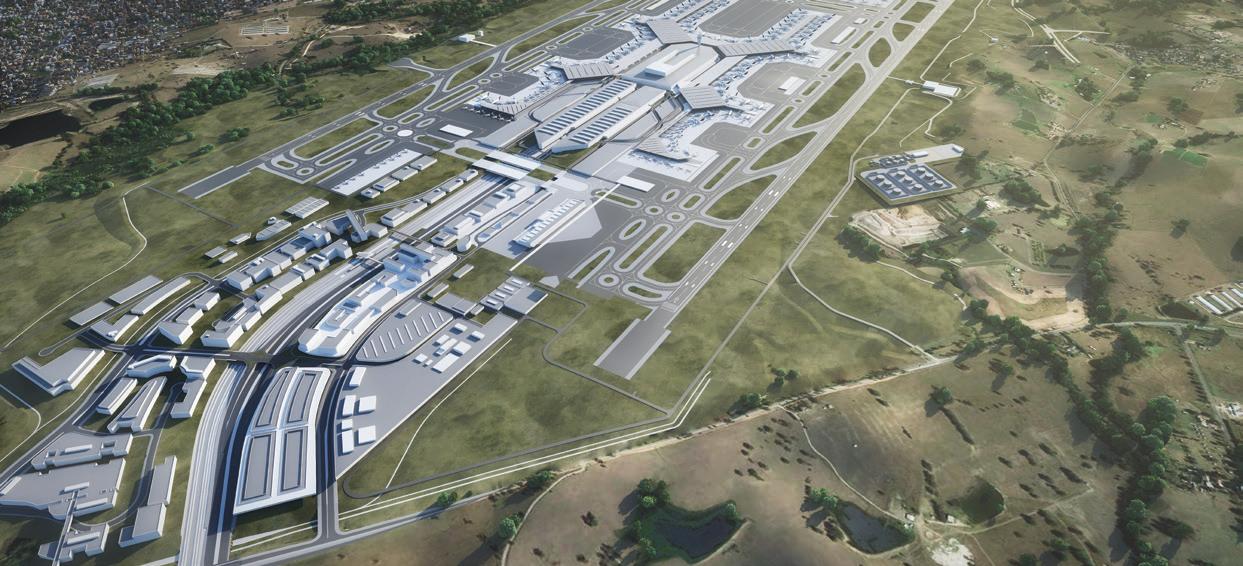
“We’re not just building an airport, we’re building an airport business, one that needs to generate a return for the taxpayer investment in the project.
“That’s why we’ve entered into MOUs with Qantas Group and Virgin Australia Group – not only are we starting early discussions about potential routes and services, we’re also drawing on their experience and insights to design the Airport.”
The Memoranda of Understanding will also see the organisations collaborate on technology, innovation and sustainability – another key focus for the Airport.
“We are building an airport for Western Sydney’s future, so we are focused on sustainability and minimising the impact of the Airport on the environment,” Mr Millett said.
visualisation of the Airport once it reaches 82 million passengers per year
thousands of jobs during construction and thousands more once it is operational, but the project has strict targets to ensure jobs go to locals.
“I’m thrilled to say that we’re currently exceeding all of our employment targets for local, diverse, Indigenous and learning workers,” Mr Millett said.

“There are strong rules around the sustainability standards we must meet as we design and build Western Sydney International, but we are looking for opportunities to go further in ensuring the Airport represents a commitment to future generations.”
An early proof point of the project’s sustainability focus is its partnership with one of Sydney’s other iconic projects, Sydney Metro.
More than 500,000 tonnes of high-quality sandstone is being transported to the Airport site from Metro tunnelling sites at Chatswood and Marrickville to be used as a highstrength foundation to support the construction of the runway, taxiways and roads on site.
“It’s about sustainability and efficiency, reusing resources and reducing carbon emissions,” Mr Millett said.
“It’s a great example of how we can make the most of Sydney’s infrastructure boom to not only save taxpayer funds but also cut down on waste.”
TRANSFORMING WESTERN SYDNEY
One of the key reasons behind building an airport in Western Sydney is bringing desperately needed jobs and opportunities to the region. Western Sydney International will create
“As of the end of the last financial year, local workers made up 54 per cent of the total workforce at Western Sydney Airport, which is almost double our construction phase target of 30 per cent.
“We have a target of 50 per cent local employment once the airport is fully operational.
“Every day, tens of thousands of Western Sydney workers need to leave the region for work, spending hours in their cars or on the train and this Airport will be a game-changer for those people.
“We want to be able to give people the opportunity to work closer to home and spend more time with their families rather than commuting.”
Mr Millett said $37 million from the Early Earthworks contract had already been invested locally.
From Narellan to Norwest, Blacktown to Bringelly, 24 businesses, including small family-run and Indigenous businesses, have been delivering the equipment and services needed to build the Airport, whether it’s concrete pumping, plumbing, fencing, demolition, or plant equipment supplies.
“We know the flow-on effects of this economic stimulus go much further when it comes to boosting the local economy and this will increase significantly once major earthworks begin in early 2020,” Mr Millett said.
Western Sydney International is at the centre of a trigovernment vision to create Sydney’s third city, the new Western Parkland City, comprising the local council areas of Blue Mountains, Hawkesbury, Liverpool, Fairfield, Wollondilly, Camden, Campbelltown and Penrith.
As part of the Western Sydney City Deal, signed in 2018 by the Federal, NSW and eight local governments, the new city has been estimated to create 200,000 new jobs across a wide
49 www.infrastructuremagazine.com.au November 2019 // Issue 13
AIRPORTS
Western Sydney International Experience Centre.
A
range of industries over the next 20 years, with thousands of those jobs based at Western Sydney International and its on-airport business park.
At almost 200-hectares, the Western Sydney International business park will be comparable to the size of the Parramatta CBD and home to a range of employers that will benefit from being on the doorstep of Sydney’s new airport, from airlines and hotels, to the technology and corporate sectors.
The prime airport real estate is currently being planned by Australian firm Architectus, with concept designs expected later this year.
Separate from the surrounding Aerotropolis, it will offer 5G connectivity, with open space, walking and cycling paths and quick, easy motorway access via the new toll-free M12 at the Airport’s front door.
Both the passenger terminal and the business park will each have their own metro stations with the Sydney Metro Greater West expected to be open in time for the Airport’s first flight in 2026.
As well as the new Metro line and the new M12 Motorway, the Federal and NSW governments have invested billions of dollars into upgrading roads around the Airport site and there will be rapid bus services connecting the Airport to Western Sydney centres.
“We’ve got a population of two million people here in Western Sydney and it’s fast growing. We’re acutely aware of the importance of making this city an even better place to live and do business by delivering the infrastructure and jobs people need,” Mr Millett said.
BUSINESS OPPORTUNITIES
One of the most important industries for creating jobs and business opportunities in the region will be air freight.
For producers across the region and beyond into regional NSW, many of which are small to medium and family-owned, Western Sydney International will be key to growing their businesses by unlocking lucrative Asian fresh-produce markets.
Western Sydney Airport recently entered into MOUs with 10 of Australia’s major freight companies, working with them to design concepts for an on-airport freight precinct and to begin discussions about potential operations from the new Airport.
“For freight companies, it’s an enticing proposition,” Mr Millett said. “We can offer landside and airside freight access on a greenfield site and 24/7 operations.
“Tell us what size facility you need, tell us what technology you want in it and how you want it designed to optimise your productivity.”
It seems the industry has responded strongly to Western Sydney Airport’s call, with freight companies signing up to work on concepts for the air freight hub including Australia Post (including StarTrack), DB Schenker, DHL Express, DSV Air and Sea, FedEx, Menzies Aviation, Swissport, Qantas Freight, Skyroad Logistics and Wymap.
Mr Millett said the freight precinct has the potential to become Sydney’s most important freight hub, generating thousands of jobs.
“The Airport’s unrestricted 24/7 operations will be the key to unlocking new export opportunities for businesses and producers across Western Sydney and NSW,” he said.
Australian airports currently transport more than one million tonnes of air freight annually and this is forecast to grow considerably over the next decade.
The first stage of the Airport has the potential to process around 220,000 tonnes of air freight each year through its proposed on-airport freight facility, with multiple dedicated freighter aircraft stands. This is set to scale up with demand, potentially handling 1.8 million tonnes of air freight each year in the future.
The Airport’s freight precinct is set to have dedicated road access at the southern end of the site, separating heavy vehicles from passenger traffic entering from the north.
Mr Millett said more MOUs with airlines and freight companies are on the way, along with market soundings for more contracts, including for construction of the Airport business park.
“It’s been a huge 12 months for Western Sydney Airport and the next year will be even bigger as construction ramps up,” Mr Millett said.
“As someone who grew up in Western Sydney, I’m proud to be delivering an Airport that is already creating so many opportunities for locals. Western Sydney International is on track to open to international, domestic and freight flights in 2026.”

50 AIRPORTS
Aerial shot of workers and equipment on the first anniversary since construction commenced
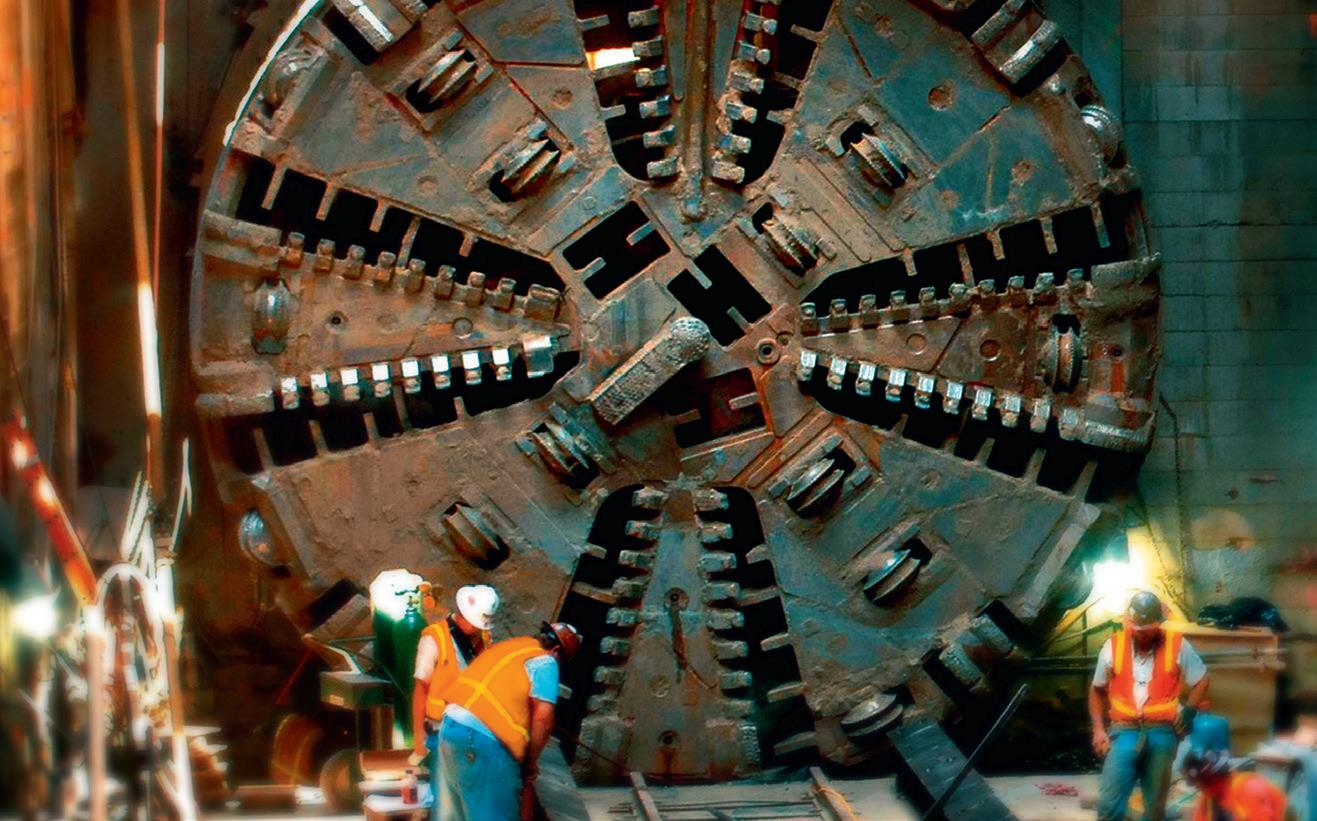
OUR POWER TEAM

SPRINGS!... NO SCREWING AROUND
WAGO’s high-current, rail-mount terminal blocks are available in four sizes for the connection range 6 to 185 mm². Smaller cross sections for supplying control cabinet lighting or other applications can be connected with power taps.
• Easy to use: Even conductors that are difficult to bend can be easily connected, since the locking tab keeps the clamp open for hands-free wiring
• Fast termination: No time-consuming preparation – no ring terminals or ferrules required
• Always reliable: Perfect clamping force – independent of operator skill
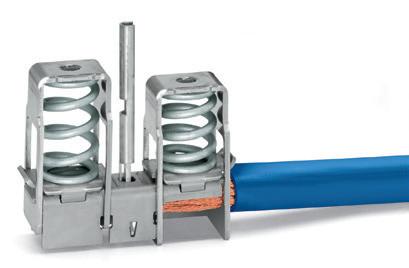

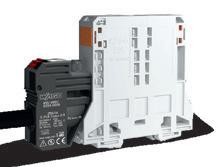

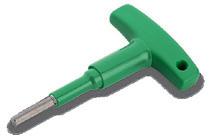
sales.anz@wago.com | (03) 8791 6300 | www.wago.com.au WAGO is a registered trademark of WAGO Verwaltungsgesellschaft mbH.
AVAILABLE UP TO 185 mm2 Accessories at a Glance 35 mm2 125 A 50 mm2 250 A 95 mm2 232 A 185 mm2 353 A Rail-Mount Terminal Blocks 285-135 285-134 285-137 285-150 285-154 285-157 285-195 285-194 285-197 285-1185 285-1184 285-1187 Adjacent Jumper 285-435 285-450 285-495 285-1171 Voltage Tap 285-427 285-447 285-407 285-1175 Voltage Tap with CT855-501/ 150-000 855-951/ 250-000 855-1851/ 350-000 Operating Tool 210-721 285-173 285-173 285-173 NEW
Adjacent Jumper
Voltage Tap
Operating Tool - Hex Wrench NEW NEW Vibration-Proof – Fast – Maintenance-Free
Voltage Tap with CT
CONSTRUCTING ZULU
By Jessica Dickers, Editor, Infrastructure
Melbourne Airport has begun construction on its new $300 million taxiway network, Taxiway Zulu – the largest airfield investment project since the airport’s opening. Here, we take a closer look at what the works will involve and how one of Australia’s busiest airports plans to complete the project without disruption to any flights.
Works on Melbourne Airport’s Taxiway Zulu Project began in July this year and will see the construction of more than 250,000 square metres of new taxiway pavement for the airport, creating hundreds of jobs over the next three and a half years.
Of the 250,000 square metres of pavement, some will be built in areas where there is currently only grass, while others will be used to replace existing pavement that has reached the end of its serviceable life.
Once completed, the taxiway will provide more space for aircraft traffic, allows for increased capacity, new routes and terminal facilities and overall efficiency. The finished network will have parallel taxiways in the north of the airfield, supporting wide-body aircraft movements in both the eastwest and north-south directions.
Taxiway Zulu forms part of a broader Northern Precinct Program, which aims to reconfigure the existing taxiways and apron layout to eliminate any roadblocks to airport growth. It is also designed to improve aircraft movements around Terminal 2 and prepare for a potential third runway.
Fulton Hogan was awarded the contract to deliver the Taxiway Zulu Program and Northern Access Route Project, DCWC is providing project management services for the taxiway expansion and Jacobs is providing design and technical monitoring services.
EXTENDING VICTOR AND RE-ALIGNING ECHO
Taxiway Zulu will run parallel to the airport’s existing east-west runway and the pavement will be predominantly rigid (concrete) heavy duty airfield pavement. In areas where workers have restricted access due to the airport’s operational requirements, traditional Portland Cement Concrete (PCC) is unable to be placed and cured, so ‘expedient’ flexible (asphalt) pavement will be used instead.
As part of the project the airport is also extending Taxiway Victor by approximately 1,000m, which runs parallel to the existing north-south runway. The existing Taxiway Echo is also being realigned over approximately 600-700m to run parallel with Taxiway Zulu.
In addition to the new pavement, the project will also involve the construction of the associated stormwater drainage network and airfield ground lighting to ensure the taxiways and surrounding infrastructure are appropriately illuminated to meet the standards set down by the Civil Aviation Safety Authority (CASA).
MELBOURNE AIRPORT’S AMBITIOUS GROWTH PLANS
The main aim of the new taxiways is to improve time performance for flights and allow more space for international aircraft, which will improve overall operational efficiencies. Zulu has been designed to provide the northern precinct of Melbourne Airport with independent, dual wide-body (such as the Airbus A380) capable taxiways.
52 November 2019 // Issue 13 www.infrastructuremagazine.com.au AIRPORTS

A Melbourne Airport spokesperson said that this layout will reduce delays by providing a dual north-south and eastwest taxiway network serving the northern precinct. This allows traffic management of the aircraft to avoid head-to-head conflict between aircraft taxiing towards the east-west Runway 09/27, or arriving at the precinct, and aircraft exiting for departure from Runway 16 (heading south) or Runway 34 (heading north).
“The project also facilitates operational efficiency by reducing the impact of aircraft pushing-back from the terminal stands onto active taxiways,” the spokesperson said.
“For example, there are currently ten stands that require aircraft to be pushed back (when departing) into Taxiway Tango, but this number will be significantly reduced post-development with aircraft then pushing back onto Taxiway Echo which is being re-aligned as part of the project.”
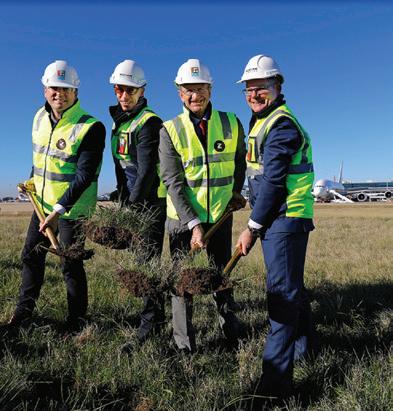
A CHALLENGING AIRFIELD DEVELOPMENT
With a project of this size, the biggest challenge is building the new pavement, with all associated lights and drainage, without impacting the operations of aircraft.
Melbourne Airport is a curfew-free airport that operates 24/7 so contractors have to work closely with the airport’s
operations team to be selective in closing certain elements of the airfield network. The goal is to enable construction whilst keeping all the scheduled aircraft moving to enable customers to travel safely without any obvious impact.
The Melbourne Airport spokesperson said its contractors and consultants had to find and recruit the right skilled people for this project whilst also competing for plant equipment and materials.
“As an example, we will be constructing our own concrete batching plant on the airfield to supplement local concrete supply so as to avoid delays. We’ll coordinate with operations and close elements of the airfield to ensure traffic flows and will also work at night when the impact is less,” the spokesperson said.
At a ceremony to mark the beginning of construction on the project, Melbourne Airport Chief of Aviation, David Hall, said, ‘Today is not just about breaking ground on a $300 million investment in our airfield; it is about transforming the travel experience for our passengers.
“When completed, these new taxiways will mean better on-time performance for flights, more space for international aircraft and access to new destinations – it’s all part of our vision to support Melbourne on its journey to become Australia’s biggest city.”
53 www.infrastructuremagazine.com.au November 2019 // Issue 13 AIRPORTS
Left to Right: David Hall and David Burns from Melbourne Airport along with Duncan Gibb and David Fisher from Fulton Hogan.
DELIVERING GREEN ASSET MANAGEMENT SOLUTIONS
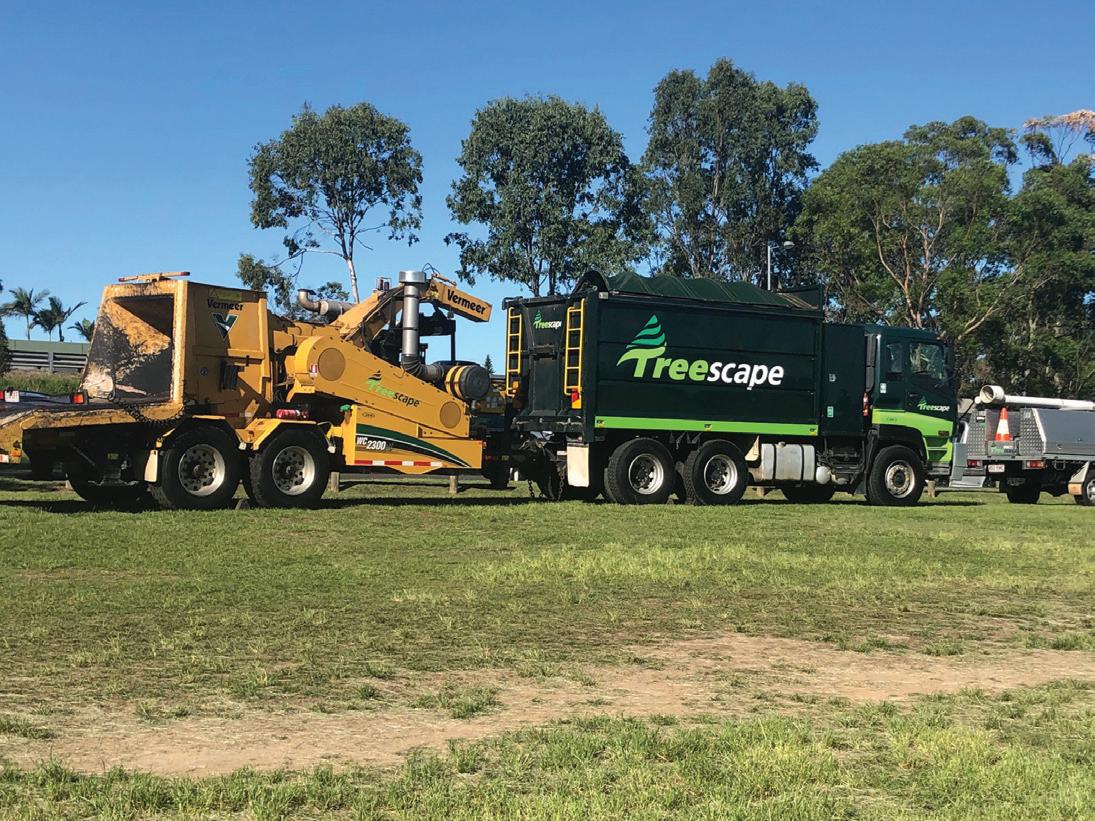
54 November 2019 // Issue 13 www.infrastructuremagazine.com.au LANDSCAPING AND VEGETATION MANAGEMENT // PARTNER SOLUTIONS
For vegetation management company Treescape Australasia, safety and reliability are among the key features it looks for when purchasing equipment. They need to know that their machines can cope with the huge diversity of the amazing landscapes they work in every day. Having come across a number of equipment suppliers in his career, Allan Kliese, southeast Queensland Business Manager at Treescape Australasia, has found that Vermeer’s range of wood chippers, stump cutters and whole tree chippers are among the best available, capable of working long hours in tough physical environments.
As certified arborists and environmental consultants, Treescape aims to lead the way in green asset management through the safe and efficient delivery of innovative, integrated and sustainable solutions.
Their services include the safe removal of trees, tree management, tree transplanting, stump removal, stump grinding and mulching across eastern Australia and New Zealand.
Treescape also specialises in large-scale commercial landscape planting projects and contracts, including parks, reserves and wetland planting.
To maintain plant health, their expert tree pruning, tree trimming and tree cutting crews have the equipment and expertise to safely carry out tree maintenance services with minimal disruption to the land or property owner.
Mr Kliese said that the company prides itself on being a leader in green asset management.
“We have contracts with leading utilities, councils and commercial clients. Treescape delivers a number of specialised services, including tree audits, removals, pruning, planting, plant health care and revegetation.”
Mr Kliese explained that having access to the right equipment is essential to achieving successful outcomes
THE RIGHT TOOLS FOR THE JOB
According to Mr Kliese, Treescape has partnered with Vermeer since 2006, with Vermeer equipment offering a number of project efficiency benefits over other alternatives considered.
He said that the company chose to fill its fleets with Vermeer wood chippers, stump cutters and whole tree chippers because the quality is second to none.
“With a huge range of chippers, stump grinders, vacuum excavators and skid steers that complement the service offering from Treescape, Vermeer was an easy choice,” Mr Kliese said.
“Vermeer’s equipment was purchased to work long hours in tough physical environments, ensuring more productivity for each dollar spent. Machines from other brands just don’t cut it when it comes to length of time in the field compared to Vermeer.”
Mr Kliese said that throughout the sales and after-sales process the experience with Vermeer has been very positive, and the relationship directly contributes to the success of the business.
“Vermeer always delivered when it was time to renew machinery or purchase new equipment as a result of a successful tender,” Mr Kliese said.

LANDSCAPING AND VEGETATION MANAGEMENT // PARTNER SOLUTIONS
NEW HERBICIDE SPECIFICALLY FOR INFRASTRUCTURE VEGETATION MANAGEMENT
A new herbicide from Bayer has been developed for the vegetation management industry. Esplanade ® Herbicide is ideal for use around railway, roadsides, industrial areas, rights-of-way and natural area regeneration.
Esplanade Herbicide is advancing weed control and is unlike anything else on the market: a pre-emergent herbicide that features a new mode of action, providing effective, long-lasting control. Some of the benefits include:
♦ Convenient and easy-to-use packaging
♦ Odourless and non-staining to surfaces
♦ Up to 60 times less active ingredients on the ground compared to some competitive products, delivering a more environmentally sustainable solution for you and your customers
♦ Applied at low use rate of 150mL/ha and formulated as a 500g/L suspension concentrate (SC)
♦ Less post-emergent herbicide applications results in reduced labour and fuel costs
♦ Long-term residual control even under the most difficult conditions on more than 30 weed species registered on the label
Apply Esplanade uniformly using a calibrated sprayer prior to weed seed germination, as uniform application is essential for satisfactory weed control. It can also be applied using various types of equipment including boom sprayers and backpack applicators.
The active ingredient in Esplanade is Indaziflam (500g/L) and the new mode of action is a Group O, inhibition of cellulose synthesis. The product is a Suspension Concentrate (SC) formulation and will be available in November 2019 in a 1L pack (4 x 1L shipper).
For more information on Esplanade Herbicide, please visit www.es.bayer.com.au/vegetation-management or contact Bayer’s National Sales Manager (VM), Paul Crack, on 0438 991 907
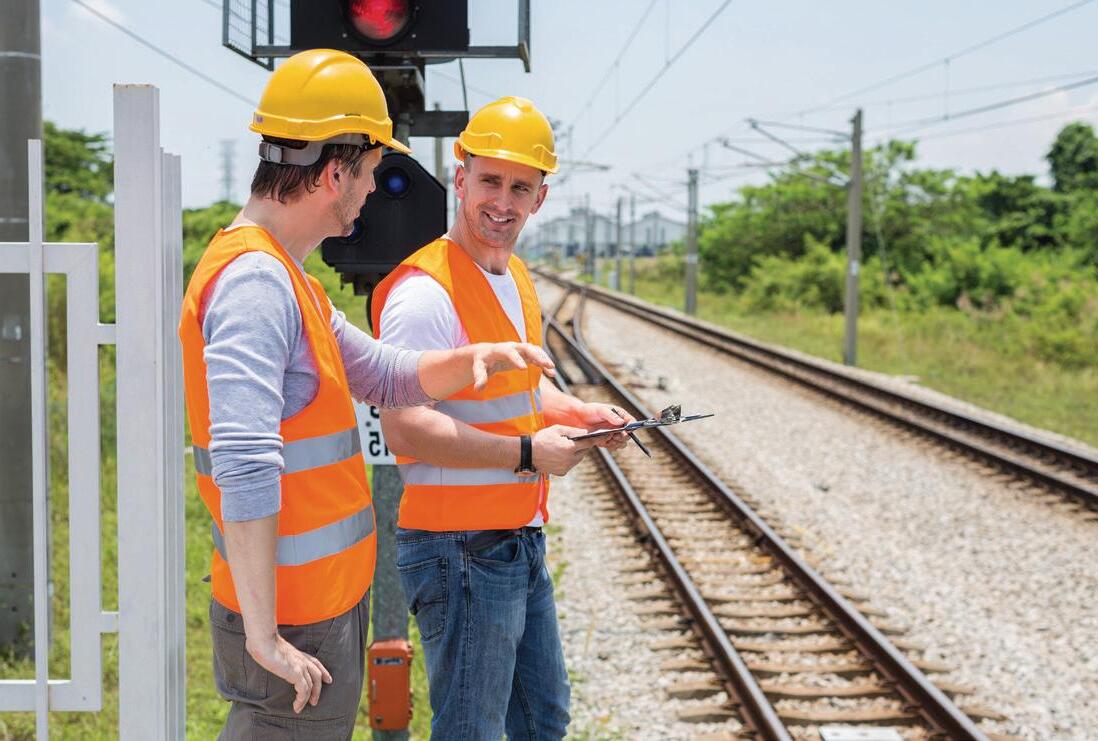
VEGETATION MANAGEMENT
Developed for the vegetation management industry, Esplanade Herbicide is ideal for use around railway, roadsides, industrial areas, rights-of-way and natural area regeneration. Esplanade Herbicide is unlike any other product on the market; a preemergent herbicide that features a new mode of action, providing effective, long-lasting control. Esplanade Herbicide is advancing weed control.
56 November 2019 // Issue 13 www.infrastructuremagazine.com.au LANDSCAPING AND VEGETATION MANAGEMENT // PARTNER SOLUTIONS
Bayer launches Esplanade
HOW TO BETTER MANAGE YOUR CRITICAL ASSETS
For its third year the Asset Management for Critical Infrastructure Conference brought together leaders from the infrastructure and utility sectors for two days of in-depth discussions on the biggest issues facing Australia’s asset managers.

Steve Doran, Director of Infrastream and former Sydney Chapter Chair at the Asset Management Council, was back on board as the event MC, facilitating the important discussions and ensuring delegates found that gold nugget of information from the presentations to take back and implement in their own organisations.
This year’s keynotes featured two powerhouse women playing key roles in the asset management community; Penny Burns, Chair, Talking Infrastructure Association, who helped shape the introduction of asset management in Australia; and Romilly Madew AO, the Chief Executive of Infrastructure Australia.

Penny delivered an insightful day one keynote presentation on the role of the Future Asset Management Strategist and really set the scene for what asset managers need to be doing now to tackle current and future challenges. While Romilly’s day two keynote explored comprehensive resilience strategies and Infrastructure Australia’s 2019 Australian Infrastructure Audit, a key document for anyone in the sector.
The conference was held the week after the Audit was released, so delegates were some of the first in the asset management community to hear about the insights the Audit provided. Even more beneficial, was an exclusive extended Q and A session with Romilly, which gave delegates a chance to ask questions directly.
SECURITY AND CRITICAL INFRASTRUCTURE 57 www.infrastructuremagazine.com.au November 2019 // Issue 13



In addition to the keynotes, the conference program looked at issues surrounding railway monitoring, road asset management, how to use data to improve decision making at water utilities, lessons learned from the ISO55001 certification journey of one of Australia’s biggest ports, what you’ll need for the future asset management workforce, and how to manage critical infrastructure cyber attack risk. This was all just day one with speakers including:
♦ Tammy Falconer, Head of Asset Knowledge, Sydney Water (position at the time of the event)
♦ Andrew O’Connor, Partner - Engineering and Asset Management, KPMG Australia
♦ Matthew Primmer, Planning & Asset Development Manager, Asset Management, Port of Melbourne
♦ Ravi Ravitharan, Director, Institute of Railway Technology
♦ Dr Tim Martin, Chief Technology Leader, Infrastructure Management, Australian Road Research Board (ARRB)
♦ Tommy Viljoen, Leading Partner, Cyber Security Strategy and Governance at Deloitte Australia
Day two took the ideas explored on the first day and looked further into specific asset management disciplines, with four streams; Asset management in the rail sector & digital asset technologies; Implementation of ISO 55000; Managing renewable and energy assets; and A closer look at inspection and condition monitoring.
These streams were run as informal panel sessions, giving delegates plenty of opportunities to join in the conversation and ask the panellists their pressing questions. Speakers for the streams included:
♦ Brian Green, General Manager Asset Management, The Australian Rail Track Corporation (ARTC)
♦ Katherine Larkings, Team Leader Asset Strategy and Investment, Icon Water
♦ Matt Henson, Asset Management Systems Manager, Jemena
♦ Collette Burke, Chief Engineer of Victoria, Director at VicTrack Melbourne and Managing Director at Exner Group
♦ Rohan Fernandez, Manager, Strategic Asset Management, ElectraNet
♦ Thomas Kerr, President, Rail Track Association Australia (RTAA)
♦ Sarah Hannah, Head of Asset Systems (Interim), Group Operation, AGL
♦ Tom Carpenter, CEO, Institute of Quality Asset Management
♦ Daniel Andersen, Manager Network Strategy, Powerlink Queensland
♦ Glen Cancian, Manager – Asset Management Strategy, DM Roads
Delegates had the chance to network with others in their field, but also to meet new people across different industries, from water and power, to road, rail, ports, government and consultancies. While the specifics of each sector may be different, from discussions it was clear that everyone was facing similar asset management challenges, and the way that one sector is currently dealing with something is incredibly useful insight for others. This is one of the key benefits of Asset Management for Critical Infrastructure.
58 November 2019 // Issue 13 www.infrastructuremagazine.com.au SECURITY AND CRITICAL INFRASTRUCTURE
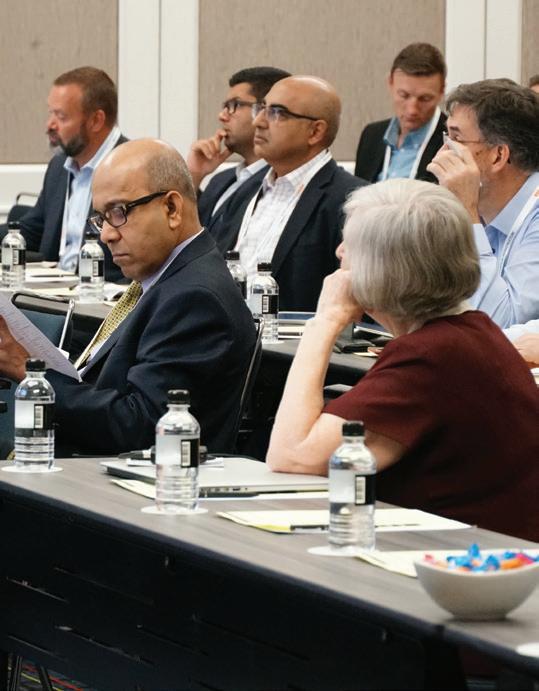



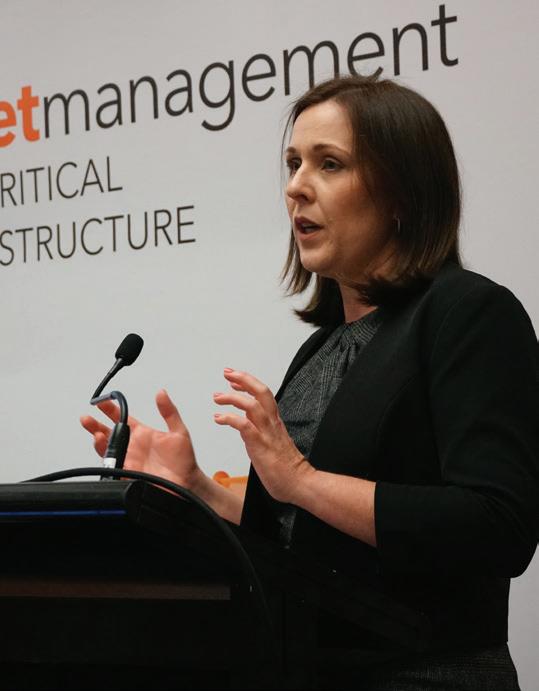
59 www.infrastructuremagazine.com.au November 2019 // Issue 13 SECURITY AND CRITICAL INFRASTRUCTURE
Critical
year's conference
assetmanagementevent.com.au.
There are huge changes in store for the 2020 Asset Management for
Infrastructure Conference and while we can’t say what they are just yet, this will be one to keep an eye on in the coming months. Register for updates for next
at
PROTECTING CRITICAL INFRASTRUCTURE AGAINST CYBER RISK
Technological advancements have revolutionised the utility and infrastructure sectors and brought opportunities and efficiencies on a never-before-seen scale. However, Tommy Viljoen, Leading Partner, Cyber Security and Governance at Deloitte Australia, who has spent the past decade focusing on avoiding and remediating cyber attacks, warns that these developments go hand-in-hand with cyber attacks – one of the greatest risks facing critical infrastructure today.
Tommy was one of the speakers at the 2019 Asset Management for Critical Infrastructure Conference, where he shared with delegates how cyber attacks can impact businesses and what companies can do to protect themselves.
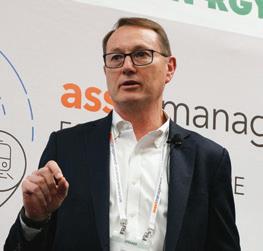
Generally speaking, the motivation behind cyber attacks is malicious as they are designed to cause wide-spread damage to organisations and their systems. Specifically, they can be described as inappropriate or inadvertent access to or disclosure of information; manipulation of information; destruction of information or equipment; and prevention of online access to information or equipment.
PREPARING FOR THE WORST
Mr Viljoen says it is crucial that organisations bridge the gap between technology and their core business and that companies that ignore the risks of cyber attacks do so at their peril.
have recovery bills and regulatory fines that run into the hundreds of millions.

“I regularly come across three main misconceptions,” Mr Viljoen said.
“Firstly, companies think that cyber attacks won’t happen to them. But we are seeing so many successful attacks or inadvertent errors, that companies need to plan for ‘when’ they are the target of cyber attacks, not ‘if’.
“Secondly, often companies treat cyber attacks as a ‘low-risk’ threat, with minor consequences. But they can be extremely costly for a company’s reputation, and health and safety record. Cyber attacks can also present significant financial implications; I can think of many organisations that
“Lastly, organisations wrongly think they have adequately covered their corporate network, but don’t recognise that everything that is connected to the network – corporate, operational and recreational equipment as well as home computers and devices – all create a digital footprint that can be subject to
BUILDING RESILIENCE
Mr Viljoen said it’s not ‘one size fits all’ when it comes to protection against cyber attacks. He has worked with financial services, government and companies that deliver infrastructure and services to develop, acquire and consume cyber capabilities commensurate with the nature of their business and cyber threats and risks facing them.
However, Mr Viljoen said there were common principles for organisations in the utility and infrastructure sectors to consider to help plan their cyber security.
“It’s crucial that organisations operating in the critical infrastructure sector identify what they care about most, and then ensure it is protected from an attack or inadvertent cyber activity,” Mr Viljoen said.
“There must be clear line of sight of what is happening with the critical assets when it comes to cyber and there must be plans in place for how to respond if an attack or error occurs.
“When it comes down to it, the more you care about the assets, the more mature your levels of protection, monitoring and response needs to be.”
60 November 2019 // Issue 13 www.infrastructuremagazine.com.au SECURITY AND CRITICAL INFRASTRUCTURE
Tommy’s presentation at the 2019 Asset Management for Critical Infrastructure Conference

ARE COST OVERRUNS AND SCHEDULE DELAYS KEEPING YOU UP AT NIGHT?
REST EASY WITH ECOSYS™ ENTERPRISE PROJECT PERFORMANCE SOFTWARE
By integrating portfolio, project and contract management into a single enterprise solution, EcoSys quickly delivers actionable insights. The result? Better project performance.
Whether you’re an executive tasked with digitally transforming your entire business or a manager wrestling with increasing project complexity, EcoSys will give you the efficiency, predictability and control you’ve been dreaming about.

EcoSys is the ideal platform to amplify your:
• Capital Efficiency
• Project Portfolio Management
• Resource Planning & Management
• Project Controls
• Earned Value Management
• Construction Management
• Cost Management
• Turnaround Management
To find out how EcoSys can maximize returns and margins across your projects ecosystem, visit EcoSys.net or call +61 3 9856 1943.
© 2019 Hexagon AB and/or its subsidiaries and affiliates. All rights reserved.

THE MISSING PIECE IN THE I oT PUZZLE
By Kim Ho, Assistant Editor, Infrastructure Magazine
The uptake of Internet of Things (IoT) technology is seeing seismic shifts across every sector, but according to Frank Zeichner, CEO of the Internet of Things Alliance Australia (IoTAA), the infrastructure sector is lagging behind other industries. Here, Mr Zeichner discusses the barriers to IoT uptake and offers a new approach to its integration.
There’s no question about the transformative potential of IoT technology. Industries across Australia are moving towards digitisation, harnessing data to yield greater insights, value and efficiency. Guiding this shift is IoTAA, Australia’s peak IoT authority. Now in its fourth year, IoTAA’s purpose is to accelerate the adoption of IoT through the Australian economy and society.
As IoTAA’s CEO, Mr Zeichner has a deep passion for IoT transforming industry and improving Australia’s competitiveness. While investment in infrastructure and the construction industry is high and should remain high, Mr Zeichner said the sector is relatively immature in its adoption of IoT. Massive opportunities for better design, more efficient use of assets, better resource sustainability and customer and community interaction and participation are in the offing. Take, for example, the simple task of measuring the air quality beside a trans-urban freeway. While it is likely that the contractors or asset managers overseeing a freeway are
measuring air quality outside its smokestacks, it is far less clear who they would share that information with – or if they are sharing that information at all.
In the absence of that data, Mr Zeichner said he has seen city councils install their own air quality sensors next to smokestacks on freeways, so knowledge about the freeway was lost unnecessarily and costs increased.
“The collecting data part of IoT is the starting point, actually sharing that information with people who need to know internally and externally, so that they can do appropriate planning, integration and responding, is where the real value comes,” Mr Zeichner said.
“That data, with the proper protections for individuals and companies, needs to be made available – and under conditions that we understand and agree to.”
Another example offered by Bill Ruh, Chief Digital Officer of Lendlease, at IoTAA’s recent IoT Impact conference, highlighted the proliferation of IoT, in many of the one million or so Lendlease buildings worldwide, that is highly siloed and
62 November 2019 // Issue 13 www.infrastructuremagazine.com.au IoT & CLOUD COMMUNICATION

non-interchangeable – such as for HVAC, lifts, security, energy use, water use, room occupancy etc.
These examples illustrate a gap in the end-to-end system, a missed opportunity that, for Mr Zeichner, demonstrates that the industry is lagging behind – something the finance industry learned and implemented a long time ago. He said in terms of IoT uptake and maturity, we haven’t yet developed the collaborative model and trust needed for the construction and infrastructure industry to fully exploit IoT.
Despite innovations in development that are pulling together disparate IoT data sources, Mr Zeichner believes Australia’s current lack of IoT standards is slowing adoption. For example, building management systems (BMS), which present a static digital representation of a building and real-time operational data about it, currently have little to no standardisation.
For him, Australian construction has yet to connect IoT real-time usage data with static data to form a lifecycle utilisation and cost model of buildings and infrastructure. This combination of data sources provides the basis of the ‘Digital Twin’ which promises capabilities such as automated building design incorporating usage to dramatically reduce build cost overruns. Doing this will enable asset managers and urban planners, for example, to answer questions such as: How is it being utilised? Where are people? When do they go in and why? When do they go out?
SMART SENSING TO EXCEED EFFICIENCY TARGETS
However, Mr Zeichner believes there are many reasons to be optimistic. Several exciting infrastructure projects are breaking new ground for the sector, such as the Victorian Government’s $18 million Level Crossing Removal Project (LXRP).
“GHD Digital is one of the key professional services consulting firms [on the LXRP], and they’ve implemented a whole IoT tracking and monitoring system, integrated with IoT set up by project management,” Mr Zeichner explained.
The project involves work on 78 crossings almost simultaneously and the sites must share tools, machinery, equipment and people between them.

By tracking all the equipment, project managers are able to have complete visibility over their fleet so they can schedule which site can use what equipment at any given time. Moreover, project managers are able to track the U beams being delivered to replace the crossings.
“They’re trying to get to eight delivered per day, from an industry average of six. They’re doing that by tracking where they are, tracking the vehicles that are moving them, and adjusting the traffic lights as they go – and they’re meeting their targets,” Mr Zeichner said.
“So as you can imagine, there’s a massive improvement in the logistics and the supply chain of building a really complex set of parallel construction projects – with way better visibility and control.”
BREAKING NEW GROUND ON DIGITAL INTEGRATION
Mr Zeichner also noted a growing trend of construction equipment with sensors already inbuilt, as opposed to being added later.
For him, the New South Wales Government’s IoT Policy Framework, https://www.digital.nsw.gov.au/policy/internetthings-iot, developed with IoTAA and other industry input, represents an important development that will work to drive inbuilt sensing and data sharing in projects across the state.
“That IoT Policy Framework will inform procurement in every aspect of a build for infrastructure, because it will demand that infrastructure components, elements and companies 1) build in sensing of their utilisation over the lifecycle; and 2) that they share that data outside their domain, under conditions of course, so that others can use it, which is the key,” Mr Zeichner said.

“This undertaking is feasible because not all sites are ready simultaneously, but it requires significant coordination, which IoT is enabling.”
This framework is set to be a key input into the Western Sydney Parklands City Deal and the Western Sydney Aerotropolis being undertaken in tandem with the construction of the Western Sydney Airport.
CHANGING OUR PERCEPTION OF IOT
Mr Zeichner believes the Western Sydney Parklands Project exemplifies a simple but crucial shift in how we think about IoT – a shift which has the potential to accelerate the opportunities that IoT can bring for Australian construction.
“In my mind, I don’t like calling projects IoT projects, they’re projects that happen to have IoT in them. IoT’s an enabler
63 www.infrastructuremagazine.com.au November 2019 // Issue 13 I oT & CLOUD COMMUNICATION
Frank Zeichner, CEO of the Internet of Things Alliance Australia (IoTAA)
– it’s not about the IoT, it’s about the data that affects and improves asset utilisation, efficiency, how people interact and use services and provides information and warning about breakages and so on,” he said.
“It’s not to say that IoT technologies aren’t integrated in roads and other infrastructure today. The issue is, IoT isn’t just the sensing, it isn’t just the network, or the cloud, or the AI, or visualisation, or the robotics part of it. It’s about the entire end-to-end chain.”
Mr Zeichner said when we approach IoT more holistically, imagining ways in which it may be integrated in a project from the start and provide ongoing information throughout the asset’s lifecycle, IoT technology can unlock extraordinary economic benefits.
“The incremental cost of building in sensing and collecting and sharing of data on a $100-300 million construction is less than a per cent,” Mr Zeichner said.
He said factoring in the savings IoT can have on the lifecycle cost of managing it over around 30 years, and by knowing how each element of the asset is actually used, “the return on investment can be amazing”.
LEVERAGING IOT TO INCREASE QUALITY, VALUE AND PROFITS
IoT also offers economic opportunities for supply chain logistics by assisting with quality assurance and provenance.
Having a ‘data footprint’ for products, such as food, during transportation will help companies ensure a product’s quality right through a supply chain, therefore attaching higher value to it – for example in verifying adherence to proper ‘cold chain’ processes.
The challenge for IoT integration in supply chains, however, is maintaining data authenticity – that is, ensuring the data being passed on is both accurate and from a verifiably trusted source.
“There are often many partners in the chain, so there are often relationships that weren’t there before. There are people you’re sharing data with you’d never share data with before. You have to come up with interfaces between them, as well as new authentication processes,” Mr Zeichner said.
“There’s a deal of integration and trust networks to build. It’s happening in certain cases, it’s just not scaled yet so we’ve got a way to go.”

INCREASING SECURITY IN TANDEM WITH IOT INTEGRATION
IoT security and data privacy are growing concerns in the industry, posing major challenges to safe IoT uptake in Australia. The more people with whom a company shares its data, the more opportunities for a cyber security or data breach to occur.
“In business, if you just give away your data, you could give away half your value,” Mr Zeichner warned.
64 IoT & CLOUD COMMUNICATION
“You need security where you’re storing the data, you need security when you’re exchanging data – security happens many, many times in the chain.”
Security is one area in which IoTAA is assisting the industry. The Alliance is campaigning for the introduction of a marketbased IoT security ‘tick mark’. This mark would provide clarity and assurance to customers, indicating that products and assets are accredited and that their IoT security claims are valid. Today, it’s difficult for buyers to know who is secure and who is not.
For Mr Zeichner, the solution again lies in the early integration of IoT into every stage of the construction process and anticipating issues in advance.
A SHARED FRAMEWORK TO HELP ROLL OUT IOT TOGETHER
IoT uptake is also set to accelerate through the recent establishment of a ‘shared framework’ with which to position technology and partners.
“Different market sectors are at different levels of maturity in adopting IoT, and they’re coming from different places,” Mr Zeichner explained.
“Yet IoT, like the internet, like IP, is a common thing across everything.”
In response, IoTAA developed an IoT Reference Framework as a way of positioning technologies and functions in a way
that “disentangles all the different components” to provide some standardisation in how different sectors speak about IoT.
Since its launch, the framework has been adopted by overseas organisations. Locally, the Water Services Association of Australia, made up of 53 water utilities, is starting to use it to create an IoT technology roadmap.
The framework is also an essential component to IoTAA’s security workstream, to help unravel the increasing amount and network of security required for IoT.
A STARTING POINT, NOT AN AFTERTHOUGHT
Ultimately, Mr Zeichner believes accelerated IoT uptake in Australia requires asset owners and operators to move from a reactive to a proactive approach to the technology. Successful IoT stems from asking one vital question: What data would you need to better run and value your business?
“If you can answer that question, then you know how to improve it and increase your value,” Mr Zeichner said.

“If you don’t know the answer to that question, you risk someone else working it out. At the very least, you’re running things inefficiently.”
By approaching IoT as a starting point rather than a consideration later down the track, the infrastructure and construction sector can position itself to reap the vast benefits of digitisation in the future.
65 I oT & CLOUD COMMUNICATION

ENVIRONMENTAL MONITORING NETWORK
MAKING LATROBE VALLEY SAFER
66 IoT & CLOUD COMMUNICATION
Since going online in May this year, the Latrobe Valley Information Network (LVIN) in Victoria has become a world-leading environmental monitoring system. Synthesising huge amounts of data in real time, 24-hours a day, the network uses IoT to anticipate disasters and facilitate informed leadership, to help make the region safer.
LVIN is an integrated network of sensors placed at specific locations around the Latrobe Valley, synthesised into an online portal to provide live environmental monitoring for the whole community.
By combining bushfire ignition detection, flood warnings, storm asthma tracking, air quality concentrations and 24-hour climate monitoring, the comprehensive network provides 24-hour, real-time information to protect and monitor industry resources from plantations through to coal mines and power stations in the region.
Monitoring of plantations is also designed to protect and future-proof local industry, reducing the impact that events like Black Saturday have had on available timber supplies. Further targeted sites allow for a dam safety wall and landfill monitoring.
STRATEGICALLY PLACED SENSORS FOR OPTIMAL COVERAGE
Developed and supported by Australian company Attentis, the patented technology has been implemented as part of the Federal Government’s Smart Cities and Suburbs Program, with installation and ongoing support from the Latrobe City Council.
Strategically placed in plantations, rivers, landfills, reservoirs and high-risk locations, the sensors in the LVIN provide situational awareness that can guide planning, decision-making and, if required, disaster response.
Sensor location was selected in consultation with the Latrobe City Council’s Municipal Emergency Management Planning Committee (MEMPC), incorporating representation from Vic Roads, State Emergency Service, Country Fire Authority, Gippsland Water, Water Catchment Management Authority and local community groups.
and air composition, with access to real-time information and notifications from local agencies and emergency services.
Visitors will be able to view live on-site conditions prior to visiting Latrobe City and the various community attractions.
Farmers throughout the region can access active rainfall, soil moisture and a range of analytical tools and automation options to reduce water consumption and drive productivity.

The committee used proven agency risk management approaches to identify 44 at-risk locations for sensor installations. Together, these locations form a complete, integrated, community-accessible network.
A DIVERSE RANGE OF APPLICATIONS
It is envisaged that this real-time information network will become the catalyst for inter-agency cooperation, a key recommendation of both the Black Saturday Royal Commission and the Hazelwood Mine Fire enquiry – both significant events that affected the Latrobe Valley community.
Latrobe City’s MEMPC formed a work group to guide and discuss the project direction. During this process, the work group also identified high at-risk locations, produced a Memoranda of Understanding with landowners and a Job Safety Analysis, and identified sub-contractors and project timings.
Through the LVIN, 75,000 residents of the Latrobe Valley currently have free access to monitor live weather, rainfall
Allergy sufferers can view live movements of air concentration levels to move indoors to avoid possible impacts from airborne pollens and contaminants, including smoke from prescribed burns and this year’s fires in the Yinnar area.
Additional benefits of the network include the development of safety and tourist applications, and the ability to monitor infrastructure, such as electricity transmission lines.
A NETWORK TO BENEFIT THE WHOLE COMMUNITY
The Federal Government and Attentis invested $1.7 million to construct the network with support from several agencies through the MEMP committee.
“Access to real-time information on this scale will assist to build community resilience and confidence, and lead to an informed understanding during events that impact lives throughout the region,” a CFA Operations Officer said.
“Since network construction, considerable agency interest has been demonstrated, with several agencies accessing the
“This is a world-first Australian technology that will provide significant benefits to the region, expanding this network will bring greater benefits to all communities and agencies.
“This is the largest environmental monitoring network ever constructed, introducing an Australian technology that will provide significant benefits to the region. Expanding this network will bring greater benefits to all communities and agencies increases the level and breadth of real-time information available.
“This is a game-changer technology and could be the catalyst for information sharing we have all been seeking.”
Latrobe City’s Coordinator Emergency Management, Lance King, said that LVIN was “providing real community resilience building, giving residents of Latrobe City the platform and tools to make real-time informed decisions when dealing with impending emergency impacts”.
Since going live, the network is being used daily by a complete range of emergency services as well as local agencies and organisations. LVIN was also awarded Best Government Project and Best Overall Project at the 2019 Australian IoT Awards, and Latrobe City Council won the Smart City of the Year - Regional Award at the 2019 Smart Cities Awards.
67 www.infrastructuremagazine.com.au November 2019 // Issue 13 I oT & CLOUD COMMUNICATION
SYDNEY HARBOUR BRIDGE’S LASER CLEANING TECHNOLOGY
by Professor Anna Paradowska, Industry Engagement Manager, Australian Centre for Neutron Scattering, ANSTO
There is probably no other structure in Australia that enjoys the same iconic status as the Sydney Harbour Bridge.
This steel feat of Australian engineering has stood over Sydney Harbour for nearly 90 years, enabling billions of car and train journeys, millions of postcode pictures, and one more ‘tall thing’ that people can climb.
But there is a side of the bridge most people won’t see; experts in engineering will know that cleaning the bridge is a daily operation, and the reason why ‘The Coathanger’ is still safe to travel on after almost a century of use.
THE NUMBER ONE ENEMY OF STEEL STRUCTURES
Of course, we don’t mean cleaning with a mop and soapy water; the number one enemy of any steel structure is corrosion. It is crucial to the long-term structural integrity and conservation of a structure like the Sydney Harbour Bridge to remove the by-products formed on its surface from corrosion.
Current conservation work involves sandblasting dirt, rust and the existing lead-based paint, and applying lead-free paint to protect the structure. However, a team of Australian experts are working on a better way using, of all things, nuclear science.
The Australian Nuclear Science and Technology Organisation (ANSTO) is part of a team of experts tasked to improve methods of cleaning the bridge, led by the Australian National University and including the NSW Roads and Maritime Services, the University of Sydney and the University of Canberra.
The team is led by Professor Andrei Rode and Associate Professor Steven Madden and represents an exciting opportunity for Australia to make its mark in infrastructure expertise internationally. With funding from the Australian Research Council, the project will run for three years in the hope of getting ahead of the war on corrosion.
The task is to develop a method of cleaning inaccessible areas of the bridge such as, for example, more than 7.2 kilometres of tunnels too small for a person to clean. Naturally, those hardto-reach areas are susceptible to rust and dirt build-up, which left untreated can quickly cause bigger and more expensive problems.
Sandblasting, a technique which works exactly how it sounds, uses abrasive materials to remove paint and corrosion. It is the crucial first step to properly restore and conserve any steel structure and for a massive structure like the Sydney Harbour
Bridge, it is a very practical challenge to clean the entire thing – all 134 metres tall and 1,149 metres wide – every nook and every cranny.
What is now being proposed is the use of new industrial, ultrafast laser technology to develop laser removal processes and reconditioning methods to maintain the integrity and original view of the bridge. Although laser cleaning is used widely in conserving historic architecture, it will be the first time this type of laser has been used on an industrial scale problem. Over the next three years, researchers will work on applying lasers to remove layers of paint efficiently, without damaging the underlying structure.
It won’t just be a first for the Sydney Harbour Bridge, but a world-first that when proven, could contribute to making structures safer, reducing maintenance costs and improving our environmental impact by saving energy.

68 November 2019 // Issue 13 www.infrastructuremagazine.com.au CORROSION
A collaboration between the Australian Nuclear Science and Technology Organisation (ANSTO), Australian universities, and the NSW Government will see new laser technology used on the 90-year-old Sydney Harbour Bridge to deal with corrosion and material degradation.
WHAT’S SO GREAT ABOUT LASER TECHNOLOGY?
Firstly, new techniques using lasers could prevent a multitude of damages that steel is susceptible to, actually making it stronger by reducing residual stresses, micro-cracking and roughening that decreases performance and integrity.
Naturally, by creating a stronger and safer bridge, we also create savings on maintenance costs. This technology could potentially save millions of taxpayer dollars in a number of areas including efficiencies from the technology itself: laser techniques are better suited to cleaning in tight spaces than sandblasting, as it creates minimal dust which then also needs to be removed. It is also a gentler and environmentally friendly way of preserving the steel and granite stonework.
Not only would this new technology be more effective, it would also be more energy efficient: this new class of powerful lasers reduce heat load to a structure which reduces energy costs. It also removes thick layers of paint with efficiency at a large scale.
Because the task is to clean areas that are inaccessible to humans, robots have been used on the famous Coathanger for at least six years and the additional use of lasers will continue to make this work safe for humans, while delivering improved outcomes for the bridge.
The laser cleaning regime will involve robots performing inspections, on-ground cleaning painting and waste removal. With these improved cleaning techniques, those areas that are hard to reach can be cleaned more thoroughly and more frequently, improving overall safety.
ANSTO LENDS ITS NUCLEAR SCIENCE EXPERTISE
ANSTO is leading the investigation into the mechanical properties of lasertreated steel and granite, lending its expertise through the Australian Centre for Neutron Scattering (ACNS), and the Nuclear Materials Development and Characterisation (NMDC) group.
Experts at ANSTO will undertake stress assessments on materials using X-rays and neutron diffraction techniques. The ACNS is the leading facility in the Asia Oceania region, and is home to 15 rare neutron beam instruments that help determine the internal structure of materials and their properties better with nuclear science.
The instruments used by ANSTO will analyse mechanical properties of laser-treated steel and granite. This work will be critical to understanding fatigue resistance, roughness, microstructure, and distribution of stresses. If the project is successful, it could be used to maintain the entire bridge, including regular paint and rust removal from the exterior of the iconic steel arch.
Successful application of this technology could have much wider implications than the Sydney Harbour Bridge; wherever large-scale corrosion exists, this laser technology could reduce maintenance costs and improve overall safety for bridges across the globe.
In that sense, it is only fitting that this Australian project starts with its own iconic bridge at home before possibly applying this technology to the thousands of bridges faced with similar cleaning problems across the world.
It is exciting for ANSTO to lend its expertise to this significant research, as part of an all-Australian effort. We look forward to the results, which will contribute to the current body of scientific research that exists regarding laser applications to corrosion and hopefully shine a light on Australian innovation and expertise in this field.
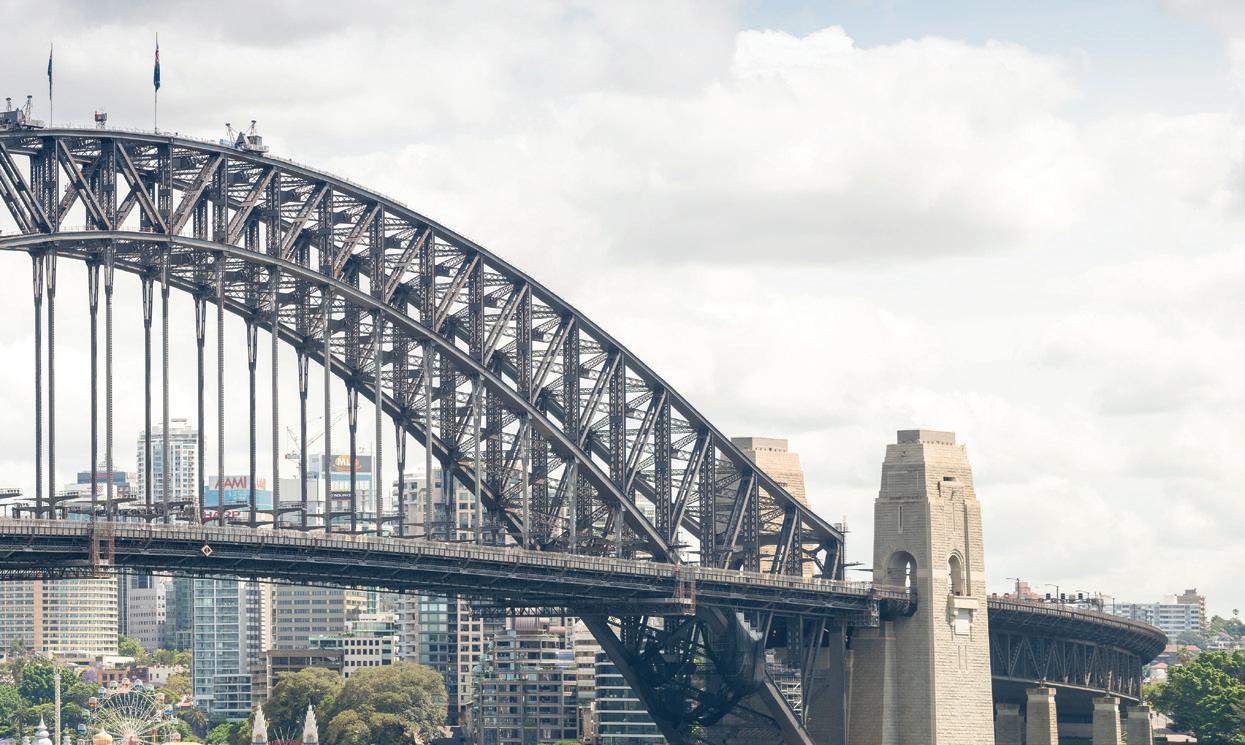
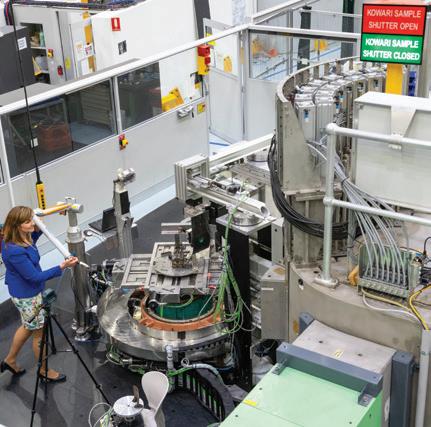
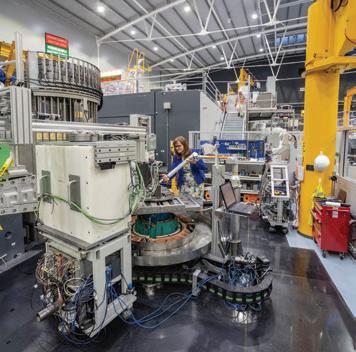
69 www.infrastructuremagazine.com.au November 2019 // Issue 13 CORROSION
Professor Anna Paradowska on the Kowari Instrument at ACNS preparing a sample for a stress scanning experiment.
STRAY TRACTION EFFECTS –
WHERE’S THE PROBLEM?

During baseline corrosion interference testing associated with a new light rail project in Sydney NSW, significant stray traction current effects from existing traction systems were measured on the Energy Authority’s sub-transmission assets in the Sydney CBD. This case study describes the actions taken to identify the corrosion risks and the events that led to resolving the electrolysis interference caused by defective rail safety devices located 20km away from the affected site.
The electrical current needed for DC traction systems is supplied by traction substations which are normally fed from the local electrical network. In overhead networks, current is supplied to the train or tram traction motors through an overhead catenary contact wire and in a catenary free arrangement, via a third rail or underground cables.
The running rails are commonly used as the primary current return path back to the source traction substation to complete the circuit. In scenarios where regenerative braking is used, the current will still return via the running rails, but conduct back to the source regenerative motor associated with the train that is undergoing regenerative braking.
The running rails are intended to be insulated from earth; however, since their associated insulation medium is not perfect and is in contact with the general mass of earth (rail pads, ballast, embedded insulation etc.) a parallel path
through the earth is formed with the running rails. Any current that leaks from the rails and conducts through any path, other than the dedicated return path, is known as stray traction current. Where stray traction current flows through a conductive structure such as pipelines, cable screens, building reinforcement etc. they are referred to as foreign structures. These structures are at risk of accelerated corrosion (see Figure 1).
Transport for NSW released a project to design and construct a new 12km-long light rail (LR) from Circular Quay along George Street to Central Station, with branches to Kensington and Kingsford.
Ausgrid is the energy utility that provides the electricity network for Sydney and had numerous assets that are located alongside and beneath the proposed route of the LR. These assets include underground cables ranging from low-voltage distributors to high-voltage sub-transmission feeders (Figure 2),
70 November 2019 // Issue 13 www.infrastructuremagazine.com.au CORROSION
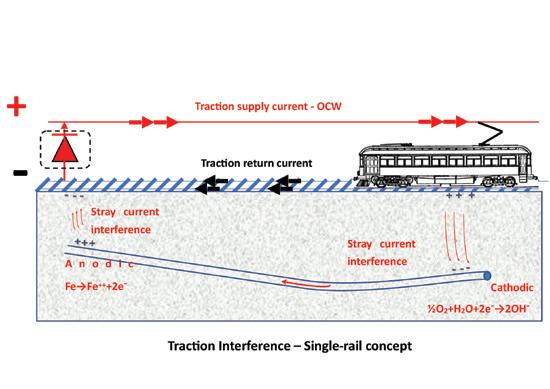
substations both above and below ground and associated buildings and ancillary equipment. Various other assets such as telecommunication networks and pipelines share the same environment with the electrical network. All of these assets are vulnerable to accelerated corrosion when exposed to stray current.
BASELINE CORROSION INTERFERENCE TESTING
Interference criteria
There are no formally recognised interference criteria for copper structures that are not protected by cathodic protection systems, so the following standards were used to derive criteria for assessment purposes only.
Derived interference criteria
BS EN 50162 (1). Acceptable maximum positive potential shift (including IR drop) is 300mV for copper bonded steel electrodes.
Various sites were targeted along the route of the LR, for baseline corrosion interference testing. Baseline testing provides a snapshot in time of any existing stray current effects detected on targeted assets. The sites were selected on the likelihood of being affected by stray current once the LR is commissioned, so that a comparison could be made before and after energisation to determine if any corrosion interference was introduced from the new LR.
One particular asset where elevated levels of existing stray traction current effects were measured, was an earthing link box associated with a 132kV sub-transmission feeder running under George St near Circular Quay (Figure 3). This link box forms part of the cable screen circuit. Structure voltage
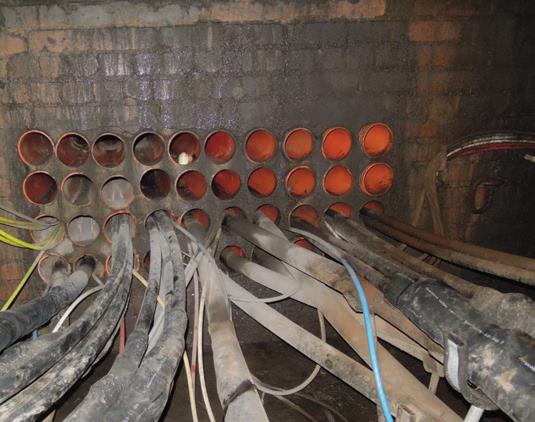
measurements were taken with reference to a copper/copper sulphate reference cell and it was determined that the link box earth has a quiescent potential of approximately -273mV. The stray traction current effects were causing voltage variations up to 290mV as shown in Figure 4.
These results warrant further investigation. The measured wave forms were typical of stray traction current effects, so Sydney Trains participated in the investigations to determine if the heavy rail was contributing to the issue.
CORROSION INTERFERENCE INVESTIGATION
Experience has shown that where stray current enters or exits a structure through the earth, larger earth potential rise (EPR) zones – caused by increased current density through the earth – are created that result in high structure potential variation, also referred to as electrolysis or stray current effects. So the first step in resolving this issue was to locate the maximum electrolysis effects along the 132kV feeder route.
The largest magnitude of interference was located on an earthing link box at Wollstonecraft shown in Figure 5, some 3.5km north-east of the George St site where the original problem was observed.
Recorded waveform traces indicate that the link box earth has a quiescent potential of approximately -290mV. Stray traction current effects are causing voltage variations up to 2,401mV comprising of 1,166mV anodic and 1,235mV cathodic events.
The maximum positive potential shift from the quiescent potential is +1166mV, which far exceeds the limit of +300mV as derived from BS EN 50162.
The calculated average anodic potential is -104mV, which results in an average anodic shift from the quiescent potential of +186mV.
When applying the derived criteria BS EN 50162, these assets are considered at risk of accelerated corrosion. In
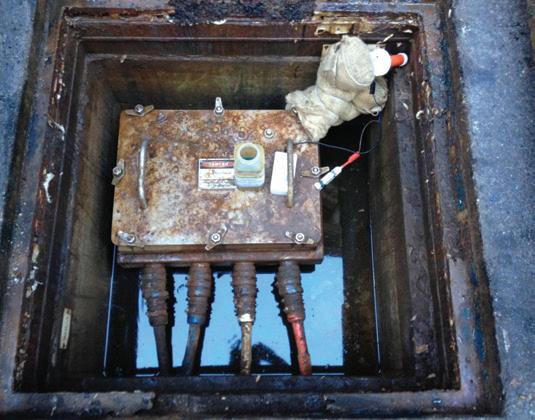
71 www.infrastructuremagazine.com.au November 2019 // Issue 13 CORROSION
Figure 2 – cable pit under George St., Sydney
Figure 3 – 132kV Feeder cable earth link box
Figure 1 – Stray traction current path
addition to Ausgrid’s concern for the elevated corrosion risk to critical assets, added pressure was applied from the LR project designers to find a timely resolution so there would be some interference head room available by the time the LR was to be commissioned.
Since the heavy rail network is located in the same vicinity as the link box, an investigation was conducted by Sydney Trains to locate and repair any rail insulation defects. Results from the extensive investigation by Sydney Trains, spanning from the North Sydney area through Sydney CBD to Central Station, failed to reveal any underlying issues.
Concurrently with the Sydney Trains
investigation, Ausgrid’s electrolysis team conducted DC current and loop resistance measurements at various substations connected to this particular 132kV feeder cable and a number of interconnected substations that supply the Sydney Trains Traction Substations. DC current was detected in all cable screens tested and in some cases recorded 6A variations in DC current flow.
These test results with visual inspections confirmed that Ausgrid’s sub-transmission earthing network is directly bonded to Sydney Trains Traction Substation earthing systems, which explains the likelihood of stray

Figure 6 – Interconnected earthing systems provide a low resistance metallic path for stray current
current flowing through the cable link boxes. This is a concern, since the traction substations are generally located within the rail corridor and exposed to a greater risk of stray current pickup and discharge, which can then be transferred through Ausgrid’s electrical network.
Sydney CBD earthing network utilises a common multiple earthed neutral system (CMEN) whereby the sub-transmission earthing network is common bonded to the high-voltage zone and distribution earthing systems via interconnected cable screens and overhead earth wires, which in turn are bonded to the local MEN system via interconnected LV neutrals.
In summary, the electrical network provides a conductive path throughout Sydney that reticulates into the rail corridor at numerous locations and is an attractive path for stray traction current. At this stage, we suspected that the source of the stray current may be much further afield than first thought, which added to the complexity of actually finding the problem and resolving it in time for the new LR energisation.
CORROSION RISK
The concern with stray current being conducted through foreign structures is the unidentified zones where the stray current discharges from the foreign structure to earth. These zones are where the earth resistance is low enough to allow current to exit the foreign structure and flow through the earth to the traction return circuit (Figure 6). Typically the corrosion risk is
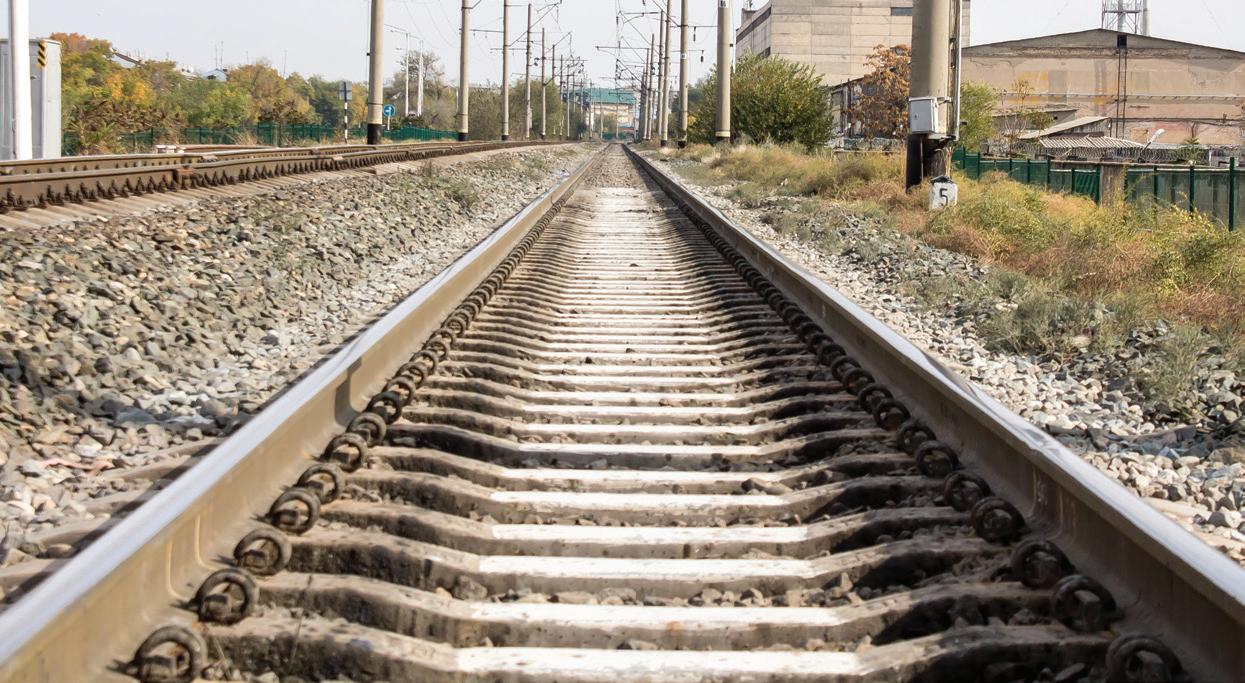
72 November 2019 // Issue 13 www.infrastructuremagazine.com.au CORROSION
greater at locations where foreign structures are electrically discontinuous and not necessarily close to the rail corridor.
THE BREAKTHROUGH
Some months later, we experienced a fortunate breakthrough. During routine interference testing of a cathodic protection system for Telstra cables located in Wahroonga, high magnitudes of stray traction effects were measured on numerous assets affecting Telstra, Ausgrid and Sydney Water.
The cause for the stray traction current was found to be seven defective safety devices (spark gaps) in the vicinity of Wahroonga Rail Station. The safety devices had failed by short circuiting that effectively provided a low resistance path from the rail to earth via the rail structure earthing system, which resulted in large magnitudes of stray current flowing through any conductive earth path.
If the local water pipes, telecommunication cable network and electrical earthing network – including traction substation earthing systems – can collectively provide a continuous metallic path from outer North Sydney to Sydney CBD and beyond, then it is possible for stray current to be transferred significant distances to return to the source traction substation. Armed with this notion, it was worthwhile assessing the electrolysis effects at Wahroonga once the spark gaps were rectified.
Recorded waveform traces indicate that the link box earth has a quiescent potential of approximately -355mV, the stray traction current effects are causing voltage variations up to 599mV comprising of 316mV anodic and 283mV cathodic events, as shown in Figure 7.
When comparing these results with the structure potentials prior to replacing the safety devices, the stray traction current effects at Wollstonecraft have greatly improved. Although these levels indicate further issues to be resolved, it addresses the immediate threat to both Ausgrid assets and progression of the LR project. It is expected that similar reduction of electrolysis effects will be achieved on assets in Sydney CBD, which will be confirmed at a later date.
This result proves that stray current effects can be detected many kilometres from the defect site and is not restricted to within the rail corridor; it simply comes down to Ohm’s Law that determines the paths of lower resistance that the stray current will take to complete the circuit.

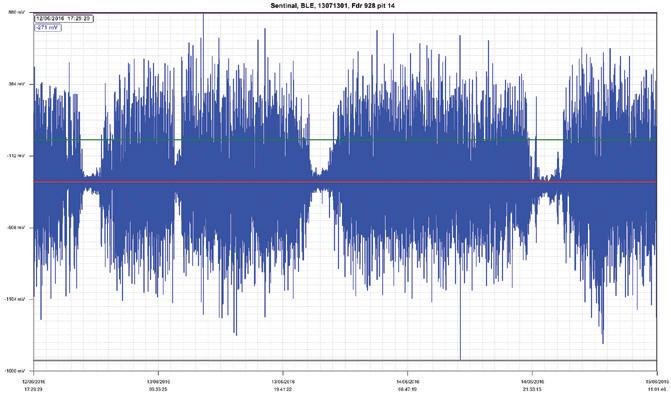
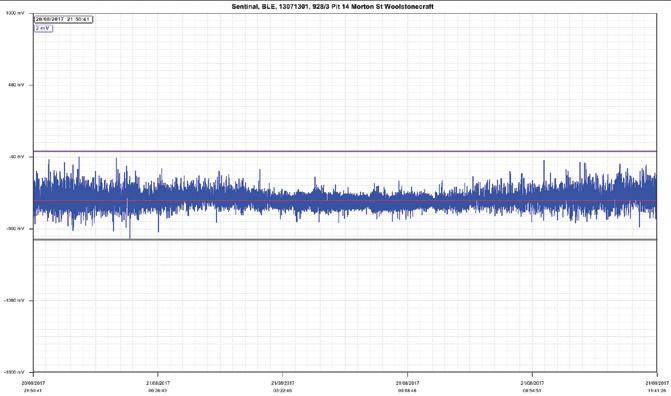
73 www.infrastructuremagazine.com.au November 2019 // Issue 13 CORROSION Reference BS EN 50162:2004 ‘Protection against corrosion by stray current from direct current sources’. British Standards Institution.
Figure 4 – George St link box earth potential during rail fault conditions – Ref to Cu/CuSO4
Figure 5 – Wollstonecraft link box earth potential during rail fault conditions –Ref to Cu/CuSO4.
Figure 7 – Wollstonecraft link box earth potential after spark gap replacement –Ref to Cu/CuSO4

ARE YOU READY FOR THE SUMMER DISASTER SEASON?
The 2019–20 disaster season is already upon us, with bushfires and other extreme weather events impacting the way critical infrastructure owners manage their assets. The good news is that it’s not too late to bring yourself up-to-date with the latest ideas and thinking when it comes to helping your organisation prepare for, survive and thrive in the face of disaster before the season fully takes hold. Disaster Management 2019, taking place in Melbourne from November 21–22, provides the perfect forum to ensure your organisation is well-prepared.
Disaster can take many shapes or forms. It could be a natural disaster, such as bushfire, flood, drought, or extreme heat. Or it could take the form of a terrorist attack, whether that be on your physical assets, or a cyber terrorism attack on your systems. Or it could be something more obscure, like the threat of an industrial accident, an economic crisis, a resource crisis, or even a disease outbreak. It could happen six months from now, it could happen five years from now, or it could happen tomorrow.
Whenever it happens, or whatever form it takes, if you’re involved in the worlds of infrastructure, utilities or local government, you need to be thinking about how your organisation will prepare for, survive and then thrive in the face of disaster.
And the best place to make sure you’re up-to-date with the latest industry thinking when it comes to surviving crisis situations is at Disaster Management 2019. Brought to you by Infrastructure, Utility and Energy magazines, Disaster Management 2019 will help your organisation ensure it is prepared for the range of disaster events that can strike critical asset owners at any time.
A WORLD-CLASS SPEAKER LINE-UP
At Disaster Management 2019, you’ll hear from a who’s who from the fields of disaster and emergency management and organisational resilience. Some of our speakers include:

Toby Kent, Chief Resilience Officer at the City of Melbourne, is Australia’s first Chief Resilience Officer, and he has also recently been appointed to lead the Future Business Council. He will be delivering our keynote presentation The rise of the Chief Resilience Officer: what we do and why your organisation needs us.
Professor Greg Foliente, Deputy Director of the Centre for Disaster Management and Public Safety, is an expert consultant, working across a range of departments and agencies on disaster resilience planning. He will also be delivering a keynote presentation on the five key priority areas for enhancing disaster management practice and policy.


Carola Washbourne, Education Development and Delivery Manager, National Centre for Emergency Studies, has over 19 years’ fulltime operational experience across all aspects of the emergency prevention, preparedness, response and recovery (PPRR) spectrum. Carola’s presentation will explain the benefits to infrastructure stakeholders in obtaining a better understanding of their state or territory’s emergency management arrangements, and preparing their staff to undertake incident management.

74 November 2019 // Issue 13 www.infrastructuremagazine.com.au DISASTER MANAGEMENT


Brett Aimers, Business Resilience Specialist at VicTrack, has held a number of roles relating to disaster management and emergency response in the rail sector throughout his career. He will be sharing his expertise when it comes to contemporary planning today for a resilient tomorrow.

Dr Erin Smith, Senior Lecturer in Disaster and Emergency Response at Edith Cowan University, has an accomplished career teaching and researching within the multidisciplinary fields of disaster and emergency response. At our conference, her presentation will explore the post-event response to disasters and provide insight into supporting staff through crisis events.

Paul Jordon, Executive General Manager - Distribution at Energy Queensland, is responsible for the safe and efficient operation and maintenance of the electricity distribution network throughout Queensland. Paul has a high level of expertise in disaster preparedness and response, and is passionate about ensuring the safety of employees and the community. He will be detailing his organisation’s experiences of surviving and thriving after the 2019 Townsville Floods.
Dr Simon Dunstall, Research Director, Decision Sciences Program, Data61 will provide insights into how we can be better prepared for bushfire events where electrical infrastructure is involved. Simon will draw upon his research, which indicates that while powerline-initiated bushfires are more likely to be large and lead to fatalities, there are mitigations that exist that can reduce the likelihood and number of fire events that occur every year. He will then outline the effect of these mitigations, presenting data on how much risk is eliminated, and give suggestions on how to prioritise investment in mitigation.

WHAT CAN YOU EXPECT FROM DISASTER MANAGEMENT 2019?
Over two days, our speakers will explore the key steps utilities, infrastructure owners and local governments can undertake to prepare for, survive and thrive in the face of disaster events.
Through keynote presentations, panel sessions and regular presentations we will:
♦ Explore the breadth of disaster events that could strike the infrastructure and local government sectors
♦ Help you prepare for the potential impacts these crises could have on your organisation
♦ Delve into the disaster response process, and highlight the critical steps you need to take to effectively manage a disaster event
♦ Show you how to develop strategies to enhance the organisational resilience of your business
♦ Teach you how to emerge from a disaster as a stronger organisation than before Delegates will also enjoy multiple speed networking sessions where they are guaranteed introductions to colleagues within the industry, as well as a number of informal networking opportunities at the lunch, morning and afternoon tea breaks, and a drinks reception at the close of the first day of the conference.
SPECIAL TICKET PRICE FOR ASSET OWNERS
To make this event more accessible for utilities and their employees, we’re pleased to offer tickets at the heavily reduced price of $590 (plus GST). To purchase tickets at this exclusive rate, head to https://disaster-management.com.au/ buy-tickets/ and add an “Asset Owner Ticket” to the cart and apply the code “DM19limited25” on checkout.
This code can also be used in conjunction with our regular “Buy three tickets, pay for two” offer, meaning you can bring colleagues to the event at a heavily discounted rate.
For more information about Disaster Management 2019, head to disaster-management.com.au
Interested in sponsoring or exhibiting?

Disaster Management 2019
A limited number of exhibition spaces and sponsorship opportunities are available for Disaster Management 2019. The intimate event will allow companies to display their products and services, and network directly with delegates in a relaxed, face-to-face setting.
Event sponsorship allows companies to meet and network with key industry players in an intimate setting, demonstrate products and new technologies, present directly to the conference, build relationships with sales prospects, associate your company with a key industry event, and receive coverage in Infrastructure magazine after the event.
When you purchase an exhibition booth, you will also receive one full delegate registration. You’ll also enjoy the opportunity to directly take part in the delegate speed networking that takes place as part of the event.
75 www.infrastructuremagazine.com.au November 2019 // Issue 13 DISASTER MANAGEMENT
THE BUILDING BLOCKS FOR RESILIENT CITIES

Resilience has been a buzz word in the infrastructure industry for quite a while now. But what do we actually mean when we talk about resilient cities? We spoke to Toby Kent, Chief Resilience Officer at City of Melbourne, about why cities need to have a resilience focus, and the benefits that flow when this approach is adopted.
76 DISASTER MANAGEMENT

Toby Kent is very well known in resilience circles – he has created and implemented resilience and sustainability strategies across a range of sectors; and since the late 1990s he has worked with governments, communities, industry sectors and many other stakeholders on five continents. He’s currently the Chair of the Future Business Council and has been Melbourne’s Chief Resilience Officer for just short of five years.
In his current role with Resilient Melbourne, he has been tasked with improving the resilience of not just the City of Melbourne local government area, but the entire metropolitan region in Melbourne, which encompasses 32 local government bodies.
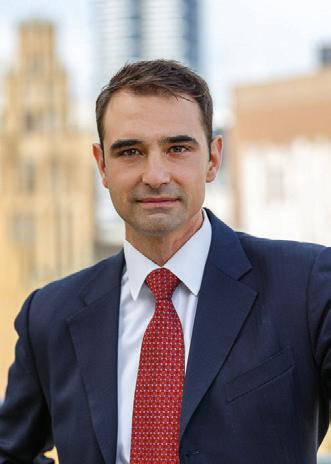
According to Mr Kent, the core function of a city Chief Resilience Officer is to understand the chronic stresses that affect the city, either currently or in the future, to put in place actions that can either entirely avoid things going wrong, or at least minimise them, and be better prepared to be able to recover when things do go wrong.
Building on this, 100 Resilient Cities established a definition, which Mr Kent also uses to guide his work, of the seven qualities of resilience. The identification of these qualities drew upon decades of research to establish a definitive list.
The qualities are as follows:
♦ Reflective – cities use past experience to inform future decisions
♦ Resourceful – they recognise alternative ways to use resources
♦ Inclusive – cities prioritise broad consultation to create a sense of shared ownership in decision-making
♦ Integrated – they bring together a range of distinct systems and institutions
♦ Robust – they have well-conceived, constructed and managed systems
♦ Redundant – they feature spare capacity purposefully created to accommodate disruption
♦ Flexible – cities have a willingness to adopt alternative strategies in response to changing circumstances
“The important thing with resilience is about understanding that it permeates every single element of a city or organisation,” Mr Kent said.
“There is a massive preparedness element to resilience – of preparing a city, environment or organisation to cope with any chronic stresses that it might face.”
CHRONIC STRESSES VERSUS ACUTE SHOCKS
At Resilient Melbourne, Mr Kent’s role focuses a lot on chronic stresses and considering how they interplay with acute shocks.
Chronic stresses are often defined as ‘slow moving disasters’, circumstances that, unaddressed, weaken the fabric of a city over time. This includes things like climate change, high unemployment, high levels of inequity, over-burdened or inefficient public transportation, and chronic food and water shortages.
Acute shocks on the other hand are sudden, sharp events that threaten a city, including extreme heat, floods, disease outbreaks and cyber attacks.
The distinction is an important one to make, and it exists for a pretty simple reason. The reality is, Melbourne already has some of the best services and organisations in place to deal with acute shocks. But when it comes to the way the city prepares for and deals with chronic stresses, there is room for improvement – which is where Mr Kent and his team come in.
One of the projects that Mr Kent and his team are working on is the Urban Forest Strategy, which will address some of Melbourne’s chronic stresses, including mental and physical well-being and a loss of natural habitat. But in addition to this, the forest will see Melbourne using trees and other vegetation to reduce the urban heat island effect and reduce flooding.
“This is what we get really excited about,” Mr Kent said. “Putting something in place which might achieve one outcome, but can also have a range of flow-on benefits for the city.”
This leads into another important aspect of the work, which is to look for ways to frame resilience-improving initiatives for the city in a positive way.
“A large part of what we do is to try to understand how we can take action in a way that is framed positively, rather than simply framing it negatively, which automatically creates a degree of fear and anxiety, and hence denial or resistance amongst people,” Mr Kent said.
“It’s important that through our work, we actually create a vision of something that is appealing. A lot of what we do becomes about how we shift mindsets and understanding.”
PREPARING FOR DISASTER, NOT JUST REACTING
With Mr Kent spending a lot of his time looking at how we can be better prepared for the different events that might affect a city, he says there is considerable opportunity to invest further at this stage of the disaster cycle for improved outcomes.
“At present, 97 per cent of disaster spending is spent post-fact, when really, that same amount of money should be starting to be invested upfront,” Mr Kent noted.
“By way of example, if we took some of the money we spend in bushfire recovery and invested more of that in burying cables, we would likely be in a better place.”
The reality is, when it comes to resilience, there’s a lot we can be doing to improve our approach at an organisational and city level.
But for Mr Kent, the key is to view these areas for improvement as opportunities to make our organisations and cities happier, healthier and safer spaces to move around in.
“What we want in our society and in our infrastructure is a really healthy mix of diversity of all types. Different sources of energy, alternative modes of transport, different systems on a range of levels, so that when something goes wrong it can be isolated and dealt with, rather than spreading impacts further than they need to go.”
At its core, it’s this capacity for diversity which can make our cities and systems more resilient; and this will be the space where forward-thinking resilience and disaster managers will achieve some of their best outcomes.
77 DISASTER MANAGEMENT
www.infrastructuremagazine.com.au November 2019 // Issue 13
Toby Kent
BUILDING UP TO
SYDNEY BUILD EXPO 2020

Australia’s top built environment experts will meet with industry businesses and vendors at the annual Sydney Build Expo 2020. Taking place on 19–20 of March 2020, the event will showcase the latest in equipment, innovations and developments across Australia’s construction, architecture and infrastructure industries.
Returning for its fifth consecutive run, Sydney Build Expo 2020 is anticipated to expand its scale, scope and outreach beyond preceding trade shows to become the largest Sydney Build to date. Taking place in the very heart of the city, Australia’s most renowned B2B construction tradeshow of the year will be held at the iconic Sydney International Convention Centre. This event is free to attend and only requires registration on the expo’s website to secure a spot amongst the 25,000+ pre-registered attendees.
Promising to be bigger and better than ever before, Sydney Build 2020 will feature more than 350 exhibitors and 300+ Speakers in 21 summits across eight stages. Alongside Sydney Build, the CIVENEX Infrastructure Exhibition and Sydney Transport and Roads Expo will be co-hosted at the venue. These events offer a more focused insight into their relevant fields, however, all three are free to attend under the same ticket and attendees are encouraged to freely explore all areas of the show depending on their interest.
To register for a complimentary ticket, please visit https://tickets.lup.com.au/sydney-build-2020 or for more information head to www.sydneybuildexpo.com.

Sydney Build 2020 19 - 20 March 2020 9:00am- 5:30pm Halls 5-7, Level 4, International Convention Centre Sydney (ICC Sydney)

OPPORTUNITIES FOR ALL
Uniting thousands of construction experts, architects, engineers, designers, government personal and aspiring tradies is no easy task. That’s why Sydney Build Expo has themed it’s 300 top-level speakers into 21 free-to-attend summits which are scheduled to take place on the eight stages scattered throughout the venue’s floor.
These CPD accredited presentations will encompass a plethora of exclusive industry insights; touching upon topics of interest prevalent within the field of construction and shedding light on the first-hand experience of industry professionals. A full list of the summit agendas and more info on the speakers to be hosted across each summit can be found at www.sydneybuildexpo.com/full-conference-program.
The 2020 Australian Construction Awards (ACA) are being co-hosted alongside Sydney Build and are scheduled to take place on the first night of the expo at the Sydney Cricket Ground. ACA is an awards event that recognises the achievements, developments and innovation within Australia’s booming construction industry and features a wide range of categories for solution providers, contractors, architects, developers and local authorities. All awards are free to enter and are impartially judged by a panel of leading industry experts. Any company that services the Australian construction, architecture or design industry is eligible to enter.
More information on the Australian Construction Awards can be found at www.australianconstructionawards.com.
78 November 2019 // Issue 13 www.infrastructuremagazine.com.au INDUSTRY EVENTS // PARTNER SOLUTIONS
For more information on CIVENEX visit www.civenex.com and for Sydney Transport and Roads Expo, visit www.sydneytransportexpo.com
AUSTRALIAN CONSTRUCTION AWARDS

YOU’VE JUST FOUND THEM. LOOKING FOR THE NUMBER ONE MARKETING AGENCY IN THE INFRASTRUCTURE INDUSTRY? Would you like to work with us? Get in touch and we’ll arrange a time to chat. Ph: (03) 9988 4950 Email: info@monkeymedia.com.au www.monkeymedia.com.au CONTENT MARKETING SEO DIGITAL DESIGN SOCIAL MEDIA GOOGLE ADWORDS WE ARE MONKEY MEDIA. Our team uses their industry-specific knowledge to help you reach your target audience. We can help you navigate:
FEATURES SCHEDULE
March
Rail
Spatial
Training
Software,
Smart
Noise
80 November 2019 // Issue 13 www.infrastructuremagazine.com.au
INDEX
ADVERTISERS’
cities Mobility as a Service
and vibration Earthmoving outlook Bridges Ports
development Automated and electric vehicles
surfacing and design, and flexible pavements Intelligent Transport Systems (ITS) DISTRIBUTION SMART CITIES 2020
Urban
Road
2020
13 December 2019
Deadline:
Equipment Signalling, tracking and control systems
& GIS Condition monitoring and maintenance
and skills Civil construction
communications and connectivity DISTRIBUTION SYDNEY BUILD EXPO LOCATE 2020 June 2020 Deadline: 10 April 2020
Ancor Loc 11 AusRail 43 Australian Rail Technology 31 Bayer Crop Science 56 Hard Metal Industries 13 Hexagon PPM 61 InEight 19, OBC ITS Asia Pacific Forum Brisbane IBC Key Source Rail 37 Position Partners 25 Pyrotek 3 Quality Technical Services 41 Schaeffler Australia 33 Sydney Build Expo 78 Taylors 47 TM Stagetec Systems 42 Vermeer IFC-1 WAGO 51 West-Trans 17
Deadline: 25 September 2020 AusRail IoT & cloud communication Airports Disaster management Corrosion Landscaping and vegetation management Machine learning Recycling and waste management DISTRIBUTION AUSRAIL AUSTRALIAN AIRPORTS ASSOCIATION CONFERENCE
2020 Deadline: 3 July 2020 Road and traffic Concrete Tunnels Safety and risk management Cranes & heavy lifting Sustainability Freight and logistics Asset inspection & drones/UAVS Asset management Security and critical infrastructure DISTRIBUTION ASSET MANAGEMENT FOR CRITICAL INFRASTRUCTURE 2020
November 2020
September

REGISTRATION NOW OPEN!

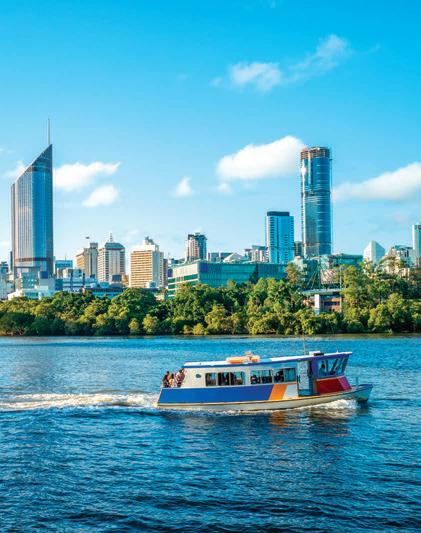
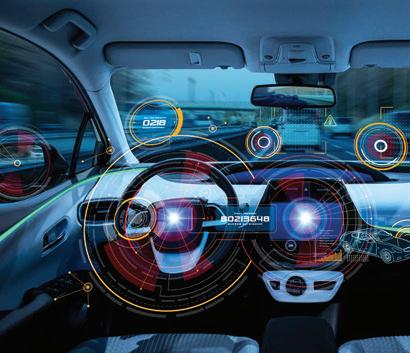
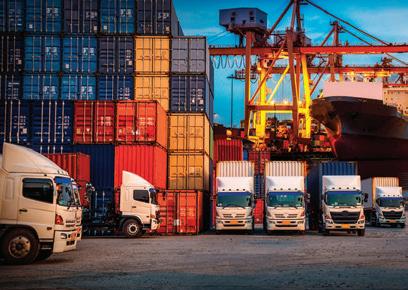
Hosted by Program themes ITS Innovation Creating Liveable Communities Mobility as a Service, People and Environmental Sustainability Data Analytics and Artificial Intelligence in Transport Connected and Automated Vehicles, Vehicle and Network Safety, Internet of Things in Transport Transport Pricing, Tolling and Charging Freight and Logistics, including Aviation and Maritime Policy, Standards and Harmonisation Intelligent Transport = Accessible Transport
For the Asia Pacific Forum for Intelligent Transport Systems 2020 Over 1,250 attendees and 90 exhibitors from Asia Pacific and surrounds itsap2020.com

A NEW WAY TO BUILD Finally, take control of your projects at every phase of construction. Find out how with InEight software. InEight.com/infrastructure









































































































































































































